The unique feed to improve production, health and fertility.



The benefits of omega 3 all year round.
Lintec is a specific variety of linseed, high in Omega-3 fatty acids, that has been specially processed to produce a unique feed for dairy cows. It is a sustainable high quality feed, suitable for all dairy production systems.







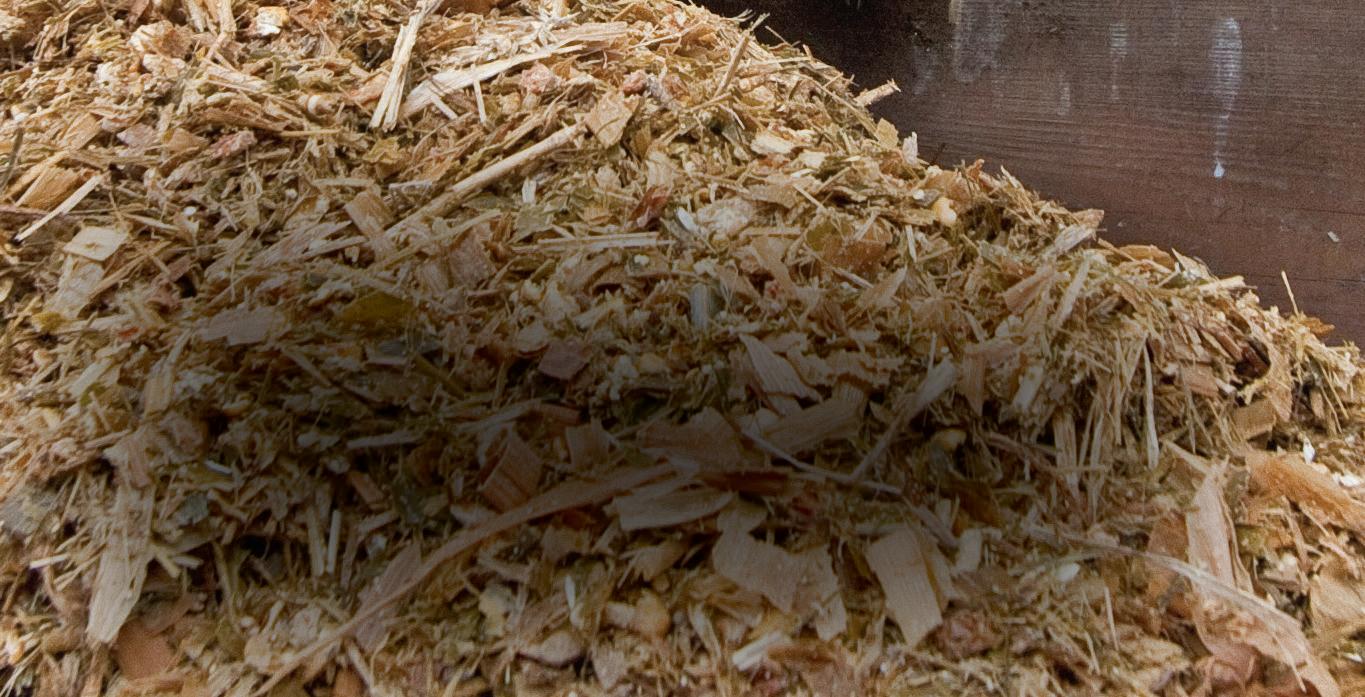
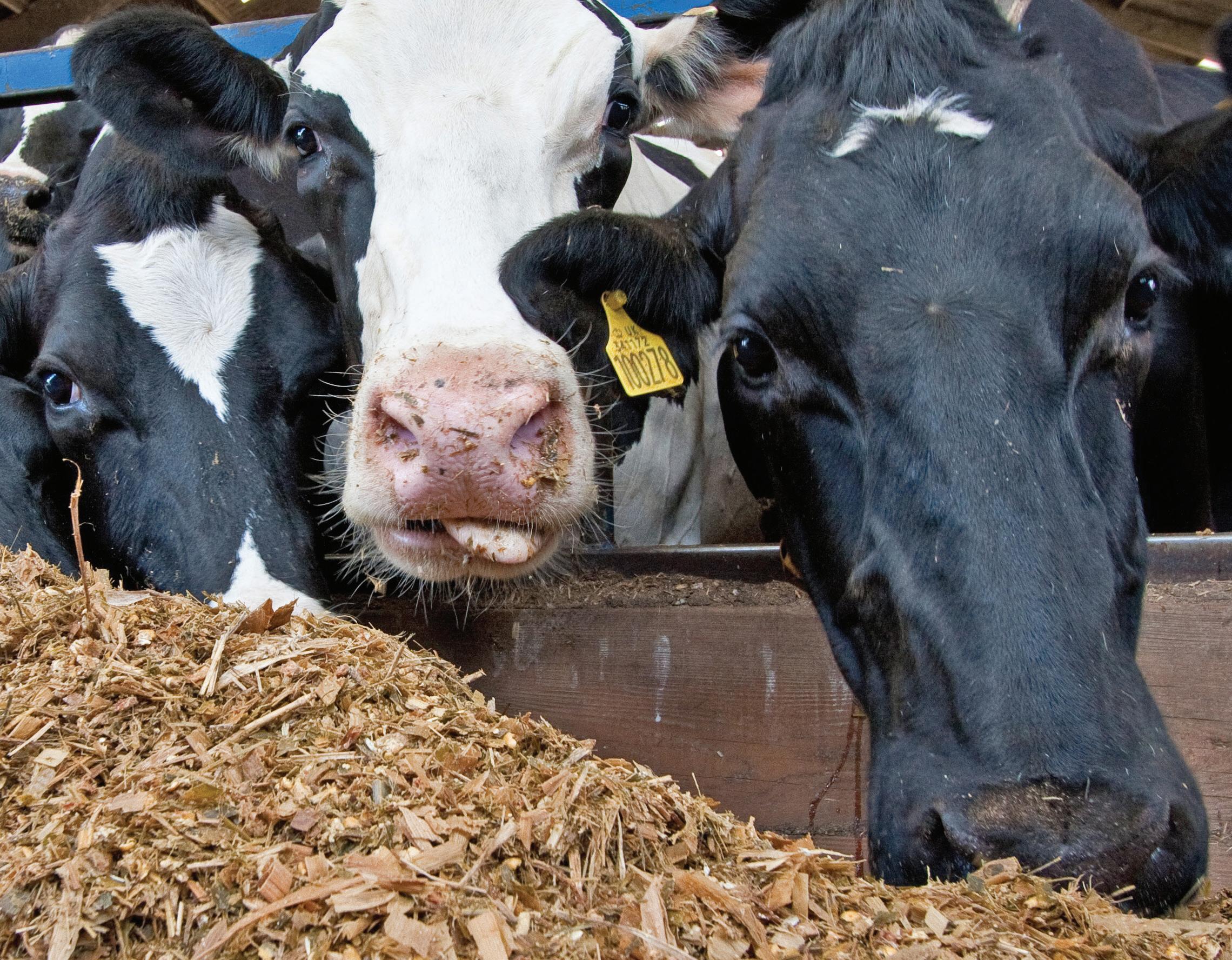
Dairy Matters
Why profit per cow is the main metric
Pages 14-15
Volume 70 Issue 3
DAIRY-TECH REPORT
All of the highlights from this year’s event
Pages 58-65
GRASSLAND & FORAGE


Focus on harvesting, silage machinery and technology
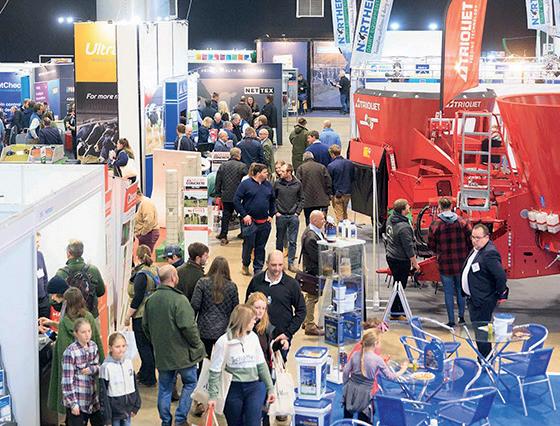

Pages 32-56
high oil content (Omega-3)
high digestibility



high protein
COW DEVELOPMENT
Pages 26-27
MILK PRICES
Pages 68-70
Importance of starch in each stage of life TIP
high energy
www.forfarmers.co.uk
For more information contact your local account manager or call: 0330 678 0982 info.uk@forfarmers.eu
OF THE MONTH: First impressions count when looking to recruit staff – p22
DAIRY FARMER
March 2023


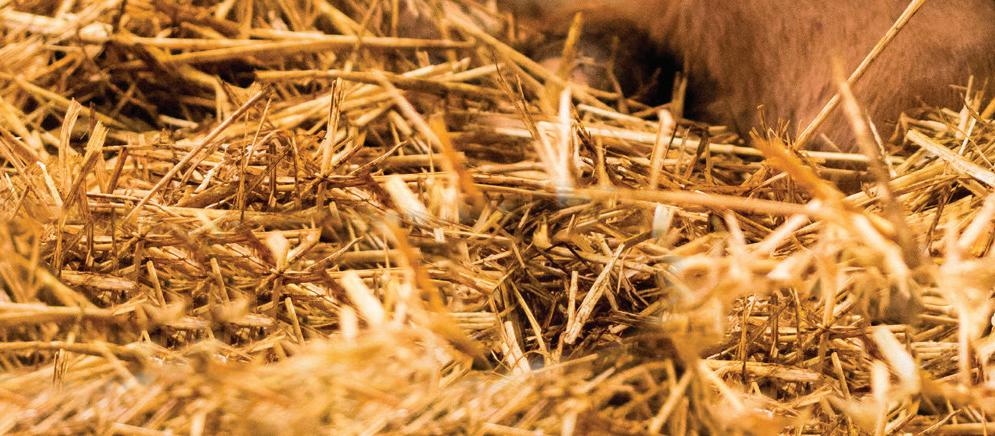
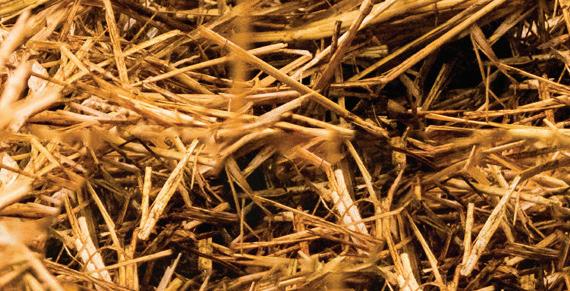
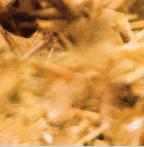

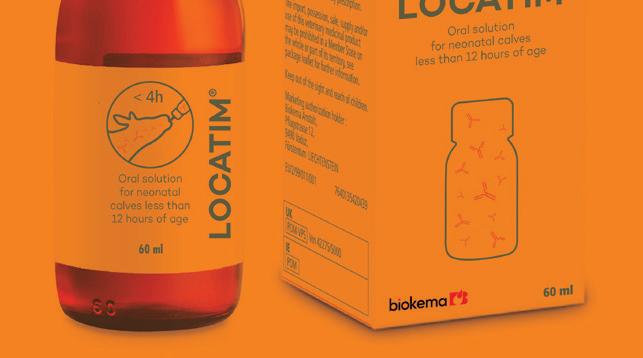
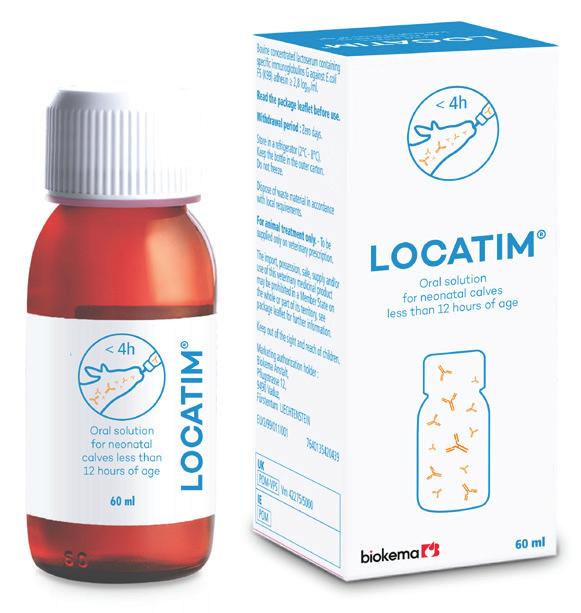

Locatim contains Bovine concentrated lactoserum containing specific immunoglobulin G antibodies against E. coli F5 (K99) adhesion ≥2.8* log /ml. IE: POM UK: POM-VPS. Advice on the use of this medicine must be sought from your veterinary surgeon. Further information available from the package leaflet, SPC or from Forte Healthcare Ltd. Date of preparation: Jan 2023. FOR232. * Nussbaum O et al. (2022) Efficacy of the oral administration of specific immunoglobulins against E. coli, rota- and coronavirus for the prevention of neonatal calf diarrhoea in dairy herds. In: World Buiatrics Congress 2022 abstracts. Madrid, Spain 4th-8th September 2022. pp204-5. Forte Healthcare Ltd, Block 3, Unit 9, CityNorth Business Campus, Stamullen, Co. Meath, K32 D990. Tel: 01 8417666 (IE) +44 1292 800013 (UK) Email: enquiries@fortehealthcare.com Technical Enquiries: vets@fortehealthcare.com | www.fortehealthcare.com Calf scour outbreak causing problems despite your best efforts? This means your calves need more antibody protection against scour. Cut out the losses, ask your vet for LOCATIM® today! Locatim is a highly concentrated sterile solution of specific antibodies against calf scour pathogens proven to protect newborn calves against scour*. Locatim is the only prescription medicine providing guaranteed levels of oral antibodies against calf scour.
Contacts
Editor Katie Jones 07786 856 439 katie.jones@agriconnect.com
Content Editor/Designer
Mike Begley 01772 799 405 mike.begley@agriconnect.com
Picture Editor
Marcello Garbagnoli 01772 799 445 marcello.garbagnoli@agriconnect.com
Head of Commercial Solutions
Mike Hartley 01772 799 532 mike.hartley@agriconnect.com
Account Manager
Mark Jackson 01322 449 624, mark.jackson@agriconnect.com
Classified Advertisements 01772 799 400 fgclassified@agriconnect.com
Advertising Production
Justine Sumner 01772 799 437 Fax: 01772 796 747 justine.sumner@agriconnect.com

Circulation and subscriptions 0330 333 0056 help@subscribe.farmers-guardian.com

Subscription rates: UK £65 a year
Europe: £85 World: £95
ISSN 1475-6994
© Farmers Guardian 2023
All rights reserved. No part of this publication may be reproduced or transmitted in any form or by any means, electronic or mechanical including photocopying, recording, or any information storage or retrieval system without the express prior written consent of the publisher. The contents of Dairy Farmer are subject to reproduction in information storage and retrieval systems.
Dairy Farmer, Unit 4, Fulwood Business Park, Caxton Road, Preston, Lancashire PR2 9NZ

Origination by Farmers Guardian, Unit 4, Fulwood Business Park, Caxton Road, Preston, Lancashire PR2 9NZ. Printed by Precision
Colour Printing, Halesfield 1, Stirchley, Telford TF7 4QQ. No responsibility can be accepted by Dairy Farmer for the opinions expressed by contributors.
a word from the editor
It has been quite some start to 2023 and the ‘how low will it go?’ question continues to dominate conversations about milk prices.
But despite this, there was still a positive atmosphere at last month’s Dairy-Tech, where there appeared to be lots of farmers researching potential farm investments and having conversations about the future of the industry and their own businesses.
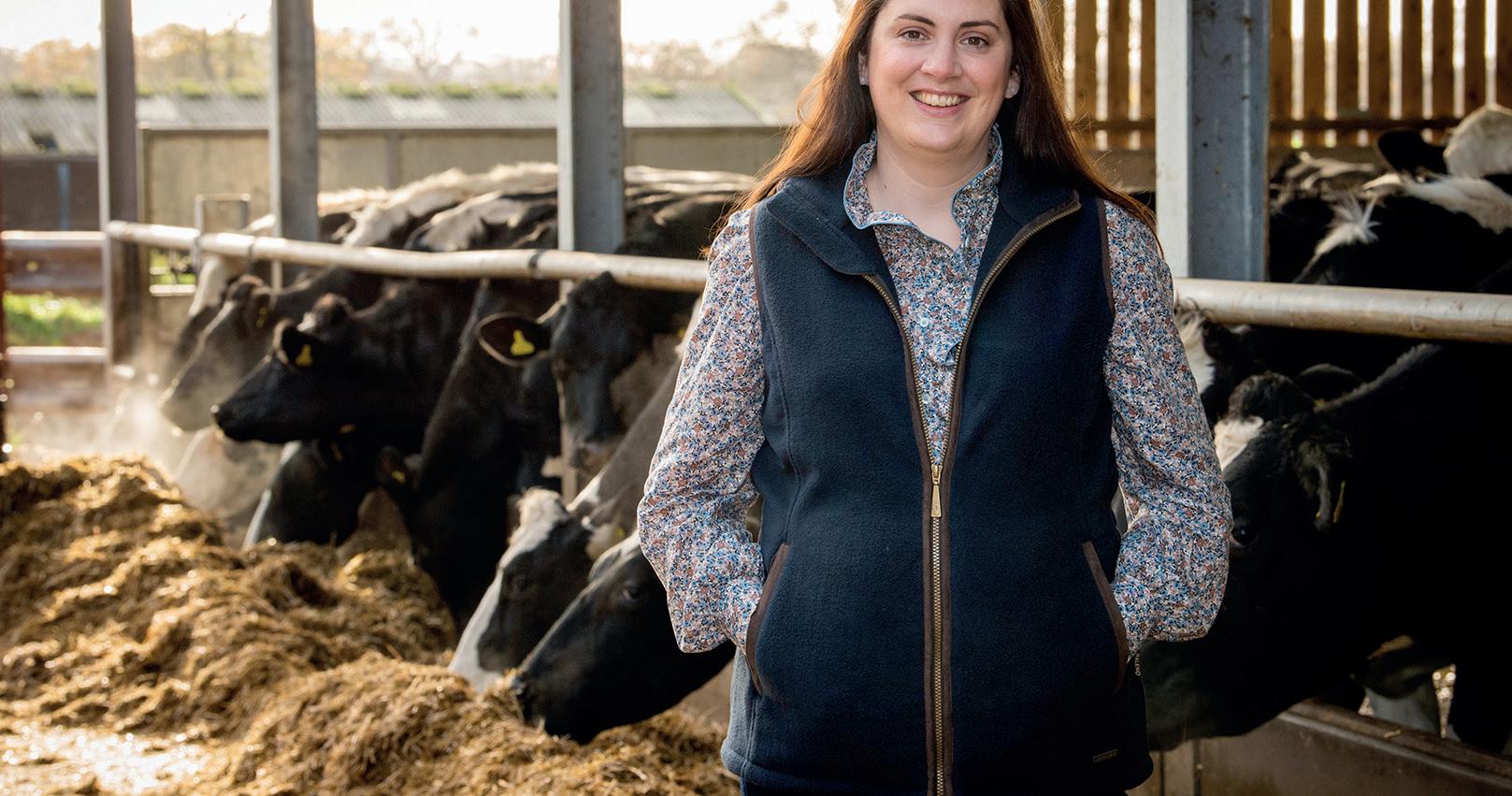
Perhaps this is because the drop in milk price has been well predicted by many and farmers feel be er equipped to deal with it, but nevertheless it is encouraging to see such positivity, despite the background noise.
A key theme of the Dairy-Tech event was sustainability, a word we seem to hear a lot.
And with input costs still on the high side, dairy farm sustainability will undoubtedly be driven by making the most of home-grown forage, no ma er the system and be it in the form of grazing or conserved feed.
Spring on its way
With it now starting to stay light for longer and the welcome signs of spring creeping in, cows will soon be out for some and thoughts will begin turning to maize drilling followed by rst cut silage.
In this edition we feature farmers who are making the most of their forage-growing potential, look at the latest advice on maize establishment and talk to experts about what can be done to rejuvenate swards.
3 MARCH 2023
Arla navigate balance as v
Striking a delicate balance between keeping farmers producing milk and ensuring dairy products were available and accessible to the public was the key achievement for Arla in 2022, with the co-operative flagging another difficult year in 2023.
Farmgate milk prices were expected to continue to decline until at least the summer, although Peder Tuborgh, Arla Foods chief executive, speaking as Arla revealed its results for 2022, said Arla would not drop back to the prices seen before 2022.
He said: “But the very, very super high milk prices will not be maintained in 2023.”
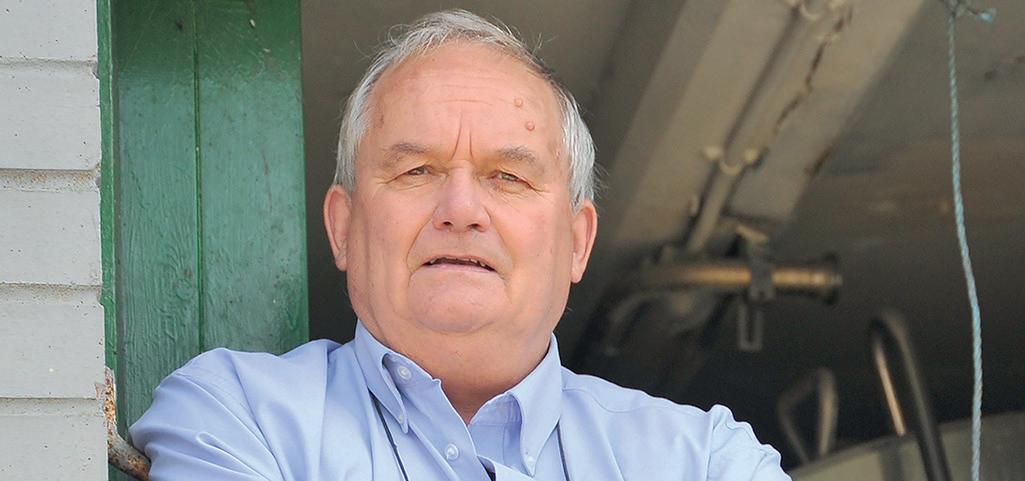
Arla Foods UK revenue rose 17.5% in 2022 to €3 billion (£2.6bn). But with the cost of living crisis hitting spending
habits, total branding growth saw a slowdown of 7% following two years of exceptionally high growth.
The foodservice division Arla Pro grew by 17%.
Average milk prices increased by 40.5% in 2022.
Arla achieved a net profit allocated to farmer owners of €382 million (£338m) or 2.8% of revenue.
Balance
Balance was the key theme of the year for Arla UK chief financial officer Simon Ho.
He said Arla had a responsibility to ensure its farmers stayed in business and had to go to the market and recover the price increases needed, but balanced this against keeping dairy available and accessible for shoppers.
“It is not an easy discussion to have [with customers],”
Farmers reveal strangest questions from the public
JIn an online survey, farmers have revealed the strangest and funniest things they have been asked by members of the public about what they do.
From ‘what type of cow produces semi-skimmed milk’ to ‘do pigs make cheese’ and questions about whether cockerels lay eggs, it is clear there is still a long way to go in bridging the gap between farmers and consumers.
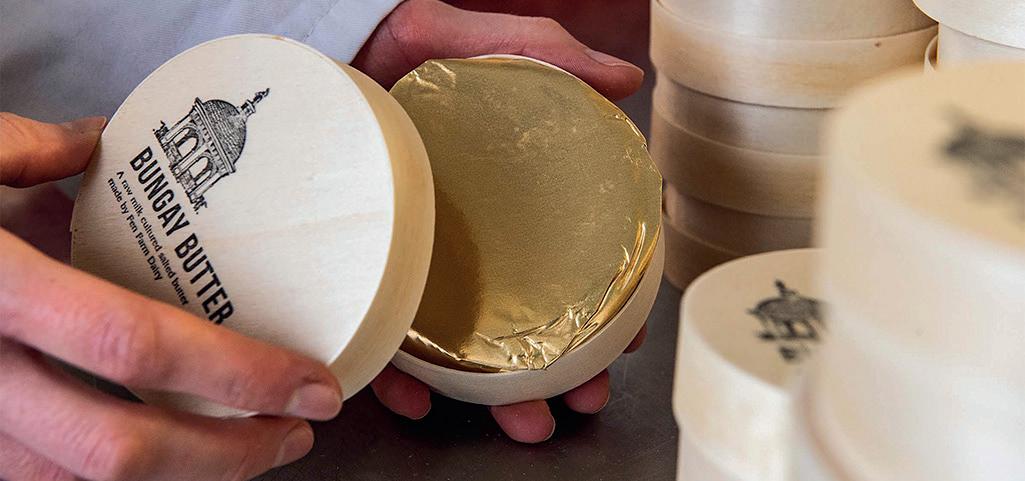
Farmers also faced accusations of being rich and high food prices being due to their ‘greed’, as well as comments
that livestock was 100% profit as they just ate grass.
The public also asked why there was a bull with dairy cows, if you feed beef to cows and if cows would explode if the farmer forgot to milk them.
Dan Yates, founder of Pitchup.com, said farm stays were helping to educate the public, but there were clearly still a lot of misconceptions.
He added agritourism was a ‘great opportunity’ to engage with the public and show and tell them first hand how food is produced.
NEWS 4 MARCH 2023
MARCH 2023 VOLUME 70 ISSUE 3 8 DAIRY TALK Updates from Dan Burdett and Becky Fenton 10 ON FARM Dairy harnesses heat from cow muck to produce energy on-farm 14 DAIRY MATTERS With Chris Flint of Kite Consulting 16 VET’S VIEW Getting a vet’s perspective 18 ANIMAL HEALTH How regular blood profiling can lead to profitability 20 WORLD DAIRYING Focused breeding strategy in Croatia 22 RECRUITMENT 24 REGENERATIVE 26 COW DEVELOPMENT 28 BRITISH CATTLE BREEDERS CLUB CONFERENCE 30 INDUSTRY DEBATE 32 GRASSLAND & FORAGE Harvesting, silage machinery and technology 58 DAIRY-TECH REPORT Highlights from this year’s event 66 MACHINERY New Holland prototype on the road to electric 68 MILK PRICES 72 MILK ANALYSIS 74 NEW PRODUCTS Products hitting the market 78 GOOD EVANS ‘Brexit is surely one of the biggest cons of all time’ 80 BUSINESS CLINIC Global price fall governs UK milk market 82 RESEARCH 10-12 On Farm 78-79 Good Evans
What’s inside?
s the delicate olatility continues
Arla has said total branding growth saw a slowdown of 7% due to the cost of living crisis.
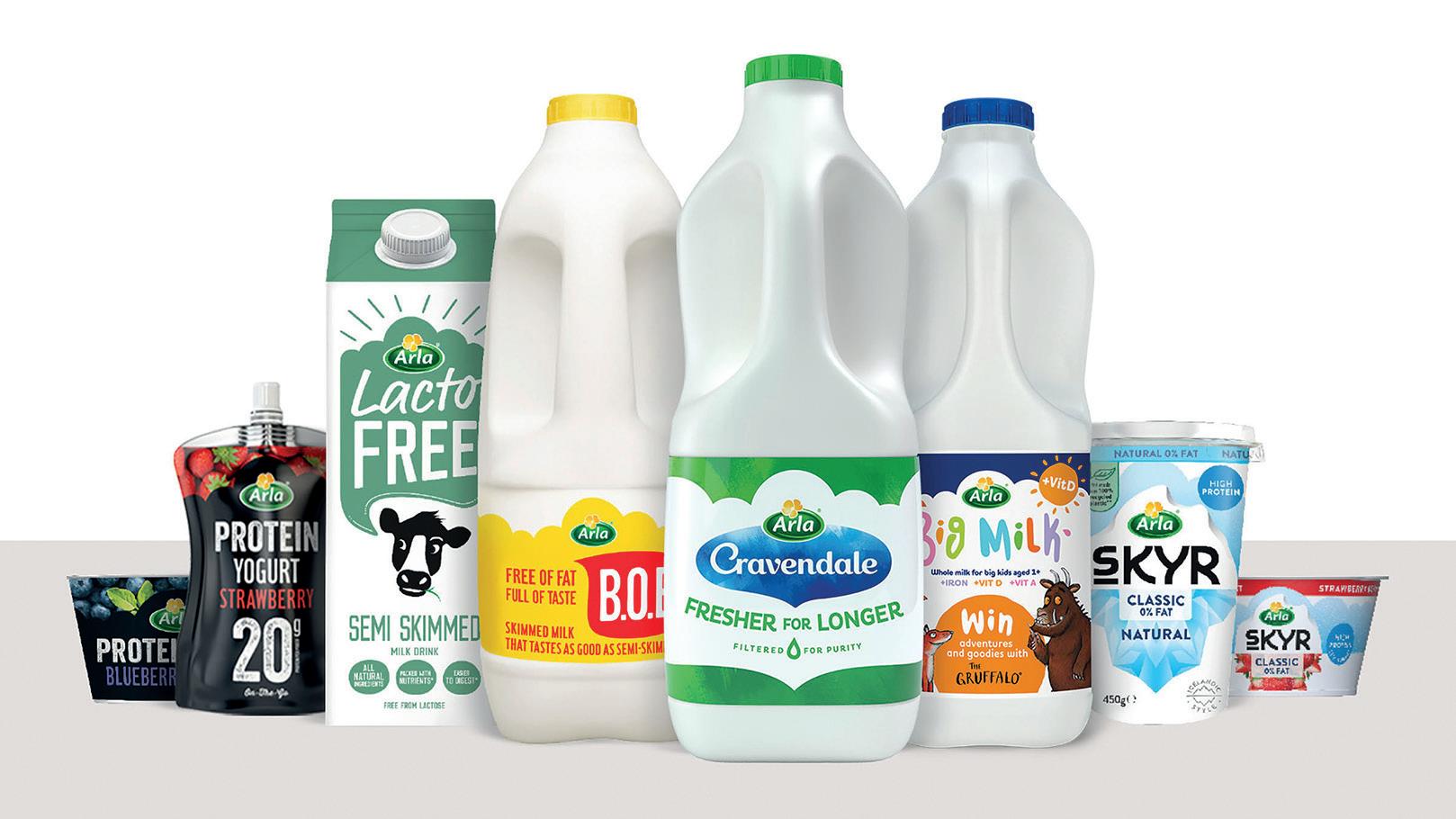
Interest rises ‘another blow’
JA further rise in increase rates last month will be another blow for farming businesses already feeling the squeeze financially.
The Bank of England raised its base rate of interest from 3.5% to 4%, the highest rate in 14 years, in an effort to combat inflation.
While the bank said the UK was still set to enter recession this year, it was expected to be shorter than previously thought, with the rate inflation seeming to be slowing down.
Martyn Dobinson, partner at Saffery Champness and a member of the firm’s Land and Rural Practice Group, said it was ‘yet another blow for those borrowing’.
he said, adding other dairy and food companies were in the same position.
He said customers have had those meetings and shoppers also understood why prices were rising.
As a result of the cost of living crisis, customers were trading down as budgets were squeezed, impacting branded sales and organic.
In 2023, Mr Ho said the key thing was acknowledging the volatility.
He said: “There is a sense
of normalisation of the costs on-farm, but labour is really short. There is a little bit of softening of utilities. But the level is still very high.”
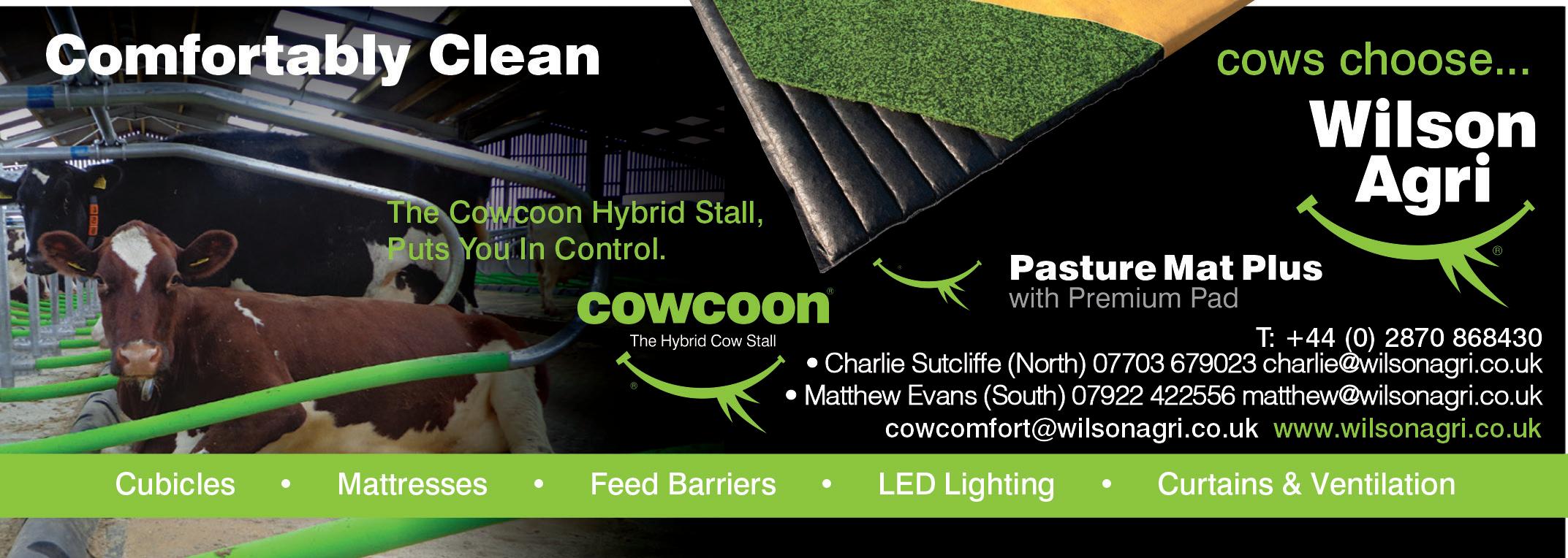
He added that Arla had to weigh up how it continued to keep farmers’ businesses sustainable.
Mr Ho highlighted farmers were facing challenges from labour supply, to machinery availability to the cost of utilities.
He said: “What we are focused on is optimising the value of milk.”
He said: “There are likely to be further interest rate rises ahead. In these really difficult times, we cannot emphasise enough the importance of budgeting and planning ahead, and managing cashflow and debt effectively to ride out the storm.
“Everyone is facing an uncertain climate and extreme pressure on businesses and the farm and rural business sector is no exception. If you are uncertain as to what steps you can take then do speak to your professional adviser.”
NEWS 5 MARCH 2023
There is a sense of normalisation of the costs on-farm, but labour is really short SIMON HO
TB cattle vaccine and skin test move to next phase
The Animal and Plant Health Agency (APHA) has announced that eld trials for a ca le vaccine and new skin test for bovine TB have moved to the second phase.

e rst phase, which began in July 2021, focused on the safety and performance of the detect infected among vaccinated animals (DIVA) skin test in unvaccinated animals.
Performed on 10 farms with 524 participating animals, phase one was completed in May 2022 and analysis of the results is in progress.
e second phase of the eld trials will assess the safety of the Ca leBCG vaccine and the safety and performance of the DIVA skin test in vaccinated ca le.
So far, laboratory studies have indicated that the vaccine and DIVA skin test are safe and that the test performs well, under controlled APHA facility environments.
e eld trials are taking place on commercial livestock farms across the country and are due to be completed in 2023.
Phase two will involve at least
ve farms with 600 animals participating, 300 of which will be vaccinated with Ca leBCG, while the remaining half will receive a placebo. It is hoped that the combination of Ca leBCG vaccine and the DIVA skin test will
be deployable in the next few years.
In a joint statement, the Chief Veterinary O cers from England, Scotland and Wales, said: “If this next phase is successful, this project takes us one step closer to a vaccine to be used in conjunction with other
measures to tackle this insidious disease which impacts livestock farmers across the globe.”
APHA will use information from the trials to support bids for marketing authorisations and international recognition.

Cost of living crisis to hit farm incomes
JHigher input costs alongside a price sensitive consumer means the cost of living crisis is set to hit farm business margins hard in 2023.
In ation will have a double impact on farmers due to rising costs and reduced consumer purchases, according to the latest AHDB Agri-market Outlook.
Sarah Baker, AHDB economic strategist, said: “ e main issue with in ation is it drives down the real rate of growth in an economy, erodes households’ disposable
income and leads to more cautious spending pa erns.
“Coupled with rising input costs for farmers, the industry will face ongoing dual challenges this year.
“As in ation subsides, it does not mean prices are dropping, rather that they have stopped rising as quickly as they were before.
Standards
“ erefore, peoples’ living standards will take some time to catch up, depending on income growth. Consumer con dence, along with
demand, will take some time to recover, despite in ation dropping as it is expected to during 2023.”
For dairy, AHDB noted GB milk production was forecast to record marginal growth in 2023 in the region of 0.3%.
However, there is some risk of a contraction in production if margins deteriorate and farmers react to the dropping farmgate prices.
Despite some recent signs of lower in ation in agricultural input costs, replacement costs through 2023 will remain high, pu ing
pressure on cash ows. Global dairy demand is likely to remain challenged by low economic growth, although there is potential for improved import demand from China later in the year.
Domestic demand is also expected to be impacted by a squeeze on consumer incomes, with all products seeing lower sales.
Farmgate prices are expected to decline in the rst half of 2023, with some potential for this to abate in the second half if in ation subsides and demand recovers.
NEWS 6 MARCH 2023
The second phase of the field trials will assess the safety of the CattleBCG vaccine and the safety and performance of the DIVA skin test in vaccinated cattle.
ARION 400. Enjoy a sense of freedom.
400.
The ARION 400, Stage V offers: 85-155 hp
Intelligent operator assistance systems
Smart data management
Efficient connectivity
Exceptional cab comfort
Ask your dealer for a demonstration or visit claas.co.uk

more
Find out
about the ARION
DAIRYTalk
Dan Burdett
Dan and his family own and run the 300-hectare (741-acre) Cockhaise Farm, near Haywards Heath, West Sussex. The farm is home to an organic autumn-calving herd of 240 Holstein and Friesian crosses. He also contract farms another organic autumn-calving herd of 220 cows at Bore Place, near Edenbridge, Kent.
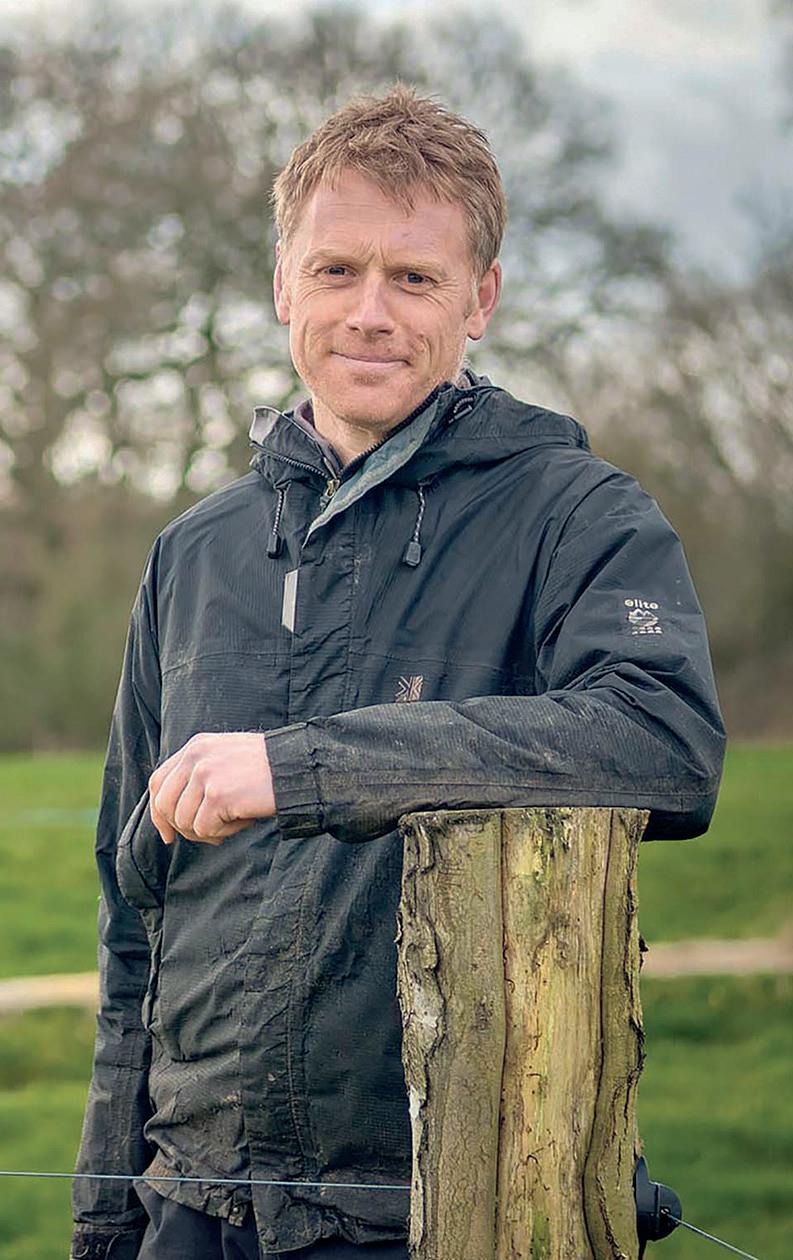
After last summer it was looking as though we would struggle to hit average annual rainfall (about 800mm) here in Sussex. However, the weather gods showed us how to turn things around pretty quickly, with more than 500mm of rain from November to January, leaving us looking at a year of feast to famine and back to feast again.
Our long-term aim is to create soils which are able to hold on to all this rain when it comes to enable us to see through those leaner times in much better health.
We are definitely not there yet, possibly never will be, but it is important to keep aiming high and enjoying the journey we are on at the same time.
After a tense wait to see if they would arrive in time for mating, our CowManager heat detection system has proved to be an instant hit these last 10 weeks.
Gone are the days when I would prowl around the yard day and night in the hope I would spot that cow bulling that nobody else had, never being able to relax, wondering if we were doing all we could to get the best submission rates.
After a week of using the new system and manual observation side by side, we quickly realised the system was winning hands down and we dropped the ritual of standing in the yards for three hours a day during peak mating.
Our submission rate improved from 90% to 95% in the first three weeks from previous years, something I had struggled to attain with manual observation alone.
Conception
As we will not scan until April, it is too early to see what effect it may have on conception, but it certainly feels like a successful season.
As I write this at the beginning of February, the first big milk price drop from Arla has just been announced, perhaps the first of many as the market continues its bearish overtones.
The only consolation for us is that it has coincided with being able to turn the cows out back onto grass on both farms and we can drop bought-in feed rates over the coming months.
In the next month I will start to put together budgets for the next financial year, the time when I try my best to gaze into a crystal ball for both feed and milk price.
My best bet is a return to the prices of two years ago, which would mean dropping at least 10ppl.
The issue, as always, is our feed costs, which certainly will not be back to those levels and are the cause of most of my worries going forward.
Each year we nibble away at the edges of winter, keeping cows out for a few more days, cutting cake a bit earlier, but it sometimes feels like I am the boy with his finger in the dam, wondering how this can work moving further into the future.
We have run a profitable and robust system organically for more than 20 years and I intend to make sure this continues for another 20.
Often the answers lie in bringing the combined knowledge of a group of like-minded farmers together, something a few of us have done here in Sussex recently.
Having the confidence to speak freely and openly about our issues has helped to stop the eternal worries whirling through my mind, and instead find modes of action which help move us forward.
8 MARCH 2023
“ It sometimes feels like I am the boy with his finger in the dam, wondering how this can work moving further into the future
Becky Fenton
Becky Fenton and husband Paul milk 180 pedigree Holsteins under the Springlebee prefix at Centenary Farm, a Cheshire county council farm. In 2021, they bought a farm in Staffordshire and they plan to farm there once the new dairy set-up has been built.
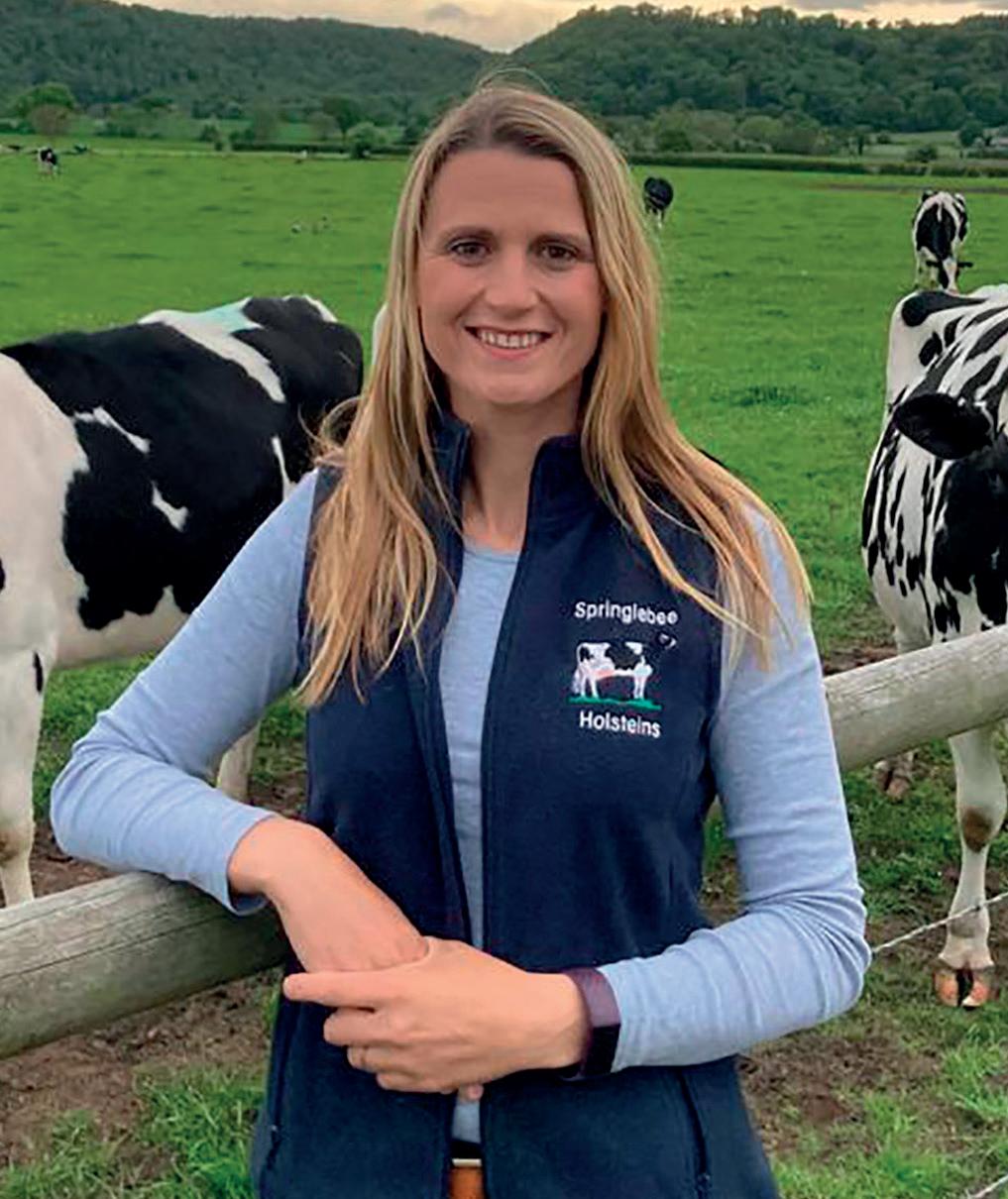
Istarted my year by attending the Oxford Farming Conference (OFC). It was the first time I have ever attended an agricultural conference.
The launch of the event was at the Oxford University Museum of Natural History. It was a spectacular location.
Over the three days I felt some sessions were a little airy fairy and not that applicable to actual working farmers. At one point I wondered if I attended the correct conference when a speaker was talking about NASA and criminal law. The highlights, however, were the OFC debate, meeting people and some truly inspirational stories of ‘succeeding against adversity’.
What was apparent to me, however, was how many people, careers and businesses depend upon farmers. And without farmers these are all surplus. We, the farmers, are their greatest asset.
With the nights drawing out and the pleasant sight of snowdrops, spring feels like it is only around the corner. Winter has been okay here and, apart from a few frozen pipes, cold hands and an invasion of starlings, we have survived it.
We will have enough forage to see us through to first cut. However, some of it is 35 miles away, but at least we have got it.
We have had a change in system for our calves. Previously we have always sold beef calves under 42 days. But with calf prices at rock bottom, we had a rethink of what we should do. We concluded that we would have enough space (just) to accommodate the extra calves and will turn them out to grass and most likely sell as stores.
System envy
We saw our friend turn out their cows yesterday (early February) and I definitely got system envy.
My husband and I often look at the block calving herds and can see the driving factors for this style of farming. But we both know we would not be able to keep such a tight ship as they do.
Talking to a dairy expert from AHDB at the OFC, I asked the question ‘which is the best type of system?’.
He answered: “The top 25% are a mix of systems. If the farmer is doing the job properly, they will make money. Otherwise, an autumn block is financially the best system.”
I joked: “We have Holsteins calving all year round on a low-input, high-output system.”
What is clear is that there is a huge amount of volatility in dairy farming. The dairy industry has already received dramatic price reductions and is probably going to incur more. You start thinking how low will it go?
We are hoping not to see another year like 2016.
And interest rates increasing again just to put more pressure on.
Last year we bought our fertiliser forward for this year. At the time we thought it was the right decision. Hindsight says not. In farming we will all make some good decisions and some bad decisions, but sometimes you just need a bit of luck or a crystal ball.
In January we managed to get away for a week skiing in France, leaving three students in charge. We were just getting our skis sorted and we had a phone call. All the dry cows had got mixed up with the milkers after the gate which had never been knocked off in six years was off.
Several WhatsApp videos later the issue was resolved. The students did well and we had a fabulous break.
“ We saw our friend turn out their cows yesterday and I definitely got system envy
9 MARCH 2023 DAIRY TALK
hen raw milk sales took off at Fen Farm, Bungay, Suffolk, Jonny Crickmore was inspired by the direct sales route.
In the 12 years since, the farm business has successfully added cheese and butter making to its portfolio and has progressed from selling raw milk via an honesty box shed near the side of the road next to the farm to retailing products to all corners of the UK and internationally.
Farming in partnership with his wife Dulcie and parents Graham and Frances, Jonny is the third generation of his family to farm at the 405-hectare (1,000-acre) unit, split roughly 50/50 between owned and rented ground.
Sales
In just over a decade, the system at Fen Farm has moved away from a more intensive, high input model and Holstein herd in favour of the Montbeliarde breed with the view to focusing on direct sales diversifications and cheesemaking in particular.
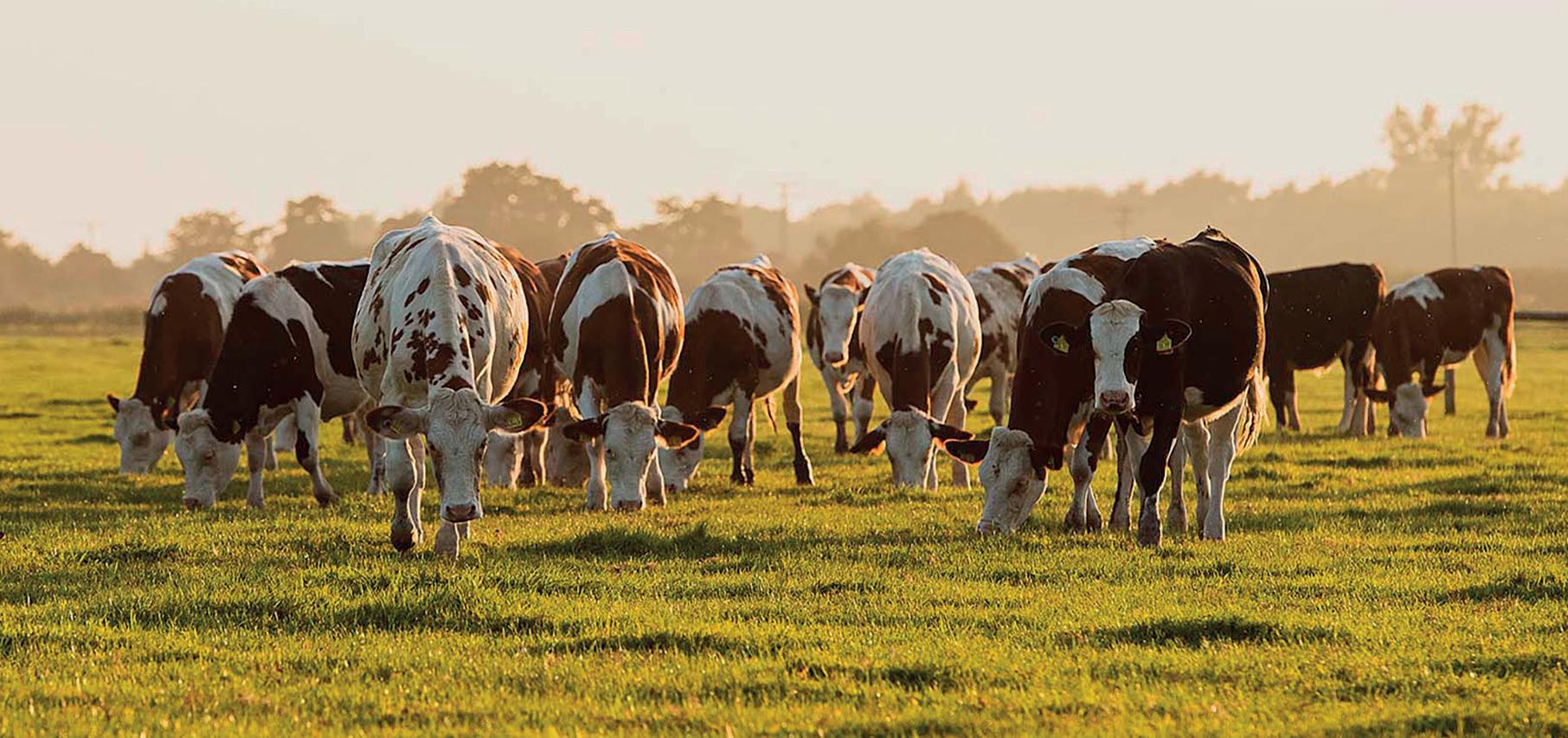
Jonny says: “The journey into cheese production came a year after raw milk sales began. There was not really anyone [making cheese on-farm] in our area and, spurred on by people wanting to buy the milk from the farm gate,
WDairy harnesses muck to produce
An intuitive approach to sustainable energy use has seen Jonny Crickmore and his family install a unique system to harness energy for their dairy farm, raw milk, cheese and butter making diversifications. Hannah Park finds out more.
to a 320-cow predominantly Montbeliarde herd, together with some New Zealand Jersey crosses, which are run on a 50/50 split spring and autumn block calving system.
Jonny says: “We started to sell out the Holsteins and initially bought-in 72 Montbeliarde cows from France, which we have built on to grow the herd.
Promote
“Cows are mostly pure-bred Montbeliarde now, but we have bred some New Zealand Jersey-type genetics into the spring calving block to promote butterfat in the milk during spring.”
we began visiting cheesemakers around the UK to learn more about cheesemaking.
“This led us to focus our efforts into making an unpasteurised brie with the ambition to make a cheese as

good as the French, which is where the Montbeliarde cow came in. The result is our Baron Bigod Brie, one of only a handful of its type in the world to be made in-house on-farm.”

Today the farm is home
The forage-based system sees the herd typically graze from March until November across the 93ha (230-acre) grazing platform, with cows fed a total mixed ration while housed in winter.
Artificial insemination is used until the last three weeks of
10 ON FARM MARCH 2023
The journey into cheese production came a year after raw milk sales began
JONNY CRICKMORE
Butter and cheese making are now important assets to the farm.
Mostly pure-bred Montbeliarde now make up the herd numbers.
heat from cow energy on-farm
breeding, with any returners put to either an Aberdeen-Angus or Hereford bull. Everything is then kept and nished onfarm, which sees bulls and beef heifers taken to 18-22 months old and sold.
Yield

Cows are milked twice daily via a Fullwood 16/32 swing over parlour, with an average annual yield per cow of 8,000 litres, just more than 4,000 litres of which is from forage, at 3.8% protein and 4.3% bu erfat.
As the direct sales diversi cations have grown, so too has the farm team and the business now employs a team of 40 individuals who mostly work on the cheese, bu er and yoghurt making side of things which is all done in-house.
But, hand in hand with growing product demand has been the growing need
Robotic milking and grazing
NEW DeLaval Parlour milking system P100
DeLaval is bringing the benefits of robotic milking and grazing together. The VMSTM V300 series makes this combination simple with its connected solutions. Robotic grazing systems can benefit from reduction in labour cost, milking parlour commitment, cow health improvements and increased milk yields.
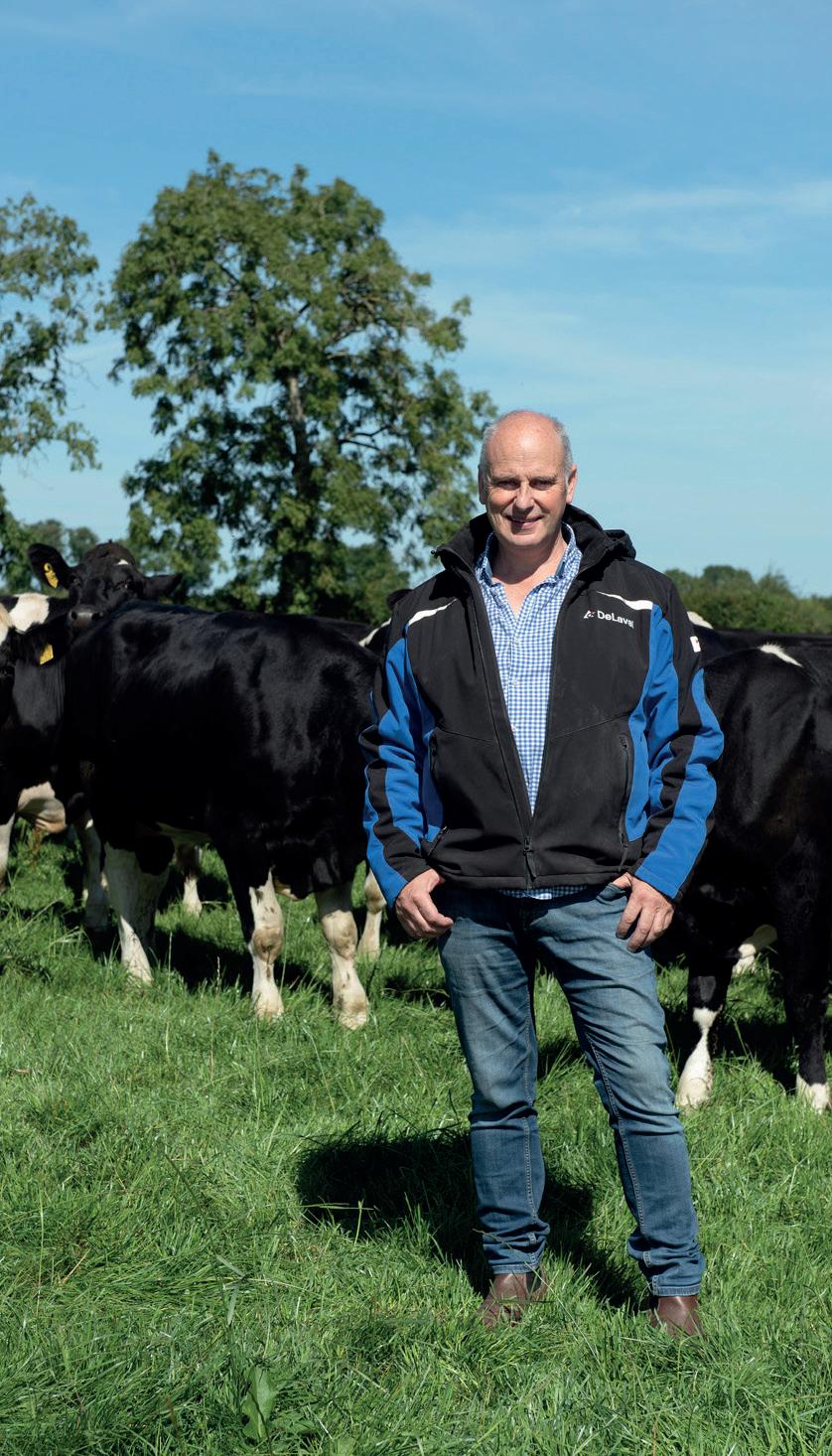
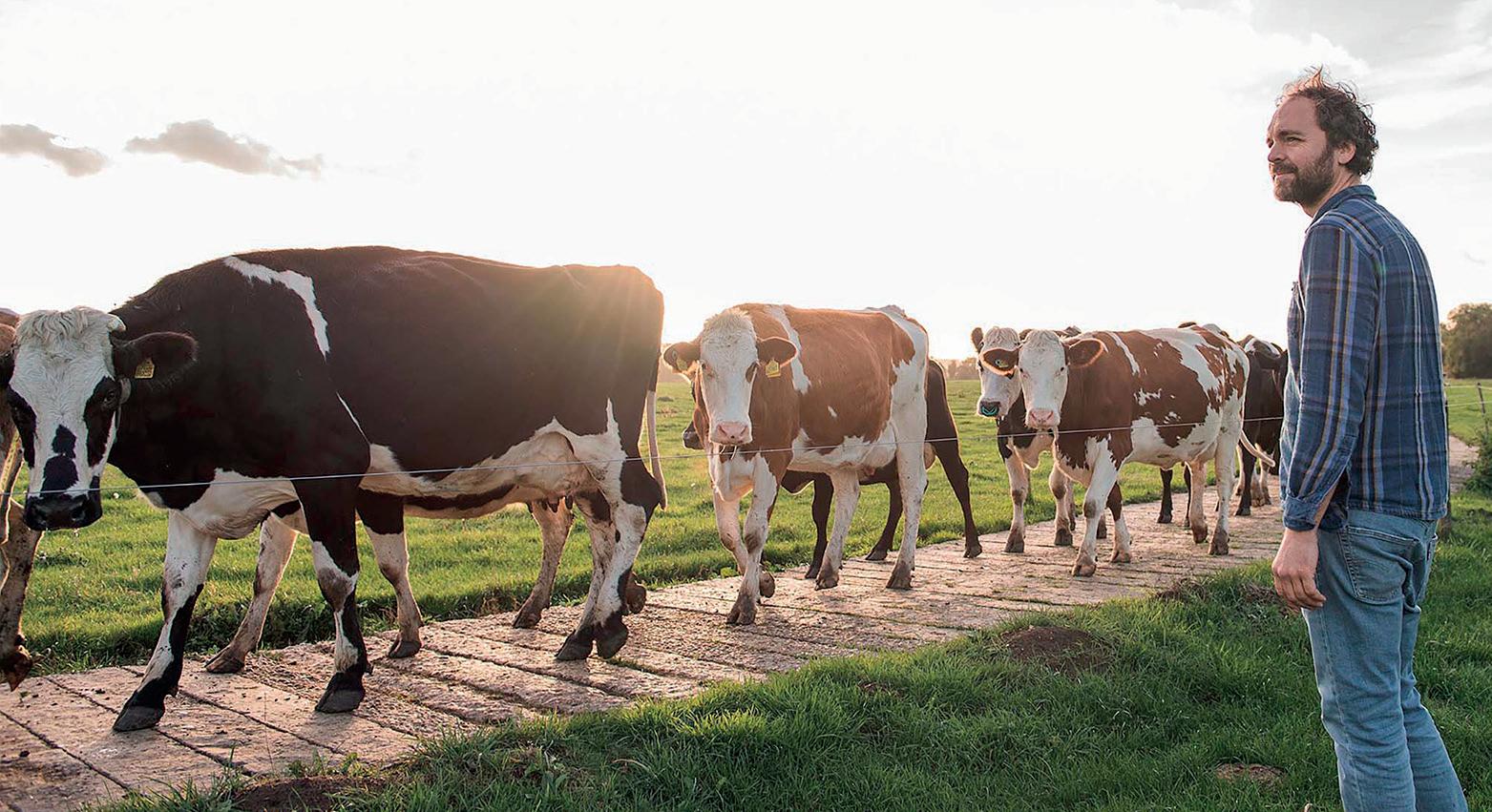
* Compared to parallel parlour with fast exit
The easy way to milk
Putting
it all together
With the DeLaval P100, DeLaval created a parlour that is not only easy to operate, but easy to plan and install, easy to maintain, and importantly –

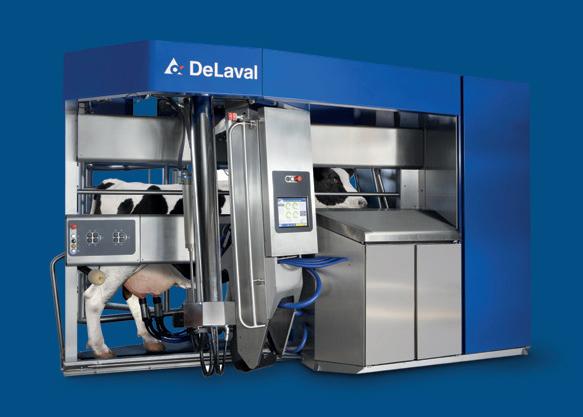
Would you like to find more details about the combination of grazing with robotic milking?
Suspended sequence gates and adjustable breastrail for better farm operation and perfect parlour for retrofit farms.
11 ON FARM MARCH 2023
Third generation farmer Jonny Crickmore oversees Fen Farm.
DONAL MAHER 230 COWS 3X DELAVAL VMS ™ V310
Download our FREE guide now . www.delaval.com
To find out more about VMSTM & Grazing scan here:
for energy to keep apace.
Jonny says: “Our business has grown hugely over the last 10 years and we have felt it important to closely consider how much energy we are using from both a cost-saving and e ciency point of view.”
Installation
Extracting heat was an initial area of thought which eventually led to the installation of a cow muck-powered heat exchange system and solar ba ery storage – a design which, together with the overall approach and a itude towards sustainability at Fen, recently won the farm a global award when it was recognised in Diversey Agriculture and Promar International’s #WeAreDairy competition judging.
Jonny says: “When we started thinking about a renewable heat source, we started by looking at what we had on the farm at a high ambient tem-
#WeAreDairy Award
JDiversey Agriculture, in partnership with Promar International, launched the #WeAreDairy Award in February 2021, with the aim of recognising, celebrating and publicising the positive innovations, improvements
perature already and considered how we could transfer heat without a huge initial investment in big kit.
“ e thing which came to mind was the muck because it was always steaming. I took a probe, stuck it in the cow yard where the muck was quite deep and could not believe it was 43degC. I was convinced there must be a way to harness the heat and use it where we needed it.
“ is got us to thinking about a water pipe we put in too shallow in another yard on the farm – the water in that tank in the winter months was steaming.”
Ultimately it was this concept which led to the decision to lay a mile of water pipe into a bed of sand just beneath the concrete oor of a new cow building which was put up in summer 2019.
Water would then sit in the pipe, under the concrete, for a period of time before travelling to the storage tank which fed the parlour wash system.

and actions being made on dairy farms on a global scale. The judging panel was particularly impressed with Fen Farm’s ingenuity and thorough research into each of its sustainability projects.
Jonny says: “We calculated it so the volume of space in the pipe worked out the same as the water storage tank which fed the parlour wash system [1,000 litres]. Water then travelled from the yard at 43degC into the storage tank, arriving at 35degC with the short distance.”
Circulation
Further steps in the process were added in January 2020 in the form of a circulation pump from the tank to the condenser unit used to cool milk in the bulk tank with a heat exchanger in the middle so the water could also be used for cooling the refrigerant gas.
“ is allowed us to harness heat and use it to cool milk and heat water for the wash tank and increase the water temperature from 35degC to 70degC.
“Although it is not as e ective without ca le in the shed, warmth and sunlight in warmer

months will still heat the water to a certain extent in the shallow pipes under the concrete.
“We did not expect our idea of taking heat from cow muck to win an award, but hopefully our thinking might inspire others to be more sustainable.”
Looking ahead, cheesemaking and business growth look set to continue to go hand in hand for years to come yet at Fen, with its signature Baron Bigod Brie set to launch in the US this year, a move Jonny is particularly excited about for the business.
And elsewhere, products will continue to retail direct via the on-farm self-service farm shop, with a second on-track to open locally this year, online, as well as locally and nationally through shops, distributors and wholesalers and internationally in Europe and South East Asia.
Farm facts
r320-cow Montbeliarde herd

rThird generation family farm diversified into home-produced dairy direct sales
rCheese and butter making on-site
rSelf-designed cow muck-powered heat exchange system installed on-farm in 2019
12 ON FARM MARCH 2023
The thing that came to mind was the muck because it was always steaming
JONNY CRICKMORE
The farm consists of 405 hectares (1,000 acres), split roughly 50/50 between owned and rented ground.

DAIRYMatters
‘Why profit per cow is the main metric from 2023’
Without a doubt, one of the major challenges UK dairy farming has is environmental, and businesses will have to adapt to survive. Historically, as an industry, the response to challenging times has been to increase cow numbers to tackle external challenges. However, this is not a sustainable response.
Behind the scenes, we are seeing increased pressure from the Environment Agency regarding phosphate loading restrictions on land, putting further pressure on the bottom line. Across other parts of the world we have seen large changes, including in New Zealand and the Netherlands.
The Welsh Government has sought to restrict organic nitrogen application on grassland to just 170kg per hectare, currently under review, but overall, the direction of travel is clear.
Farmers seeking solutions will find increasing cow numbers to dilute costs is not always an option, and business focus will therefore need to shift from the profit per litre metric to profit per cow and driving efficiencies elsewhere, regardless of system.

Farmers can mitigate these challenges by ensuring each cow is as efficient as possible to drive output at the lowest environmental cost. Environmental and economic sustainability go hand in hand, and an efficient business delivers profitability while having less impact on the environment. While it will be crucial to demonstrate a farm’s sustainability in the future for market access, it will remain critical for a farming business to be economically viable to ensure it can keep operating.
One of the challenges in a sector as diverse as dairy has always been to find appropriate key performance indicators (KPIs), as there are a variety of measures in place on different farms, with advocates for each depending on production system. An efficient cow which can produce milk with fewer inputs is a sustainable cow. A cow which has increased milk yield by 500 litres to 7,000 litres through better breeding, high quality forage or better health management will have broadly the same environmental impact of that cow at 6,500 litres. Done in the ‘right’ way, that increase in litres will be reflected in an increase in profit from that cow.
Genetics plays a big part in efficiency, and breeding from the best results in rapid gains. In general, genetics are ahead of management and facilities on many farms, resulting in untapped efficiency potential in many herds. Selecting on feed conversion efficiency, for example by using genomic testing, results in a higher profit/cow, ensuring every cow space on your farm is occupied by your most efficient cows.
14 MARCH 2023
Chris Flint, of Kite Consulting, discusses why profit per cow is the key metric dairy farmers will need in the future, as environmental issues refocus our understanding of performance.
Chris Flint.
Looking ahead to using pro t/cow as a KPI, farmers should assess their own gures, as any small and incremental increase of e ciencies, targeted in the right area, will positively impact pro t per cow. Kite data shows a correlation between those businesses’ healthy pro ts per cow and businesses with lower environmental impact. To drive one is to drive the other.
Kite data for 2021-22 shows that there is a huge range in pro t per cow across di erent production systems. e range is in the region of £2,000 per cow between the highest and lowest, suggesting there is a lot of potential in many businesses. e best businesses will achieve more than £1,000 per cow in 2022-23. Investing pro ts wisely in areas which will achieve a ractive rates of return on the farm should then see pro ts protected in the future and pro ts per cow maximised.
Identify pinchpoints impacting pro t/cow, highlighting the low hanging fruit to have the biggest impact on e ciency. Starting this spring, plan to make the best quality and quantity of forage, as this has the potential to make one of the largest impacts on pro tability and sustainability.
We have laid down the 2023 Forage Challenge to our customers, to make more and be er silage. In many areas we need to replenish stocks, so it is crucial we maximise production.
Given the importance of nancial sustainability alongside environmental impact, and the fact that total cow numbers in the herd are likely to be the limiting factor for most farmers in the future, the pro t/cow metric will be the most useful KPI for dairy businesses going forward –both as a management tool and as a demonstration of environmental performance to a farm’s milk buyer, bank, customers and the wider society.


15 MARCH 2023 Call us on 01772 690131 FILL A BAG WITH YOUR COLOSTRUM PASTEURIZE IN THE BAG STORE IN THE BAG WARM & FEED IN THE BAG WHAT’S MISSING? Answer = Bags for Colostrum. Simple & Hygienic. Scan here with your phone camera for more information G Shepherd Animal Health ADVICE • QUALITY • VALUE
“ An efficient cow that can produce milk with fewer inputs is a sustainable cow
Given the importance of financial sustainability alongside environmental impact, the profit per cow metric will be the most useful KPI going forward, says Chris Flint.
Getting a vet’s perspective on potential herd health improvements can help farmers put practical and effective measures in place, but it is important to make the most of vet visits. Dairy Farmer reports.
Having a fresh pair of eyes in the form of a vet can help identify issues with herd health and highlight ways to improve disease prevention on-farm.
As vets are seeing cows less o en, they can be more likely to spot things which may get missed day to day, according to Nicole Baldry, MSD Animal Health’s dairy technical adviser.
She says: “When working in practice, I found there could be a signi cant discrepancy between farmer and vet perceptions of issues such as lameness and respiratory health.
“You get used to your ‘normal’, such as a particular cow being lame, or calves always coughing in a certain shed - things you see on your farm day in and day out.

“Especially on a dairy farm, where farmers are seeing cows
The value of a second pair of eyes
walk in and out of the parlour twice a day, you are constantly surrounded by the herd.”
Dr Baldry adds ‘favourite cow bias’ is real, saying: “Emotional a achment can be a barrier which a ects business savvy decision-making, hence why it is really useful to have someone who is one step removed from the herd.

“It can be a lot clearer for a vet to assess the true picture of individual animal health and disease prevention protocols and also notice any problems ge ing worse.”
What is viewed as an ‘acceptable’ level of disease di ers from
farm to farm and sometimes people are not sure of what is acceptable, whether that is what is normal in comparison to other farms or if they could do be er. is can be an issue with mastitis, for example, Dr Baldry says: “Unless you have the wider picture of what ‘good’ disease management looks like, it can be di cult to gauge how well you are doing, especially if you are not experiencing obvious signs of disease within your herd.
“It should not take a dramatic problem, such as disease outbreak, for farmers to make improvements to herd health and welfare.
“ e sooner you spot a problem, the sooner you can prevent it from ge ing any worse. Your vet can help pick up on early indications of an underlying issue and help you put management protocols in place to prevent it escalating.”
Routine vet visits are a valuable farm investment to help continually protect and improve herd health and performance.
During these visits, vets can vocalise their observations and have an open conversation with farmers to help build a full picture before suggesting some practical solutions, based on what is working on other farms, she says.
16 VET’S VIEW MARCH 2023
By regularly taking a look at the wider farm environment, vets can make connections between herd health concerns.
PICTURES : Getty Images
It can also be useful to make time to look at di erent age groups of stock, advises Dr Baldry.
“In practice, I would try to look at di erent age groups during routine dairy visits. If we had not discussed youngstock in a while, I would suggest looking at the calves with the farmer, to see whether there was anything we could do to support calf health and growth,” she says.
“ ere is a risk that dairy vets may not go much further than the parlour or a race, where cows are presented for a routine check.
“Once every couple of months, I would recommend farmers take their vet for a wider look around the farm on their routine visit, to help make connections between herd health concerns and potential causes.
“If something has changed, always get your vet to have a look. To get to the bo om of the issues, you always need to ask why.
“Vet observations should not be viewed as a criticism; this is a starting point for conversations on
ways to proactively improve.”
To help with creating a full picture for your vet, Dr Baldry recommends the whole farm team are engaged in reviewing herd health routines and processes, and they should also be encouraged to put forward ideas for improvements.

Team effort
“It is a great idea to get relief milkers and calf rearers involved in routine vet visits if you can,” she says.
“ ey spend a lot of time with the herd and may be the rst to spot things.”
She says that WhatsApp groups can work well for communicating observations and routine changes within large teams on bigger farms.
“If the whole farm team understands why they are being asked to do things such as a new herd vaccination routine, it can help people become more recep-
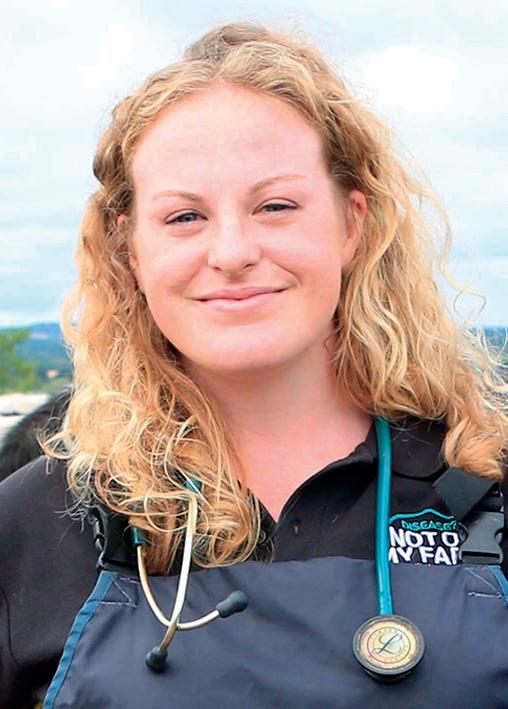
Top tips

JGet the most out of your vet visits by looking at the following:

rUse routine vet visits to assess different areas of herd health and not just for pregnancy diagnosis
rSource outside expertise to help with areas such as mobility

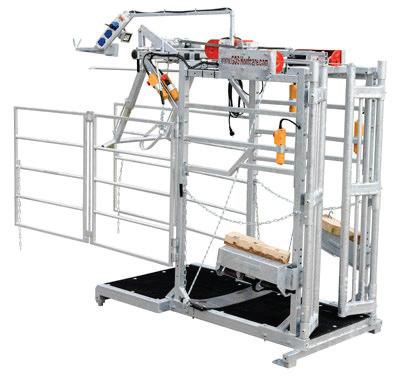

rInvolve the whole team when carrying out a herd health plan and explain why things such as vaccination are being carried out and ensure they understand protocols
tive to changes too,” she says.

“It is more likely to not just be seen as extra work. Although time is often tight on-farm, spending a little more time upfront explaining different protocols and the reasons for changes can pay dividends in the long run.”
From farmer cattle crushes to wooden blocks, we have everything you need to keep your cows' feet healthy!

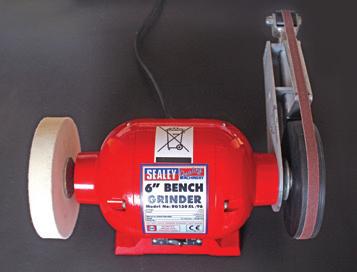

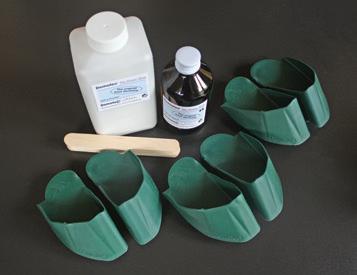
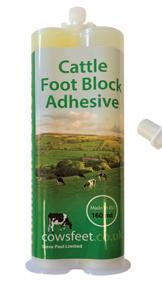

17 VET’S VIEW MARCH 2023 Prefer to speak to a human? Give us a call on 01963 824448
you to Steve and his team for an excellent and very quick service and very competitive prices every time, thanks!”
LAMENESS WORKSHOPS October 22 £125 per person
The UK's leading cattle
care company TRIMMING • TRAINING • SUPPLIES Free next working day UK mainland & Ireland delivery ORDER BY 3PM when you spend £100 online excluding VAT Make your life easier with our Electric Farmer Crush Do ring us if you’d like more information!
"Thank
JOHNNY MILLER, LANCASHIRE
Steve Paul Limited
foot
Cowsfeet advert Farmers Guardian 200x130mm March 2020.indd 1 14/02/2020 09:40
It should not take a dramatic problem, such as disease outbreak, for farmers to make improvements
NICOLE BALDRY
Regular metabolic blood profiling can help highlight nutritional problems, including negative energy balance, and protein, mineral and trace element deficiencies. Wendy Short reports.
Regular blood profiling can offer return on investment
Metabolic blood pro ling ‘asks the cows what they think of their diet’ and gives a more detailed picture compared with ration analysis alone, according to Prof Alastair Macrae of the Royal (Dick) School of Vet Studies at the University of Edinburgh.
He believes that regular pro ling will produce a return on investment by improving nutritional management and reducing production losses and says published research which involved blood sampling about 10% of UK dairy herds over a nine-year period from 2006 found that 30-50% of the animals showed excessive negative energy balance status pre-calving.
Prof Macrae says: “Our blood sampling service conducts metabolic pro ling on about 6,000 to 8,000 individual cows each year.
e overall picture has changed li le, although the pa ern changes slightly from year-to-year; probably due to forage quality variability.
“Problems with energy balance are by far the most common issue encountered. is occurs when the cow mobilises body reserves at an excessive rate and it can predispose to other conditions.
“Cow performance may not meet expectations and milk yield can fall by one or two litres daily.
ese animals will be at greater risk of displaced abomasum and metritis, as well as reduced fertility.”
e second most prevalent issue highlighted following metabolic pro ling is lack of protein, which shows up as sub-optimal levels of blood urea; it a ects roughly 10-20% of tested cows.
It is o en associated with a failure to match intakes of e ective rumen degradable protein to performance stage and failure to balance the diet to supply su cient energy and protein to the rumen.
Elements
Numerically third on the list of problems uncovered are mineral de ciencies, with low magnesium levels agged up in about 10% of the dry cows tested.

Meanwhile, trace element de ciency accounts for about 3% of samples tested and is usually due to a lack of selenium or copper.
It is fairly straightforward to correct mineral and trace element de ciencies by adding appropriate supplements to the ration, he says.
Calving pa ern is not believed to a ect the risk of metabolic disorders, although diseases may be slightly more prevalent among high-yielding cows due to the additional metabolic demands of high milk production.
By far the most important action that producers can take to avoid problems is to pay careful a ention
to dietary formulation and management, he says. He also advises producers to prioritise rumen health when managing the diet, in order to minimise the incidence of metabolic disorders.
Achieving target dry ma er intakes is another important factor.
“Poor dry ma er intakes can be linked to forage quality, which is the cornerstone of any dairy cow diet. If forage is insu cient in terms of quality, quantity or both, it will be an uphill task to balance the diet.
“Excessive negative energy balance can also be triggered if the ration is inadequate during the dry cow phase, as this can have an adverse e ect on early lactation.
“One example would be a spring block-calving herd on a relatively low input regime. If the spring grass is lacking in quantity or quality [for example due to a cold, late spring], the cows may struggle to achieve optimum energy balance in just the same way as their high yielding counterparts.
“It is a question of ensuring that the diet matches target performance and that is where metabolic
pro ling comes in; I would describe it as asking the cow what she thinks of her diet.”
e timing of metabolic pro le testing will depend on several factors linked to herd status and nutritional management.
Strategic
However, the general recommendation for all-year-round calving herds is to test the cows three or four times annually at strategic periods.
e cows would typically be blood-sampled two to three weeks a er housing in October/November, and again in December a er the maize silage has been included in the ration, he says.
A third sample could be taken in February/March when the second cut silage clamp has been opened, and a fourth time to sample might take place in the summer if grazing is ge ing tight.
“For a spring block-calving herd run on a low input system, blood samples are taken from a dry cow group in January, with further testing in February and again in
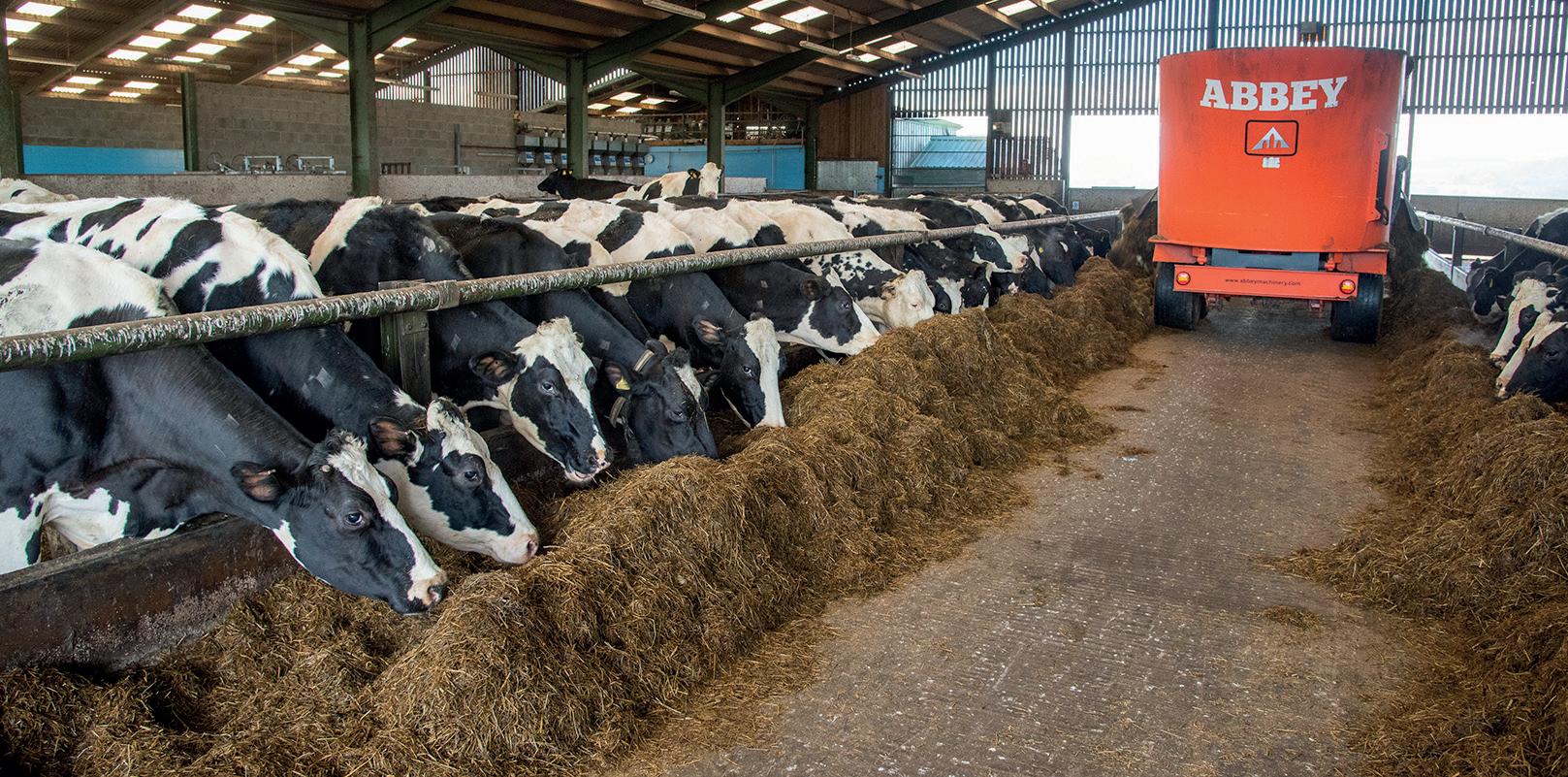
18
MARCH 2023
ANIMAL HEALTH
Blood profiling is one element of monitoring herd nutrition, says vet Prof Alastair Macrae.
March. With only one opportunity to get nutritional management around calving right, identifying problems early and finding solutions rapidly are key.
The collective test results will provide an excellent starting point for tweaking the ration to improve cow health and performance.
“In addition, later sampling would indicate whether the spring grass is meeting their nutritional requirements and confirm that the cows are likely to respond well to service.
“There should be no requirement to blood sample in the summer and autumn in these spring-calving herds because the cows should be in mid-to-late lactation and back in calf, unless fertility has proved an issue.”
Magnesium
Blood sampling can be tailored to individual herd requirements.
“For a large, all-year-round calving herd with a history of transition dry cow problems, sampling seven or eight dry cows pre-calving on a monthly basis will help to check that all is going to plan,” he adds.
“A result indicating low magnesium status in the dry cows would potentially predispose cows to milk fever at calving. Feeding an appropriate dry cow mineral containing 10-15% magnesium, or adding magnesium chloride to the dry cow diet, should correct the issue.”
He also recommends taking blood samples a fortnight after any major dietary change. It takes the
rumen two weeks to adjust to a change in the ration and there is a one week turnaround time for the profiling results to be returned.
“If profiling is not undertaken, it may take a couple of weeks or more to become aware of any problem. The usual response would be to adjust the ration and then wait to see if the action has a positive effect.
“By that time the production dip could have been prolonged by six weeks-plus. A production loss at peak lactation can cost the business a lot of money and, in this situation, the yield response should more than cover the cost of the blood testing.”
Any issues which arise following a blood profiling session will need to be tackled using a team-based approach, he says.

“A two-to-three-page report will be produced after each blood profile and this will contain a written interpretation of the results. The aim is to have a follow-up discussion between the nutritionist, vet, farm management and staff, to identify and correct any problems.
“Blood profiling is just one element of monitoring herd nutrition and it should not be viewed in isolation.
“It can be used in conjunction with other monitoring strategies such as body condition scoring, fertility data and dung sampling and alongside discussions with the nutritionist, to find the most cost-effective way of rectifying any issues that might be pinpointed.”
Blood profiling costs
rThe Royal (Dick) School of Vet Studies currently charges £370 for a one-off test of 17 cows and offers an annual membership scheme costing £720 a year for blood testing on a regular basis to monitor nutritional status
rThe farm vet will take the blood samples and send them to the laboratory rFurther details are available at www.ed.ac.uk/vet/dhhps
Our range of self-propelled and single, twin or triple auger trailed feeders with capacities from 5m3 up to 46m3, all available with a wide range of specications and options, makes BvL the ideal solution for all your livestock TMR needs.

Quality mixer ...
Quality mix ... Quality assured ...

Powerful mixing augers with adjustable knives ensure thorough mixing of all types of feed, including bales. Gentle mixing, consistent ration quality.
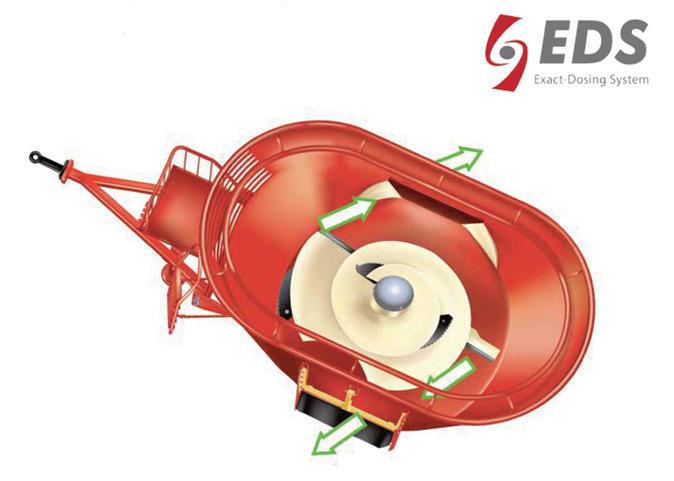
The patented EDS discharge system provides an extremely consistent, uninterrupted loose ow of forage to both sides if necessary, even without the optional cross conveyors or elevators. North:

The livestock feeding experts
19 ANIMAL HEALTH MARCH 2023
Innovation. Experience. Strength.
Prof Alastair Macrae
Paul McUrich - 07810 040100 / paulmcurich@gmail.com
John Molton - 07947 719985 / john.molton@bvl-group.de www.bvl-farmtechnology.com Spring 22 DF half vertical 90x255.qxp_Layout 1 17/01/2023 10:27 Page 1
South:
Milk quality and production has been boosted on a dairy farm in Croatia due to a strict set of breeding goals, which also saw the farm achieve a country-wide award. Chris
McCullough
reports.
Focused breeding strategy helps to boost production
Back in 2004, Farma Salas was established with a new set-up built on 1,130 hectares (2,792 acres) of land at Marijanci in the Slavonia region, which is near the border with Hungary.
Since then, the farm has made the best use of genetics to grow the herd and now the focus is on improving milk quality.
Numbers

Herd numbers now stand at 450 cows plus followers, which the farm manager Berislav Vulic says is where the business wants to be in terms of herd size.
Mr Vulic says that when the
dairy farm was built, 330 in-calf Holstein Friesian heifers were imported from the Netherlands to form the foundation of the herd.
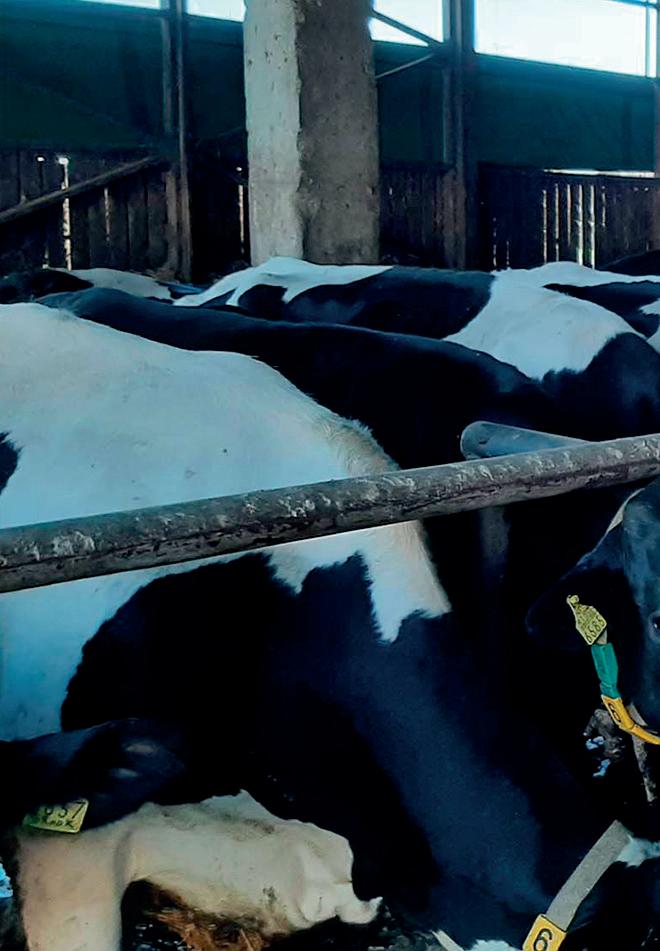
e herd’s progress was rewarded last year, when it was named best farm in Croatia in terms of production by the Croatian agency for agriculture and food.
Last year the herd’s average yield was 10,795kg at 4.6% bu erfat and 3.5% protein.
e main milking herd is split into two groups according to yield and stage of lactation with the groups housed separately to be fed di erent rations.
Mr Vulic says: “Each group
has an external exercise area.
e dry cows and heifers have access to grazing areas, but due to the recent drought periods they have actually been receiving a full total mixed ration.”
With advice from his genetics supplier, Viking Genetics, Mr Vulic has been following a set breeding strategy, which has proven successful.
He says: “We inseminate heifers and rst-lactation cows with Holstein Friesian sexed semen for the rst two or three inseminations. On the older cows we use Belgian Blue semen.
“ e goal is to achieve a balanced cow with the highest possible Nordic Total Merit Index.”
Over the last three years since making improved milk composition the focus of this breeding strategy, Mr Vulic says bu erfat has improved by 0.3%..
Improved
“Of course, this can also be improved with progress in feeding and long-term selection of bulls which are positive for percentage fat in milk.
“I cannot credit all the improvements only to VikingGenetics of course, because at the same time we also changed some things in terms of herd management.
“But an additional bene t of the change in breeding focus
has been a reduction in culling rates, which is now under 30% compared to 40% three years ago.”
Like every other dairy farm in the world, this one is currently experiencing higher feed costs, which eat into the pro t margins.
e TMR for the cows consists of crops grown mainly on the farm, and include hay, straw, haylage, silage, triticale, corn and toasted soyabeans. Additional soybean meal is bought-in from other companies, along with sun ower meal, molasses, vitamins and minerals. Ingredients are mixed together on the farm to make the concentrate, which is then

20 WORLD DAIRYING CROATIA MARCH 2023
The goal is to achieve a balanced cow with the highest possible Nordic Total Merit Index BERISLAV VULIC
Farma Salas manager Berislav Vulic overseas a herd of 450 cows.
The total mixed ration for the cows consists of crops grown mainly on-farm.
mixed with the other feeds in the mixer wagon.
Problem








Mr Vulic says: “Currently, the biggest problem on-farm is













feeding to save costs. is is done by using ration formulation so ware for all the groups. In the future we would like to build our own beef fa ening unit, but as far as the number
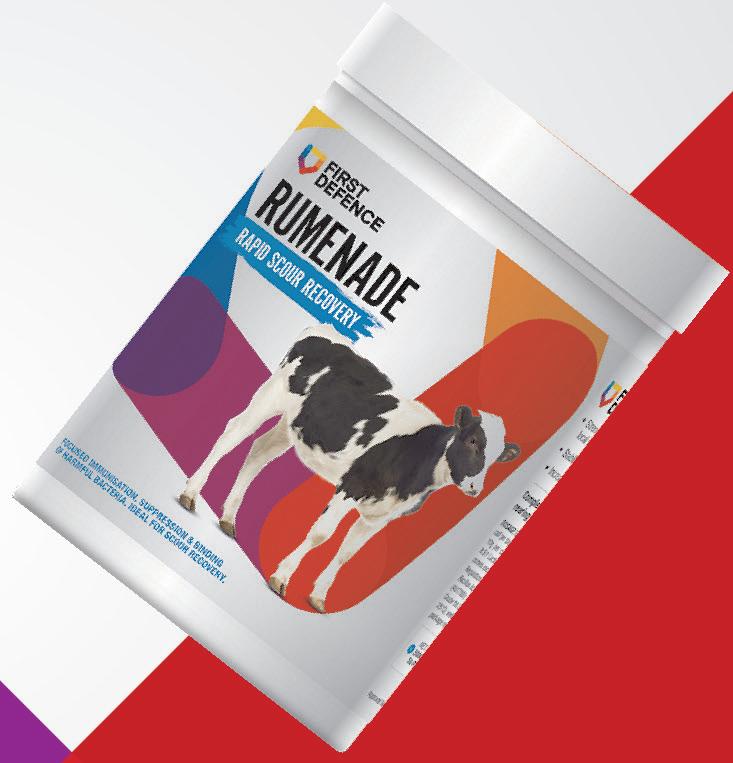





Farm facts
rCows are milked twice per day through a 12:24 Westfalia herringbone parlour and are yielding 35 litres each
The farm employs




28 members of staff, including two vets rMilk is sold to Vindija d.d. Varazdin for processing and the farm receives 43 euro





21 CROATIA WORLD DAIRYING
SAFEGUARDING
RUMENADE RAPIDSCOURRECOVERY 2FOR1 OFFER ThefollowingtermsandconditionsapplyinadditiontothePromotersstandardtermsand www.calvingfirstdefence.com Termsandconditionsapplyseebelowfordetails. Applycodeatcheckout 8YKY3XR74MCX BUY ONLINE
Sexed semen is used on the cows to produce replacement stock.
YOURCALVING
As labour supply remains a challenge, understanding how to best attract future employees is key to combating the hidden costs of staff turnover. Katie Fallon finds out more.
Attracting staff to join your farm
Often considered a way of life, not just a job, agriculture is a unique industry in many ways, particularly when it comes to employment.
But with recruitment a constant challenge for many farm businesses and the cost of replacing a general farm worker in the realm of £15,000, how can agriculture better showcase what it has to offer as a workplace and as a career?
At a recent AHDB event, Emma Shaw, senior partner at Real Success, an agricultural people management and recruit-
ment firm, said the hidden costs of replacing a general farm worker were often not acknowledged, but nevertheless, were considerable.
With it taking on average 12 weeks to find a replacement farm worker, Ms Shaw highlighted the costs during this period could be
10 foundation stones for more effective recruitment
found in time spent recruiting, loss of performance, advertising costs and training.
Ms Shaw said: “At a very conservative estimate, it costs a minimum of £15,000 to replace each person in your workforce.
“With these costs in mind, getting the right people and keeping them is very important, which is why planning the recruitment process is vital.
Nurturing
“People are probably the things which are invested in the least, and there is very little spent on harnessing and nurturing humans on-farm. When it comes to recruitment, you cannot just go for it and hope for the best. That does not work.”
In an attempt to help farmers address the labour shortage and attract more people into the industry, Ms Shaw highlighted 10 areas to focus on when trying to recruit.
1
Reputation: How you are regarded as an employer within the community and the industry can have a large influence on recruitment success, said Ms Shaw. This included the farm appearance, conditions livestock were kept in, employer professionalism and pay.
2 Online footprint: Ms Shaw explained how unusual it was for businesses in other industries not to have an online footprint, and advised farms looking to recruit, to have an online presence.
using online advertisement agencies as they provided a ‘bigger pool to fish from’.
employers need to provide basic, clean facilities.
4
Animals: People, particularly the younger generation, will judge from the health, welfare and cleanliness of your animals as to how good a potential employer you might be.
“Do not put stuff in there you do not want any more and do not be cheap about it. Make it nice,” said Ms Shaw.
Ms Shaw advised farmers not to start inflating salaries, but look at other ways of attracting and investing in staff to make sure they stay.
“In farming we are in danger of inflating salaries beyond all reason.
5
Housing: Ms Shaw said accommodation was the ‘jewel in the crown’ for agriculture and was not something which was offered in many other industries.
3
Advertising: When advertising vacancies, view the job advert as a doorway to inviting people in, said Ms Shaw. She advised
If you can provide a good standard of accommodation which is well maintained, it should be emphasised within the job advertisements.
6 Working conditions: Whether it be the toilet, changing area or staff room,
7 Working hours: Farm businesses are increasingly following normal working weeks, and while they can be trickier to manage, they are easier than constantly recruiting for staff who do not have a work-life balance. More farms are starting to offer a five-day week or pay a salary instead of an hourly rate.

8 Salary: Up to the age of 26, a farm worker should be earning £1,000 for every year of their life, as long as they are not doing extreme hours.
“Do not knee-jerk react and start inflating salaries, but make sure to stay competitive.”
9 First impressions: Ms Shaw advised farmers to go and stand at their farm gate and be very critical about its appearance. That first impression of the farm would, she said, go a long way with potential employees.
10 Training and development: When recruiting be honest and realistic about progression.
22 RECRUITMENT MARCH 2023
Recruiting and retaining staff is a problem for some farms.
Breeding success, WITH WORLD LEADING SOLUTIONS


Cogent’s comprehensive range of herd performance and fertility solutions provides your business with the tools it needs to remain sustainable and profitable, whatever the challenge.
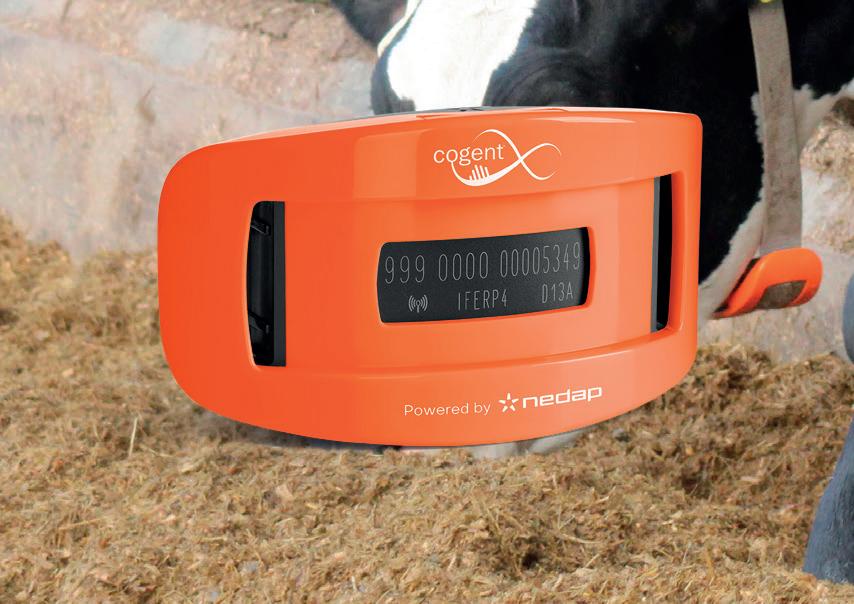
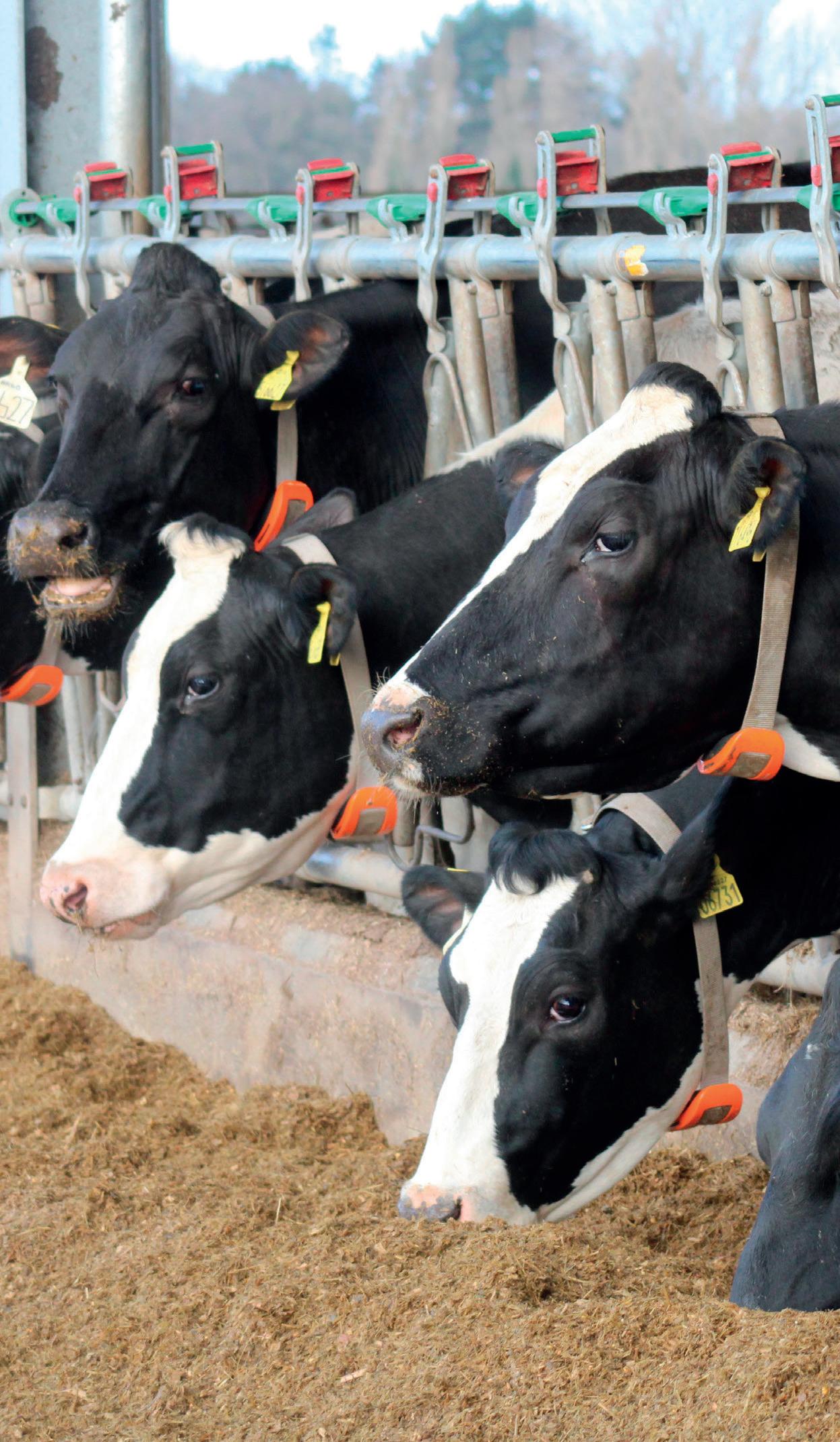

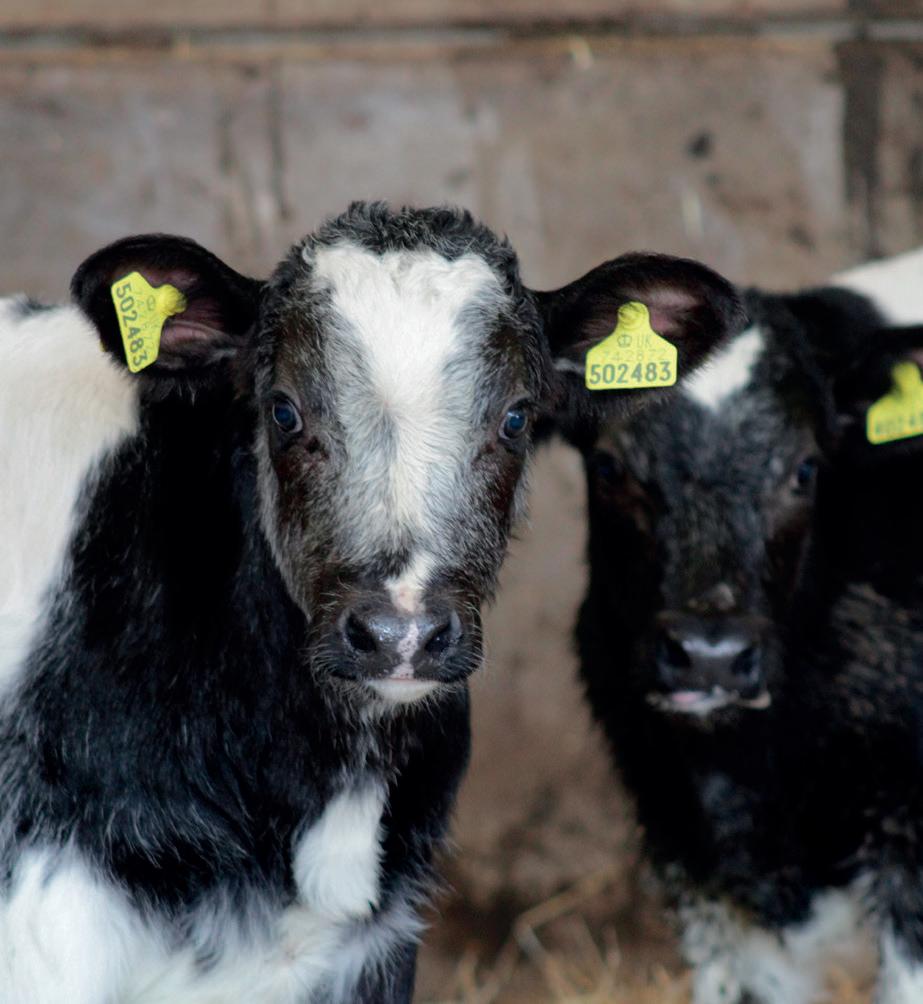


Our industry-leading sexed semen, extensive range of trait-topping genetics, innovative herd management solutions and the unparalleled knowledge of our Genetic Consultants are your perfect partners to accomplish the goals you never thought were possible.

FOR MORE INFORMATION ON ANY OF OUR PRODUCTS AND SERVICES
FREEPHONE: 0800 783 7258
Cogentuk.com FOLLOW US ON:
As environmental pressures increase and input costs continue to rise, soil health and the concept of regenerating soils are topics more farmers are interested in. Katie Fallon reports.
‘Everything we do in excess in agriculture is hurting the soils’
Regenerative agriculture is a journey of life and means an agricultural system which is always renewing and mimicking nature’s biological systems, according to soil scientist Ray Archuleta.
However, he also says the industry has been taught entirely the opposite over generations, with farmers a empting to control the natural system using fertilisers, chemicals, and high inputs.
Speaking at an AHDB-organised webinar, Mr Archuleta said: “For years I thought something was wrong with agriculture, but I could not put my nger on it. Now I realise that the reality is, we are working against the natural system.
Goal
“ e most di cult thing to change on the farm is what is between the ears. And for many years we have been socially conditioned for the wrong goal.
“Everything we do in excess in agriculture is hurting the soils, including too much tillage, over-grazing, and lack of cover crops. Everything we do in excess is destructive.”
is, he said, was in contrast to regenerative agriculture, which used agricultural practices which reduced inputs. He said: “If you are truly regenerative, your inputs will lessen and diminish.”
One of the crucial components
to regenerative agriculture was regenerating soils, and farmers could achieve this on their land, by focussing on the right grazing strategies, said Mr Archuleta.
Rotational grazing combined with long periods of recovery between 40 and 60 days rest, would help grasses and plants to develop longer roots and leak more carbon into the soil, making more nitrogen available.
He said: “ e problem is, that we are over-grazing, and we are over-stocked. Nobody wants to hear that, but that is where we are at.”
Over-grazing causes a breakdown of the aggregates in the soil, which in turn causes run-o issues, said Mr Archuleta.
Referred to as the ‘lungs of the soil’, aggregates are a fusion of sand, silt and clay created by biotic glues which create the pore spaces within the soil.
“When you over-graze and take too much canopy, it takes a lot of energy for the plant to feed the microbes and fungi to create aggregates.”
erefore, Mr Archuleta said, over-grazing diminished the aggregates in the soil, e ecting the soil structure which in turn e ects in ltration, creating runo issues.
Also, a culprit of diminishing aggregates in the soil is fertiliser. Mr Archuleta explained that to have regenerating soils and to ultimately run a regenerative system, no nitrogen fertilisers should be used.
He said: “A healthy soil does not respond to nitrogen fertiliser.”
And he added that if the conventional farmer stopped using fertilisers, and instead incorporated a rotational grazing strategy with long periods of rest, their
soils would respond very quickly.
“A dairy ecosystem should not have to use fertiliser; it is about the grazing system.”

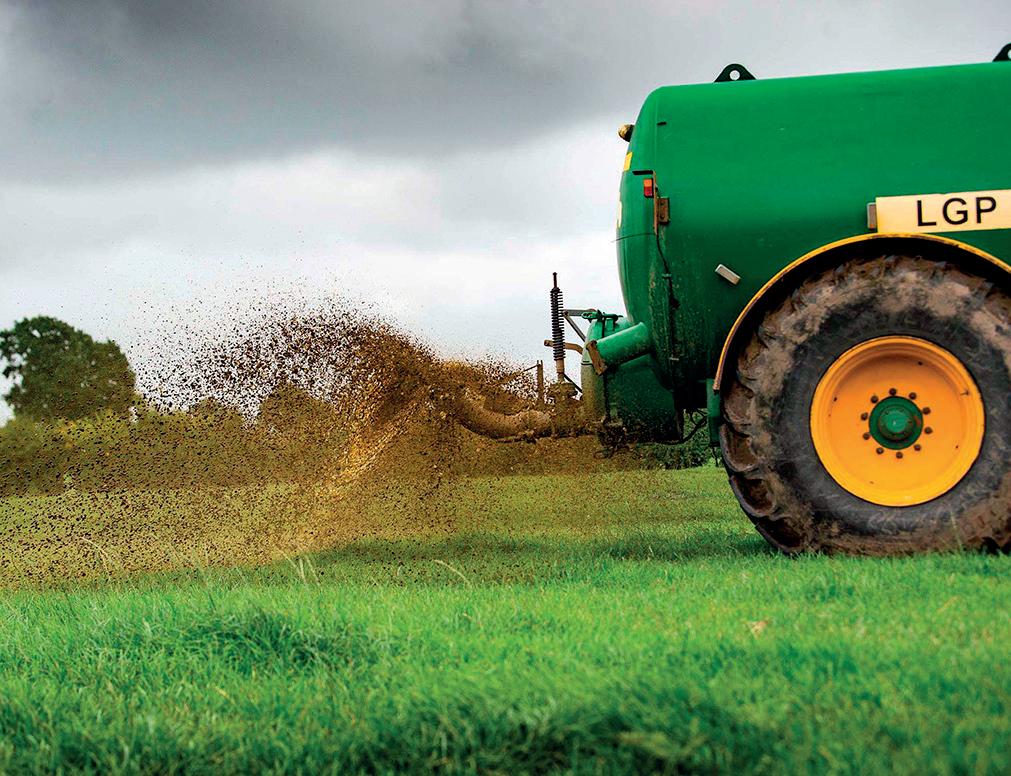
Mr Archuleta also advised farmers to be careful with their slurry applications, as too much could negatively a ect soil health.
When applying slurry from a lagoon, he advised against applications of over 8,000 gallons per acre of land.
“Nature does not store slurry in anaerobic conditions, in nature if something lands on the soil it is aerobic and the microbes, bacteria, dung beetles and earthworms break it down.
Respiration
“But manure in anaerobic conditions starts to shi biologically, creating a lot of by-products and toxins.”
He said studies have shown the microbial population and respiration of the soil had dramatically reduced when too much slurry has been applied.
When it came to achieving regenerative agriculture, it is clear Mr Archuleta believes healthy soils, and biodiversity will be a large part of the solution.
And with 25 per cent of all biodiversity beneath the soil, he advised it should be a key area of focus for farmers.
“Biodiversity is the so ware of the planet. Without so ware our phones are useless, and without biodiversity this planet would be a rock oating into space.”
24 REGENERATIVE MARCH 2023
Too much slurry can negatively affect soil health, says Ray Archuleta.



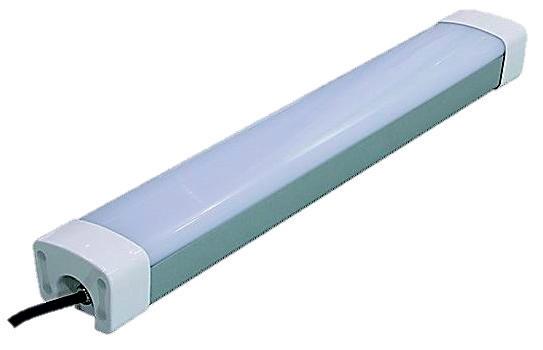






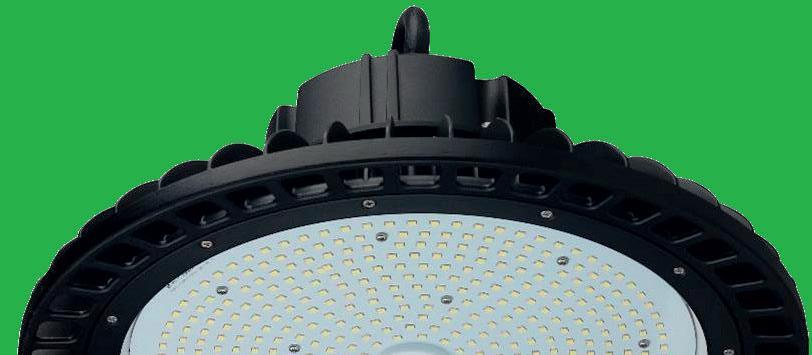





Cowcare SYSTEMS INCREASE PRODUCTION SAVE UP TO 80% ON ENERGY COSTS LED LIGHTING LED HIGH BAY Flood ligh ng Indoor ligh ng Advanced control with dimming and energy reading feature. For a no obliga on quote or more in . forma on Other ligh ng available. Scotland/N. England Wales/Midlands/S England N. Ireland/ R.O.I John - 07732348225
An important element of the dairy cow’s diet, starch, is often overlooked, but is a key component through
Starch important in every
Starch is an important part of any dairy cow’s diet in all stages of life, from a young calf to a bulling heifer, and an early lactation cow through to a dry cow.
Where requirements and quantities may change throughout these stages, the presence of starch remains paramount, according to Dugdale Nutrition’s veterinary technical manager Debby Brown.
Starch is a driving factor for insulin, energy metabolism and propionic acid that drives glucose metabolism, which is why it is so important within the dairy cow’s diet.
However, Mrs Brown says an excess of starch in the diet which
is not balanced with enough forage, relative to protein and bre, would cause acidosis.
Alternatively, if there is not su cient starch in the diet, it could have an impact on condition, digestion, production and fertility.
Mrs Brown says: “Farmers tend not to realise how important starch is to the dairy cow’s diet and can sometimes have a negative perception of it, thinking too much starch will cause acidosis, which results in them removing starch out of the diet completely. is ends up with almost nothing being stimulated.”
To ensure enough starch is present in the diet, Mrs Brown advises looking at all the diet inputs
Early lactation cows
JStarch is particularly important in early lactation cows, as it drives energy metabolism and therefore fertility, making it important for hormones relative to heat detection and conception.
and, from the data, working out how much starch is in the concentrate feed, how much is going into the blend, and working out where the other sources of starch are on-farm.
She then advises calculating how much starch cows are ge ing per head per day.
Not enough starch in the milking diet is likely to hold cows back, says Mrs Brown, as they will not achieve optimum milk production or fertility.
She says: “If cows are not milking as well as they should be, the
supplementary starch needed in the diet is dependent on the forage available, as maize or wholecrop silage will already contain some starch.”
Life stages
JStarch supports the development of the calf’s rumen papillae, which means as the calf gets older its rumen has developed to begin digesting feed once weaned off milk. With starch usually found in the concentrates, it works together with forage and straw to develop the rumen.

Mrs Brown says: “Forage and straw are important for rumen size and expand the rumen, but the papillae do all the absorption of the energy and the calf needs starch to develop those papillae.”
Calves Heifers
J It is important to carry on including starch in heifers’ diets following on from the calf stage, as it will keep the papillae developing and keep digestion and absorption going.
However, Mrs Brown says
Mrs Brown says if the correct sources or amount of starch are not in a calf’s diet, it will take longer for the rumen to develop and, over time, the calf will be slower to adjust and mature.
This could result in the calf being slower to wean and slower to adjust to a silage or grass ration.
She says: “This has a knock-on effect on that animal reaching maturity as a heifer, which affects age at first calving and milk production in that first lactation.”
Mrs Brown says barley, wheat and maize are the main sources of starch in the diet, with barley and wheat having a bigger impact than maize, making them the main sources for rumen development.
She says: “From a milking diet perspective, the amount of

e presence of starch in the diet is dependent on the life stage of the animal and is crucial to the di erent biological functions of the animal at di erent times. Ultimately, Mrs Brown says the quantity is all about balance, not extremes. “It comes back to balance and need, as it needs to be right for each stage.”
Calves which do not receive enough starch could have compromised rumen development, which will have an impact on time taken to reach maturity
care should be taken not to overfeed heifers with starch to avoid them getting too fat.
She says: “It is all about balance again, but certainly during the growing and late pregnancy stages you will want some starch in the diet.”
26 COW DEVELOPMENT MARCH 2023
the cow’s life, says Dugdale Nutrition’s veterinary technical manager
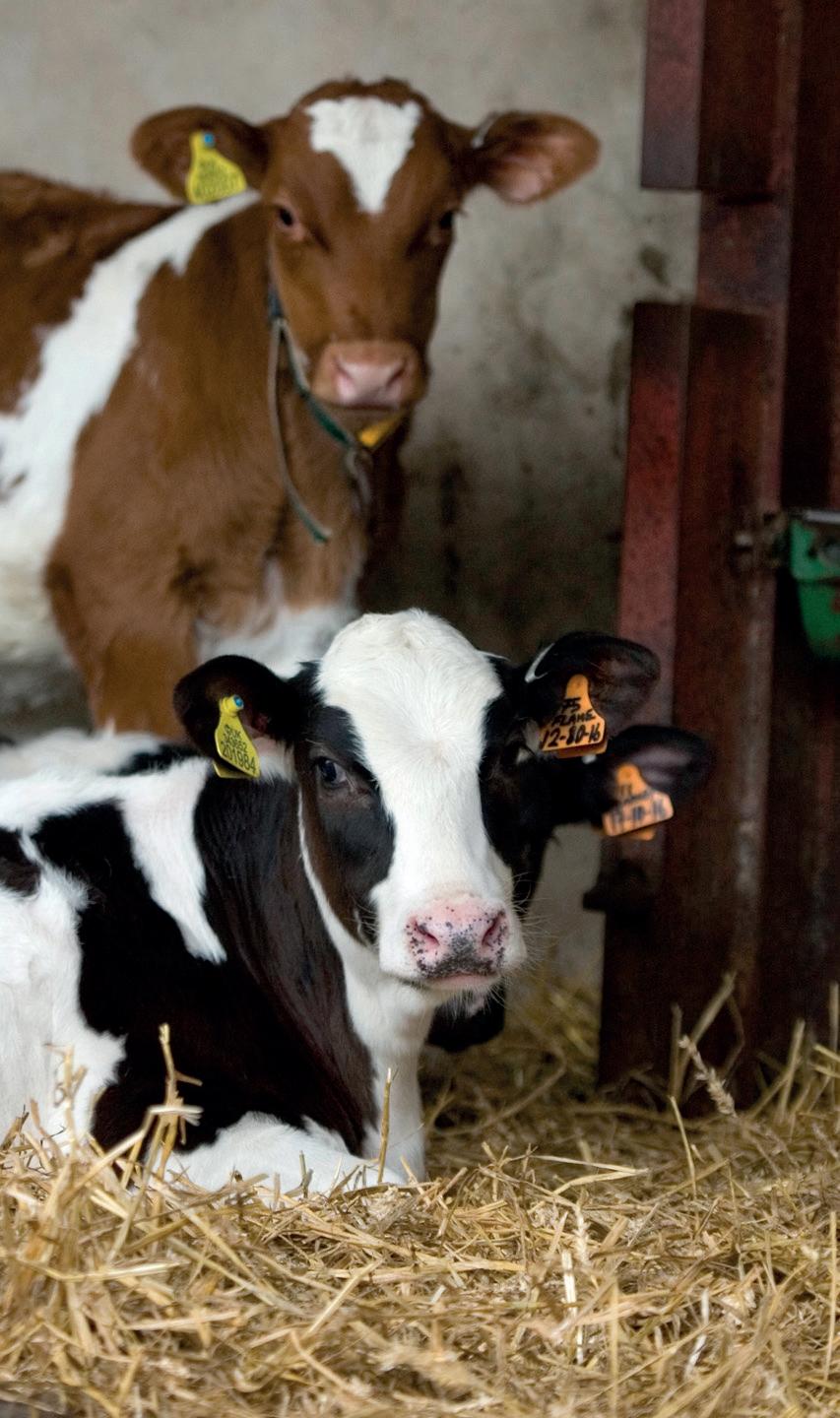

of a

The dry cow
quantity of starch they are receiving would be one of the first things I would look at, especially if early lactation cows are not doing well.”
Starch is less important in late lactation cows, dependent on the state of the rumen, but is more important closer to calving, says Mrs Brown.
Key starch levels
JMrs Brown says the following starch levels are dependent on neutral detergent fibre sources, levels within the diet and other ingredients, but provide some basic guidance as a starting point:

rCalf starter feed: 34-40% dry matter
rLactating cow with maize silage: 18-25% dry matter of total diet
rLactating cow without maize silage: 16-22% dry matter of total diet
rDry cow: 10% starch dry matter of total diet
JStarch is important for rumen papillae development among dry cows. Mrs Brown says if a dry cow has been subject to too much starch and concentrate in the lactation diet, there may be damage to the rumen. However, if not enough starch is fed, she says the rumen shuts down, because the
Debby Brown. Katie Fallon
reports.
rumen papillae have nothing to develop them. Mrs Brown says it is about balance at this stage, as the rumen needs to recover and prepare: “You want it to recover, so you need to have a lower starch diet than in the milking diet. But you still need some starch in there to prepare the rumen for the next lactation.”
27 COW DEVELOPMENT MARCH 2023 Find
Faster Receive the latest jobs in your inbox with our free email alert service JobsInAgriculture Let us keep you updated by email and never miss another great job JobsInAgriculture.com stage
cow’s
Jobs
lifetime
BRITISH CATTLE BREEDERS CLUB
This year’s British Cattle Breeders Club conference included presentations on herd sustainability and the next steps for bulk tank milk testing for bovine TB. Katie Jones reports.
Bulk tank surveillance test for bovine TB
Abulk milk tank surveillance test could bring a number of significant advantages to bovine TB control, with its potential being put to the test this year via a GB-wide field trial.
Alastair Hayton, of Synergy Farm Health, explained that the Enferplex bTB test detects antibodies to bTB in either blood or individual milk samples.
The test is already validated by the World Organisation for Animal Health (WOAH) for use on individual blood samples, and is now being evaluated as a bulk tank milk test.
The validation studies are complete, but are waiting to be approved by the relevant WOAH committees this summer.
Mr Hayton said there were a number of potential gains of the bulk tank milk test. “Along with its potential ability to detect whether
a herd is infected or not, the test potentially may also provide information about the dynamic of the disease within a herd and whether the disease status is improving or deteriorating.”
Revolution
He added he thought the test could ‘revolutionise bTB surveillance and control’.
“Samples are easy to obtain, and the test is robust, reliable and inexpensive to perform.
“If it proves effective, it could reduce skin testing requirements for farms and by allowing continuous monitoring of herds, it allows more rapid detection of disease introduction, making eradication easier.”
However, in order to assess the exact extent of its value, Mr Hayton said a field trial was now necessary. “The difficultly in doing this is that there is a very limited time to perform such a study without risk to individual farms and the wider industry, as if the test is officially validated by WOAH this summer, the UK Government would have to place restrictions on any herd testing positive.
“Prior to this, Defra and devolved authorities have stated they will not act on any positive
results and are under no obligation to do so.”
A field trial, which will involve about 5,000 dairy farms from across England, Scotland and Wales, has now been set up and is due to start this month.
Enrolled farms will have their bulk tank milk tested every two to three months, with a smaller subset of milk recorded herd tested monthly.
Testing
Testing will be carried out by National Milk Laboratories and results sent to Scotland’s Rural College for analysis.
Mr Hayton stressed that while the results of positive tests will, by law, be reported to Defra, there will be no repercussions for individual farms.
He said: “Specifically, they will take no statutory actions if a bulk tank milk sample shows
A fertile herd is a sustainable herd
THE impact of poor fertility was brought into sharp focus by Prof Phil Garnsworthy, of University of Nottingham, who said improvements to this part of herd management was a ‘win-win strategy’ that would increase resource efficiency, feed efficiency and all aspects of sustainability.
He said: “Poor fertility results in premature culling of cows, lower lifetime performance, less opportunity for genetic selection, and increased replacement rate.”
On the topic of increased
replacement rate, he said on average herd replacement rates had levelled off at between 30 and 35% following a spike in the late-1990s of 35% and an average of 25% in the mid-1980s. This came at the same time as a steady increase in yield performance overall.
He said: “Historically there has been a negative correlation between milk yield and fertility, which was highlighted in the late 1990s. At that time producers were selecting just for milk yield, and inadvertently were
selecting against fertility. This problem with fertility has an impact on replacement rate.”
He said that recent research carried out by Reading University suggested fertility was improving, but for too many cows the exit lactation was still lactation number three.
Improvements
He added that improvements to fertility in terms for tightening the calving interval would have an impact on economics of production and the environment.
“If we can get fertile cows with a 365-day calving interval, then over a four-year period they will have four lactations. This compares to a cow with the average calving interval of 400days, which will only have three lactations.
“The cow with good fertility will produce 27% more milk in her lifetime for an increase in energy intake of only 12%, so feed efficiency is increased by 8%.
“And methane emissions per litre of milk are reduced by 13%.
28
MARCH 2023
CONFERENCE
The official bTB status and their normal bTB statutory testing schedule will be unaffected by the study
ALASTAIR HAYTON
BRITISH CATTLE BREEDERS CLUB CONFERENCE
a positive Enferplex milk test result. And the o cial bTB status and their normal bTB statutory testing schedule will be una ected by the study.”
He said the trial would focus
on the test’s ability to detect disease in herds currently under restriction and in herds designated o cially bTB-free.
“It will also look at the value of monitoring the level of bulk
tank milk seropositivity as an indicator of whether a herd is moving either towards disease freedom where levels are falling, or vice versa, where the levels are rising and the current
actions are failing to control disease where the herd is already under restriction, or where the herd is currently o cially bTB-free, predicting that a herd will lose that status.”
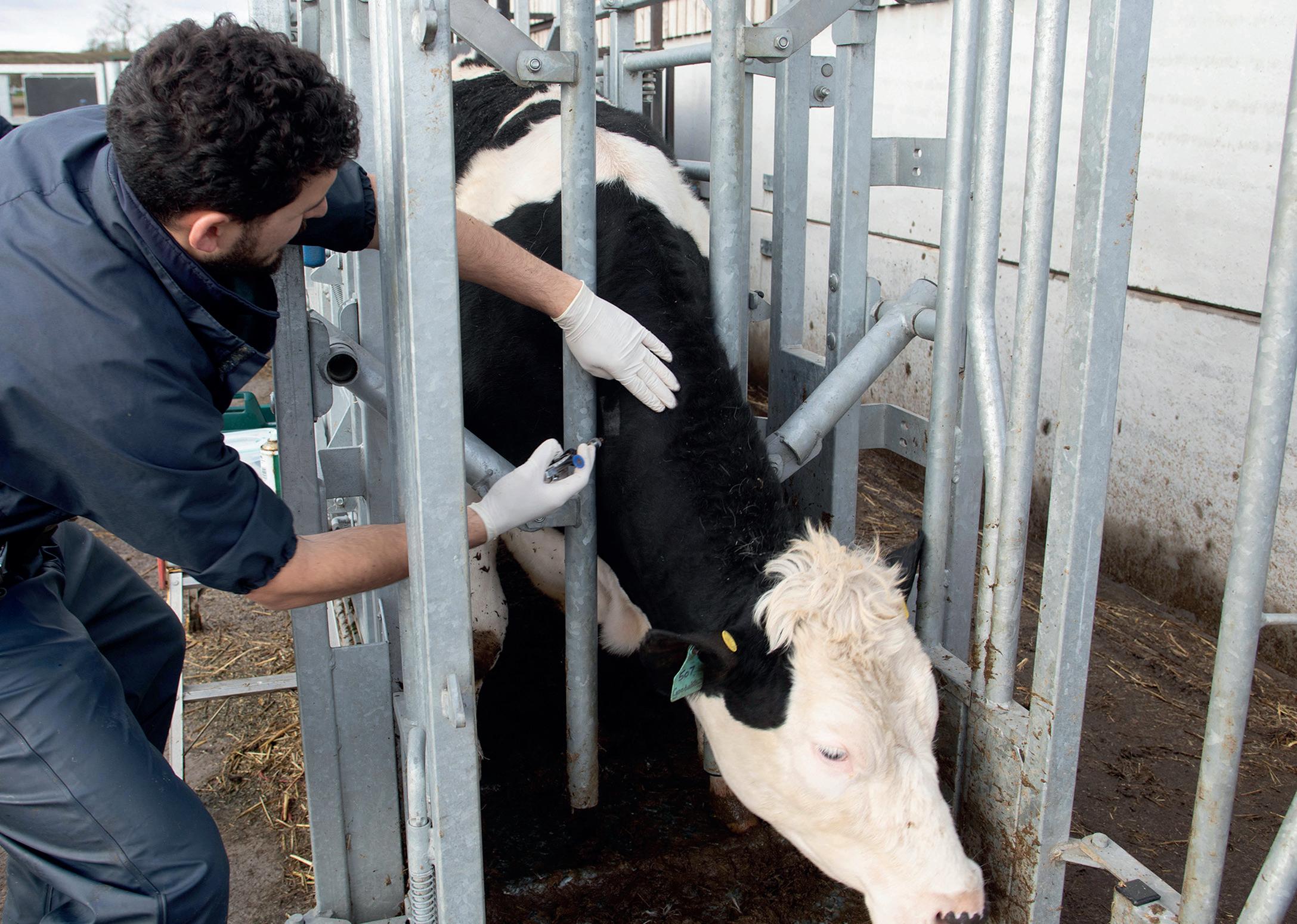
which would also push up the feed energy required on-farm.

Genetic turnover
However, he also said that heifers should have the best genetics within the herd, so an average of three lactations for culling would give a faster genetic turnover then four.

“But in lactation one, milk yield is only 70-80% of mature milk yield, with nutrients at this stage diverted to growth rather than yield.
Basically, the cow with good fertility spreads feed inputs and methane outputs incurred during the rearing period over more
litres of milk in her lifetime.”
And Prof Garnsworthy reminded farmers that is took a heifer 1.5 lactations to payback
rearing costs, and if fertility was poor and replacement rate high then more heifers would be needed to be kept on farm,
“Premature culling due to infertility means that cows do not reach their potential milk yield and pro tability, so e ciency is low.”
29
MARCH 2023
Historically there has been a negative correlation between milk yield and fertility
PROF PHIL GARNSWORTHY
If the bulk tank milk test proves effective, it could reduce skin testing requirements for farms.
PICTURE: Tim Scrivener
Public unease about housing dairy cows year-round has been simmering since the Nocton Dairies proposal made headlines over a decade ago. Now, new research has provided insights into how people feel about the ways we keep cows, and why. Dairy Farmer reports.
The public view on housing versus grazing
The attempt to set up a state-of-the-art, 8,000-cow dairy farm at Nocton in Lincolnshire first catapulted year-round housing into the public eye in 2010.
While the Nocton project was eventually shelved, the practice drew national media attention at the time and has been revisited periodically since.
How to explain different dairy farming systems and counter misconceptions, has left many in the industry perplexed.
Dr Amy Jackson was involved with communicating the Nocton Dairies project at the time, and admits that tried and tested tactics simply do not work.
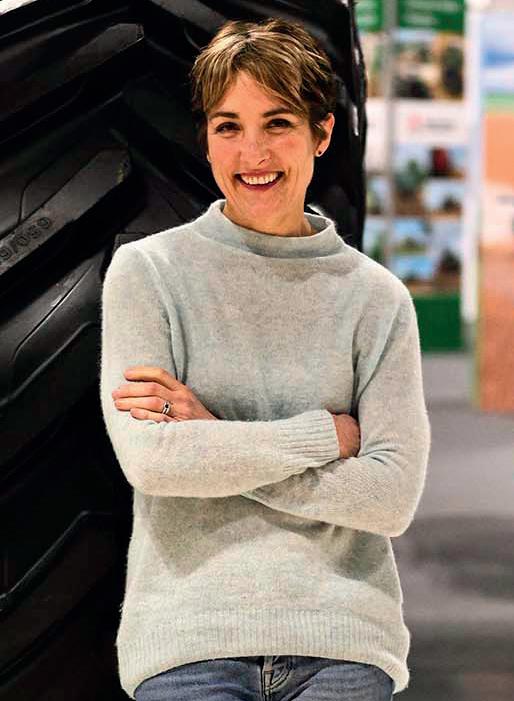
She explains: “In any situation where the public have concerns about a new development, best practice is to be as transparent as possible — open up lines of communication, fill the information void early and address specific concerns.”
Articulate
However, pinpointing exactly what the concerns are over housing dairy cows year-round has always been the key challenge.
“People struggle to articulate what they do not like about it. So we respond by explaining how good the health outcomes and practices are.
“But this does not appease people, as they judge ‘good’ differently and their concerns are more abstract and emotional — so the result is we continue to experience opposition, and we continue to be unable to address it.”
Since 2017, Dr Jackson has been looking into this issue more closely through a part-time AHDB-funded PhD at the University of Nottingham vet school, investigating public perceptions of dairy farming in the UK.

In one key study, 60 people of different ages and backgrounds from across the UK were interviewed to understand their preferences for different dairy farming systems.
Questions focused on their interpretation of, and feelings about, three scenarios: housing year-round; grazing year-round;
and a mixed system housing in the winter and grazing in the summer (see Figure 1, below right). Responses were analysed in two ways.
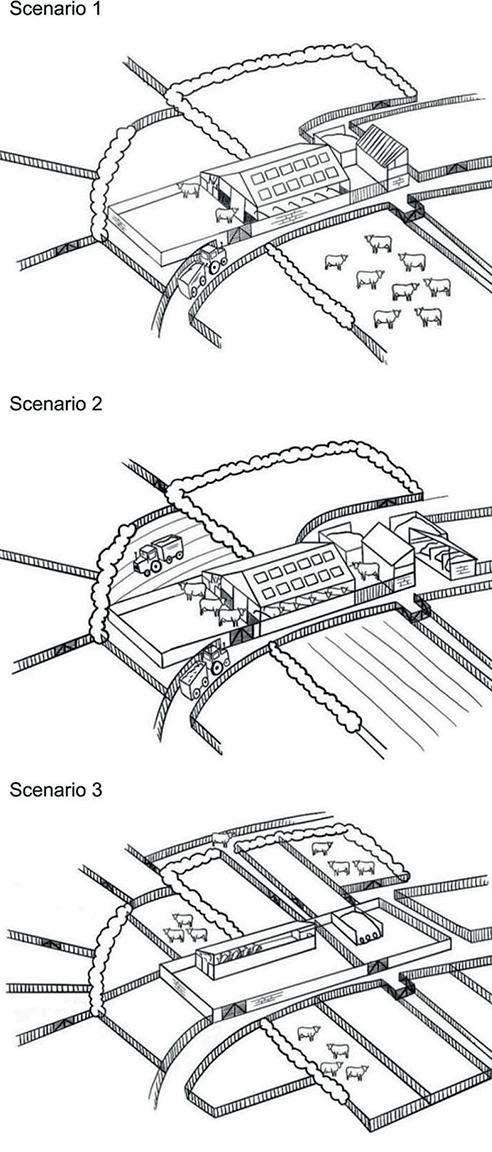
First, linguistic analysis identified the frequency with which certain words were used, and matched this to underlying psychological processes – for example, higher than average use of words such as ‘no’, ‘not’, or ‘never’ indicated rejection.
Secondly, responses were analysed for ‘themes’, to explain the linguistic findings.
Dr Jackson says the results showed very different responses to the three scenarios.
Processing
“The fully-housed system gave rise to strong negative emotions, rejection words and low optimism, but also high amounts of cognitive processing — this scenario just did not make sense and interviewees were ‘thinking aloud’ to try to work out why cows would be kept this way,” she says.
“Surprisingly, the fully-grazed scenario did not fare much better, with high levels of cognitive processing and low scores for ‘logic’. It scored high on ‘discrepancies’ too, which I call the ‘could’ve’, ‘would’ve’, ’should’ve’ terms, indicating that grazing year-round ‘should’ be a good way to keep cows — but something just did not sit right.
“By contrast, keeping cows inside in the winter and out in the summer was highly logical, produced strong positive emotions, and was spoken about with optimism and confidence — suggesting familiarity.”
While this analysis of reactions gave one side of the story, it was
30 INDUSTRY DEBATE MARCH 2023
Dr Amy Jackson
Figure 1 showing the three housing options presented.
PICTURE : Beanstalk Media
the thematic analysis which gave insights into why people felt this way. “A key theme they expressed was the ‘dual’ nature of the cow,” says Dr Jackson.
“She is seen as a wild animal


domesticated by humans — so a split character if you like. We owe her care and protection, but also the ability to access the natural environment to meet her ‘wild’ needs.
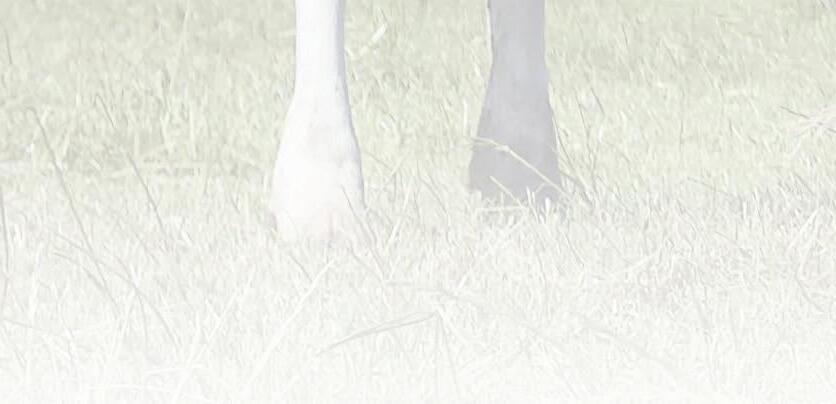
“ e mixed scenario ticked this box, while the housed scenario failed on access to nature, and the fully-grazed, on care and protection as people envisaged the cow being preyed on, or calving at the bo om of a eld with no oversight from the farmer.”

Another theme was confessed ignorance about which system would be best for the cow.

Here, some participants lled gaps in their knowledge through their memories and experiences, media representations, or perceptions about what they themselves would like – all of which favoured the cow being protected inside in the winter, but outside and visibly among nature in the summer.

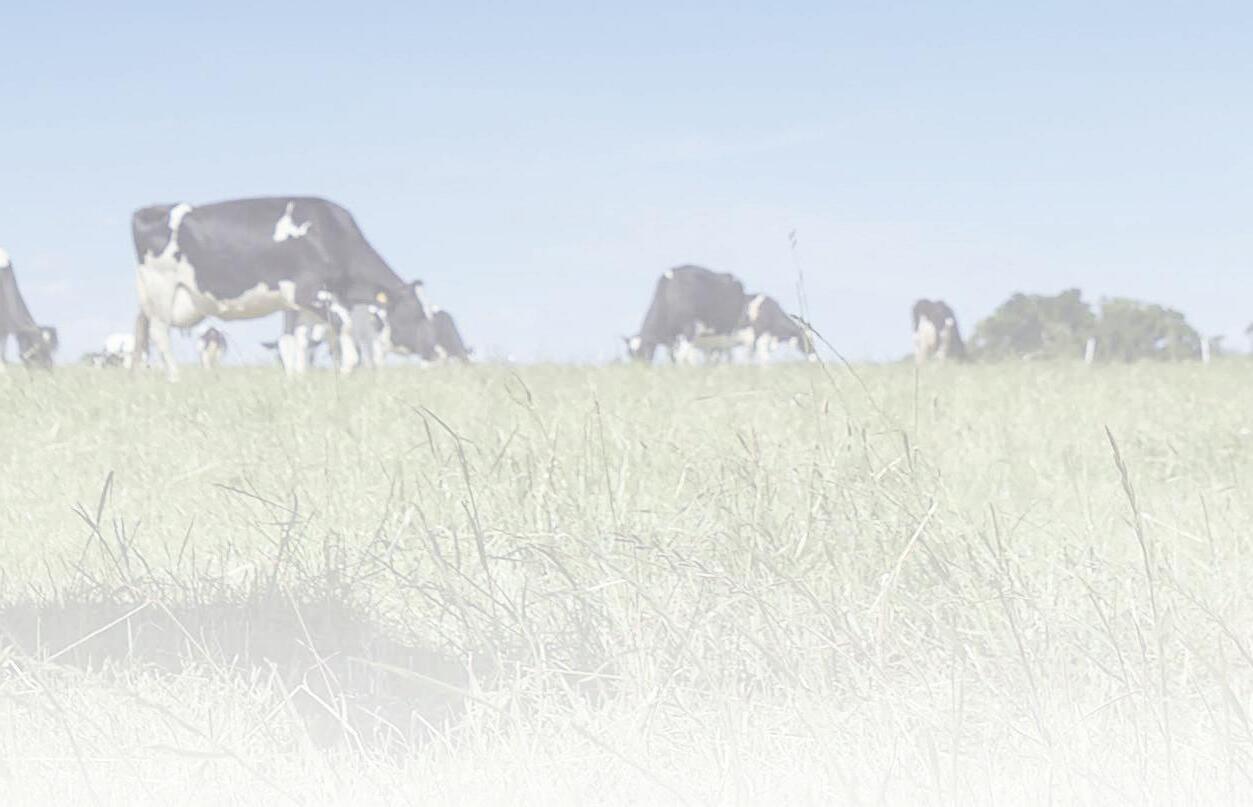
However, others trusted retailers, government, assurance schemes, farmers — and especially the cow herself — to know how the cow should live.
Dr Jackson says her overall conclusion is that the UK dairy industry has been trying to edu-











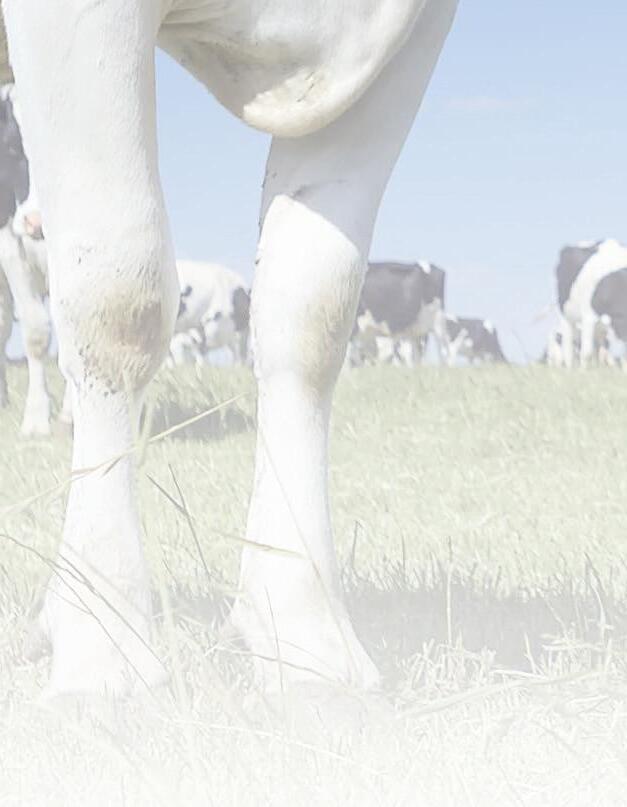




cate the public to accept a system of production they mostly do not, and never will, feel very comfortable with. But the results suggest actions we can take to improve the situation.
“For starters, we could try lling knowledge gaps and increasing familiarity with the ways cows are cared for in di erent se ings.
Powerful












is might be especially powerful if farmers tell the stories themselves, for example through careful use of social media,” says Dr Jackson.
“Where housing year-round is believed to be limiting market opportunities, system adaptation could be worth exploring.


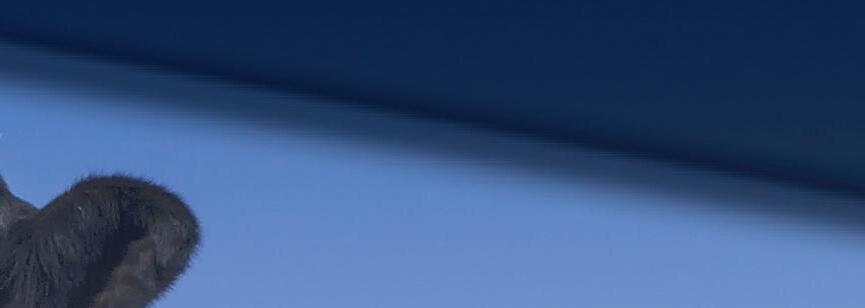


















“While we did not research speci c interventions, you could speculate from the responses that introducing ways for cows to experience more naturalness, or to choose their own environment, activities and timetables, might be seen favourably.”

31 INDUSTRY DEBATE MARCH 2023 01904 405299 Decades of experience providing Dairy Cattle Finance to UK Agricultural Businesses EP R EGRNE DAIRY NA N EC Peregrine are the major funder of dairy cattle in the UK Dairy Parlours Slurry Stores Buildings Dairy Equipment
Where housing year-round is thought to be limiting market opportunities, system adaptation could be worth exploring, says Dr Amy Jackson.
Maximising milk from forage will help support businesses in the current tricky times and, here, experts give their advice on how to make the most of home-grown crops.
Multi-cut grass silage-making outperforms conventional
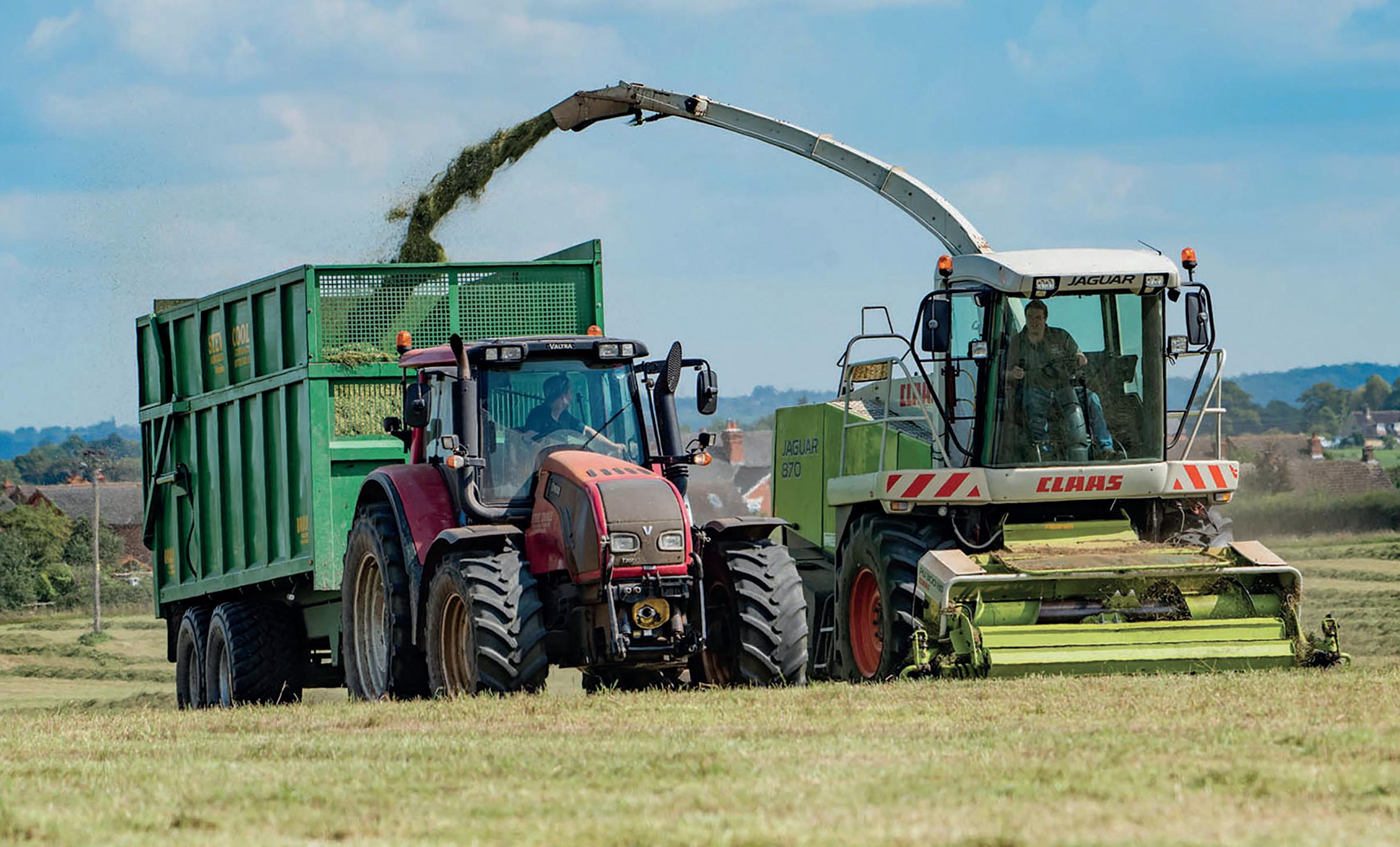
Those who implemented a multi-cut approach to grass silage making during the drought-like conditions in 2022 tended to be better off.
These were the conclusions of a new Ecosyl grass silage survey
conducted among more than 700 UK dairy farmers ahead of the 2023 season.
Frequency
Three-quarters of respondents made silage conventionally, cutting up to three times a year, while a quarter made
multi-cut silage, cutting four times or more.
While most respondents from both groups, 74% and 70% respectively, said growth of their grass silage crops had suffered as a result of the drought in 2022, those making multi-cut tended to see higher
silage yields and better quality, as well as making better progress with cutting, says Ecosyl silage expert Ken Stroud, of survey organiser Volac.
He says: “Just below half [45%] of farmers in the
Continues over the page...
32 MARCH 2023
GRASSLAND
& FORAGE
36 MAIZE A look ahead to drilling 38 FERTILISER How to reduce reliance on bagged nitrogen 40 FORAGE PEAS An alternative to consider 42 REJUVENATION The value of overseeding 46 MANAGEMENT Maximise milk from forage figures 50 FORAGE WAGONS Which machine suits your farm?
STRIP TILLAGE An option for maize establishment
MULTI-SPECIES Building a sustainable system
52
54
Three-quarters of respondents made silage conventionally, cutting up to three times a year.
Feed these, or feed this.


With the variable costs of bought-in feed, it’s never been more important to build a resilient future for your farm. Elsoms’ extensive spring crop portfolio includes high performing Maize, Fodder Beet, Rye and Triticale varieties, giving you the widest choice for your livestock. And with many of our varieties also suitable as energy crops, there’s the opportunity to feed your bottom line too. Speak to your seed merchant today about availability or discover more at www.elsoms.com/spring-crops


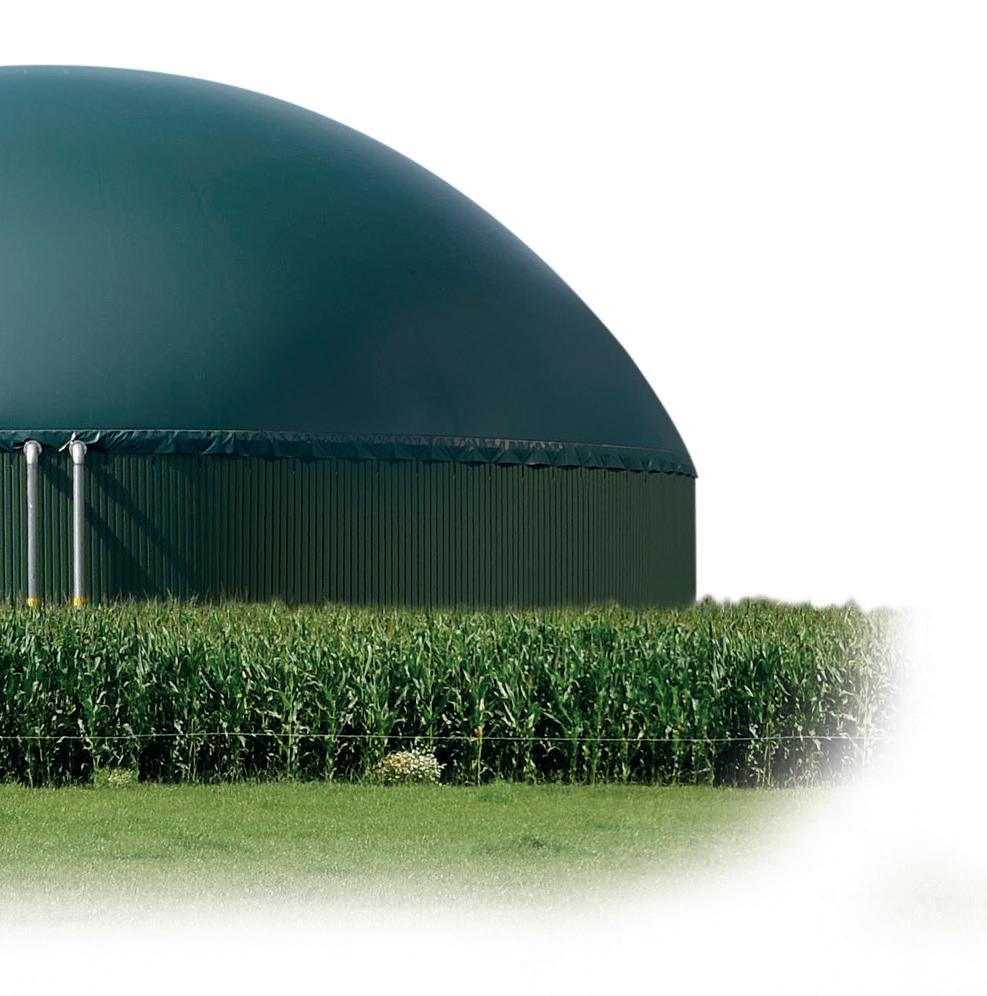
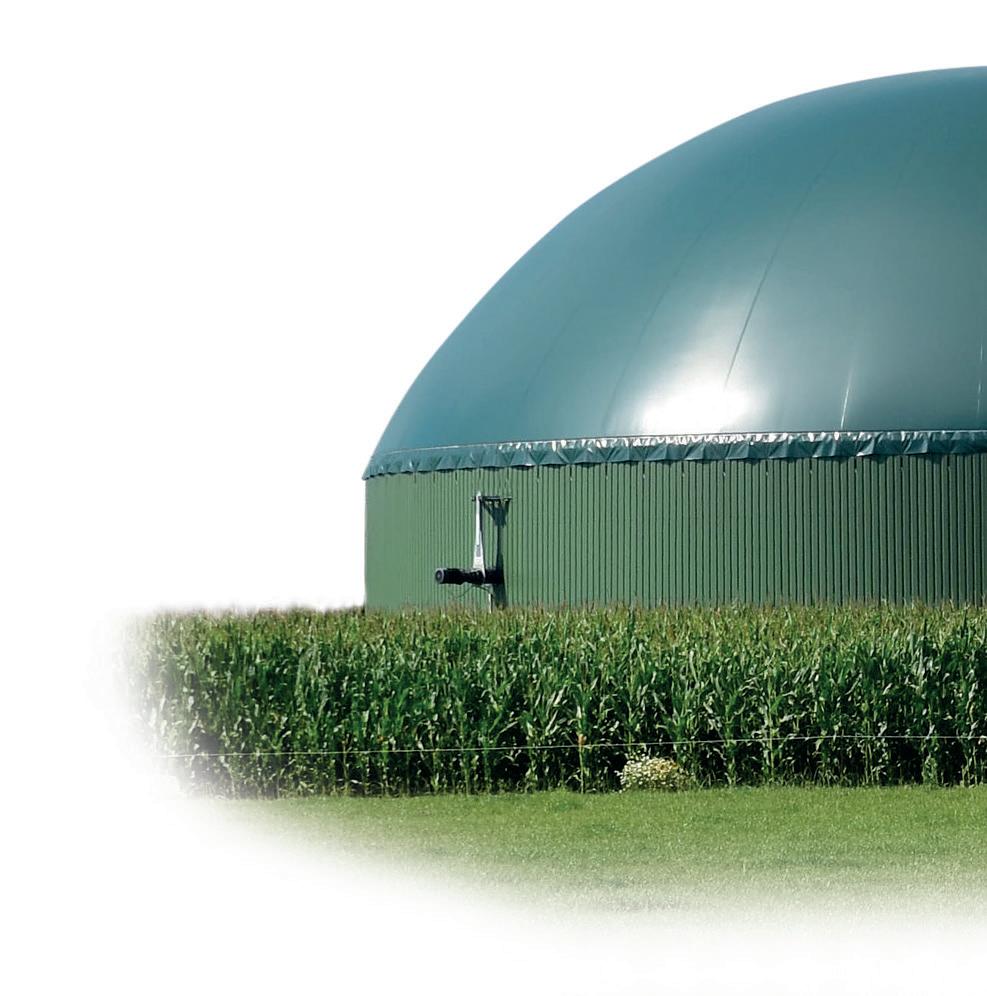
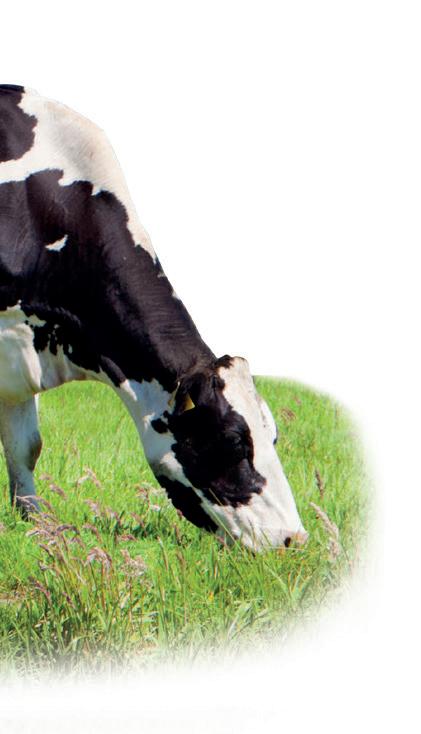
FORAGE CROPS
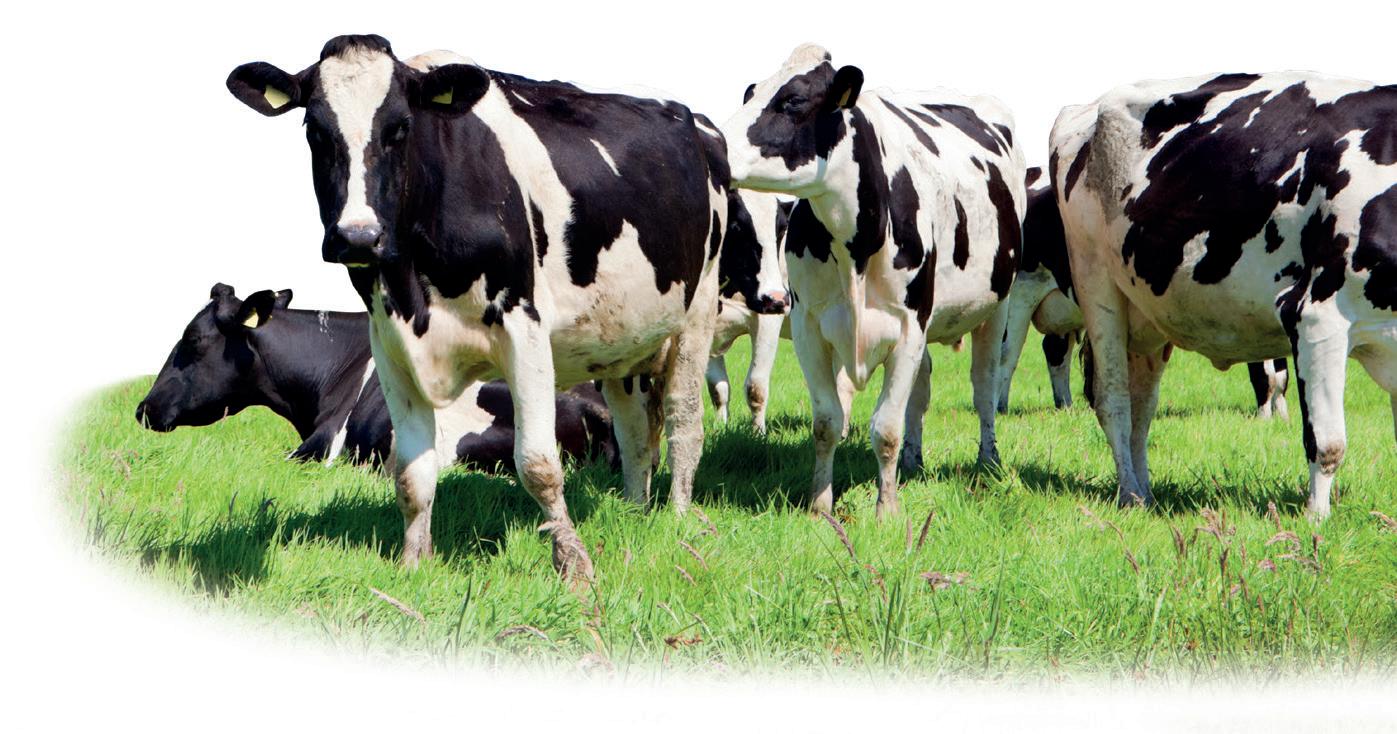
Working in partnership for the UK grower
elsoms.com
multi-cut group had already taken two cuts by the end of May. Compared with 17% who had taken two cuts by the end of May in the conventional group. And this trend continued when the dry weather had hit at the end of July.
“By then, nearly three times more farmers in the multi-cut group than in the conventional group had already progressed to three cuts, at 44% versus 15%.”
There were also differences in silage yields and quality between the two groups, with 63% of conventional silage-makers feeling that yields were less than normal by the end of July, compared to 53% who said this in the multi-cut group.
Quality-wise, over the season as a whole, 35% of conventional silage-makers also rated their 2022 grass silage quality as poorer than normal, compared with 28% saying this in the multi-cut group.
Mr Stroud says: “At the other end of the scale, nearly twice as many multi-cut makers as conventional silage producers felt their quality was actually better than normal in 2022, at 20% versus 12%.
“Higher quality was the most popular advantage of multi-cut
With younger, multi-cut grass, it is important not to chop it too short or over-consolidate it, says Mr Stroud.
silage identified by users of the system in the survey, with 60% saying this, while 50% said more yield over the season was an advantage. Another was that it puts some silage in the clamp early in case the weather turns too wet or dry later, as named by 36% of users.
“Clearly, multi-cut is not immune to the effects of drought and it is not possible to make it on all farms, but the survey results repeatedly pointed to
Considerations if moving to multi-cut
1Chop length and consolidation: With younger, multi-cut grass, it is important not to chop it too short or over-consolidate it, says Mr Stroud, partly to minimise the risk of slippage in the clamp from this softer material, but also because a longer chop length helps provide longer fibre in the diet.
potentially higher metabolisable energy and protein content will need taking into account with ration formulation, he says, but this is the benefit of making multi-cut, because it offers the potential to reduce bought-in concentrate.
those who made multi-cut in 2022 being in a stronger position.”
The survey also asked respondents what was likely to drive a desire to make better silage in 2023.
Costs
“Averaged across both groups, 79% said high feed costs, 63% said high fertiliser costs and 49% said high fuel costs. There was evidently a good understanding among producers
that making better silage can improve business efficiency and make better use of their fertiliser investment.

“These are key reasons why minimising losses in silage dry matter and quality has become increasingly important.
“Results from this latest survey follow a previous Volac survey conducted in the dry year of 2020, which also indicated that multi-cut grass silage put dairy farms in a stronger position.”
ensiled with Ecosyl. There was also evidence of better protein preservation with the treatment.
4
3
Refining the ration: Because multi-cut grass is likely to be lusher, extra fibre may also need to be added to the ration, says Mr Stroud, for example straw. In addition, its
2
Correct conservation: Research by Volac has shown that although multi-cut grass delivered more yield over a season and higher quality than three cuts, it did benefit from conserving properly. Without an additive, it suffered twice the dry matter loss as when
Slurry risk management: Be aware of increased risks of slurry bacteria contamination if applying slurry more often with multi-cut, says Mr Stroud. As well as ensuring you use an appropriate application interval and appropriate application method to keep slurry off the leaves, such as injection, he says wilting rapidly to the correct dry matter is also crucial. The research also showed that the number of enterobacteria, the
bacteria associated with slurry, was up to 100,000 times lower in silage conserved with Ecosyl than in untreated material.
5 Contractor communication: With the cutting dates for multi-cut being different to a conventional three-cut system, work with your contractor in advance so they know when they will be needed. Better contractor availability compared with ‘normal’ cutting dates was an advantage identified by one-fifth of multi-cut users in the latest survey.
34 GRASSLAND & FORAGE MARCH 2023
Silage Safe System

‘Why Silage Safe?’
• Improved fodder quality due to full-surface tensioning, also along the edges*.
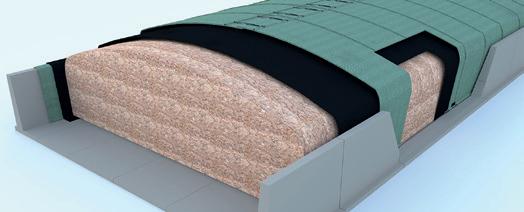

• Labour-saving thanks to fast and efficient tensioning technology.
• Easy ensilage in layers possible.

• Perforated pipe for rainwater drainage.
• Protection of concrete pit walls against aggressive media and acids*.
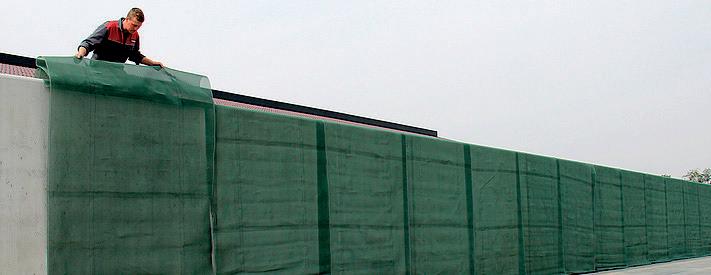
*inconjunctionwithstandardsilagefilm(providedbyothers).

35 MARCH 2023
1 Quay Business Centre, Harvard Court, Warrington WA2 8LT Tel: 01925 629393 Email: agri@huesker.co.uk
address: www.huesker.co.uk
Web
The 2022 maize-growing season was challenging; not least due to the widespread droughts, so what should growers be considering ahead of the coming season? Wendy Short reports.
Making plans for maize in 2023
Each growing year is different and it is unwise to base decisions solely on the previous season’s conditions, says Andrew Cook, of KWS.
Instead, he recommends taking a ve-year average before making plans for varietal selection, seed bed preparation and sowing.
Varietal selection is probably one of the most important factors in ensuring a successful maize harvest, says Mr Cook.
“Forage maize should have a high dry ma er rating and starch content should be a minimum 30%. Milk producers who feed a total mixed ration (TMR) could include some ultra-early varieties in their portfolios. ey require
fewer days to reach maturity and can bring harvest dates forward, allowing early access to the clamp.
“ is will be particularly helpful if grass silage yields fail to meet expectations.

“On farms where maize represents a signi cant proportion of the diet, the addition of some of the later-maturing varieties may be useful. ey tend to combine high energy yields with moderate starch content and these qualities can reduce the risk of acidosis in the herd.”
Rising input costs will have a ected decisions on whether to use a pre-emergence as well as a post-emergence herbicide, but he views the application of both treatments as an ‘insurance policy.’
“It is well-documented that maize plants will not get o to a good start if they are faced with early competition from weed species,” he says.

“Another advantage of a pre-emergence spray is that it will help to minimise weed growth, if the weather causes delays to post-emergence treatment timings.
e nal decision will depend on the individual business and the cost of the additional expense has to be factored in to the gross margin calculation.”
Patience

Every year Mr Cook urges growers to exercise patience at drilling time, as the soil must have reached an even temperature of 8degC for three-to-four consecutive days on elds with light soils and 12degC on heavy soils.

“Seed breeders have made great progress in improving the genetic potential of maize varieties over the past several years, but some of these gains will be lost unless sowing takes place at the correct time,” he says.
“It is not easy to get the timing right, but as a general rule it is be er to wait until the soil has warmed up. Premature drilling will lead to delayed germination and the young seedlings will have an uneven emergence pa ern.
“Sowing into cold soil will also place limits on nutrient uptakes.
Drill depth recommendations
“Conversely, late drilling will delay cu ing dates and may take some farms into a period which is less-than-ideal for harvesting.
“ is can result in crop yield and quality losses, along with soil structure damage which can have a negative e ect on the following crop. In cases where drilling is expected to be delayed, then early-maturing varieties can allow for a degree of catch-up.”
If the coming season proves as dry as last year, growers can miti-
36 GRASSLAND & FORAGE MARCH 2023
Liquid with the UK’s largest independent manufacturers of liquid fertiliser. Offering 24/7 dedicated support to UK grassland farmers, with national coverage and local service CONTACT US TODAY Call 01526 396000 Visit www.omex.com
Go
Timing Early-to-mid season (April to early May) 5cm Mid-season (early May onwards) 5-7cm Late season (mid-May onwards) 7-9cm
Sowing into cold soil will also place limits on nutrient uptakes
ANDREW COOK
Young maize plants’ good start can be hampered by weeds.
Drillling depth will be crucial, particularly if it is a dry year.
gate risk by using deeper drill settings compared with the standard gure used on the farm, he adds.
“Deeper drilling can give seeds and seedlings a greater degree of protection from a lack of seedbed moisture post-planting.
“As long as the seedbed has been well-cultivated and the soil is friable, increasing the drill depth can permit plant roots to reach further down into the soil to access water and nutrients.
“It can also increase stem strength in the crop, to give greater lodging resistance.
“We have been seeing strong

autumn winds become part of the UK weather pa ern and using deeper drilling to manipulate crop performance can be especially bene cial for maize which is sown in relatively exposed areas.”
Oxygen


However, it is essential to ensure that deeper seed placement is combined with measures to create an environment with su cient oxygen, he warns.
Maize plants will not reach their potential if they encounter compaction and anaerobic conditions will lead to a percentage of seeds

SCAN ME
failing to germinate.
On most dairy units, sub-soiling will usually o er the cheapest and most cost-e ective solution.

Applying the correct drill se ing is another important element of crop management, he says.
“Try to avoid rushing when the drill is being calibrated; that will apply whether you use your own machinery or employ a contractor.
“Take care to eliminate double plants, which will have a weak root structure and will compromise yield and uniformity along the row.
“My nal advice is to ensure seed placement accuracy; this will reduce inter-plant competition and produce a uniform pa ern of light interception.”
REVITALISE YOUR GRASSLAND

Well managed grassland is essential for maximising productivity. Soil conditioning as well as over-seeding or reseeding will help achieve greater yields from grassland.

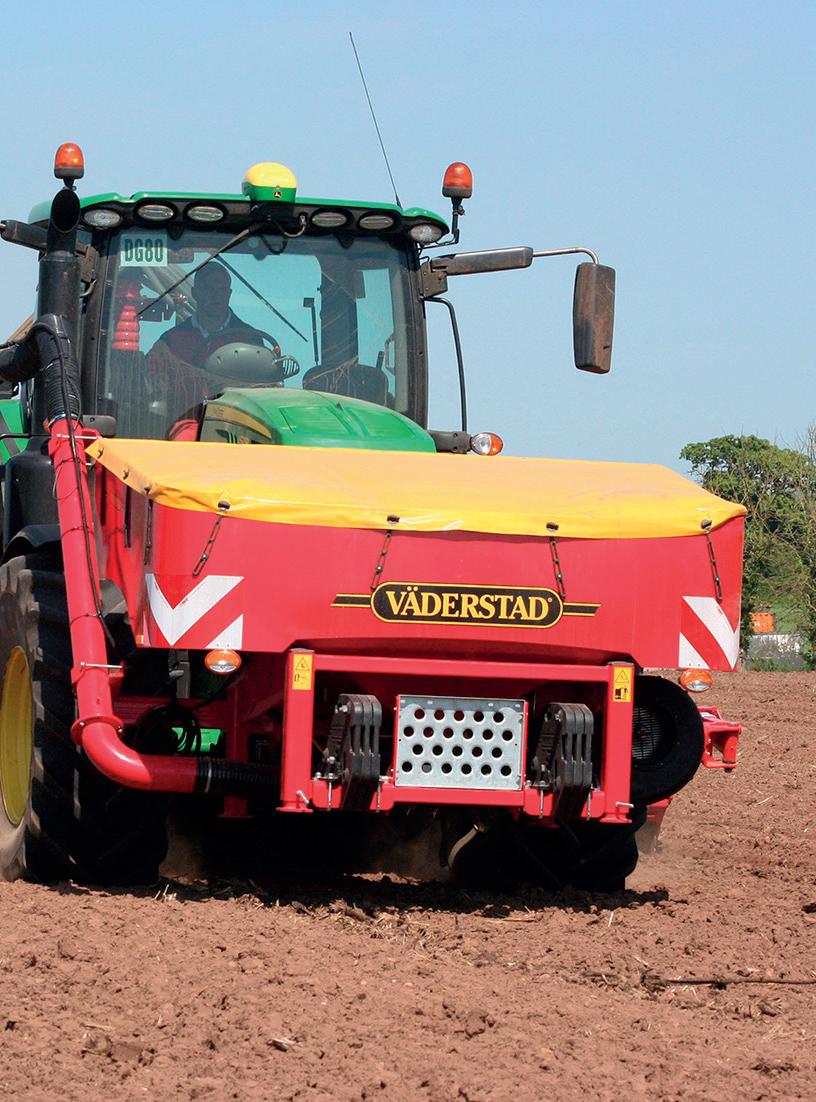
Correct usage of OPICO’s range of grassland maintenance and improvement machinery will increase quality and profitability.


• Harrow & Seeder - improve and maintain grass quality




• Grass Master - a harrow and seeder designed for large scale farms and contractors

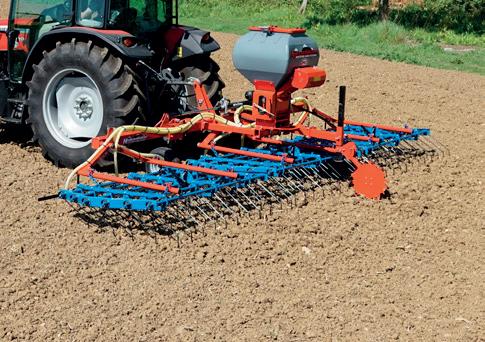
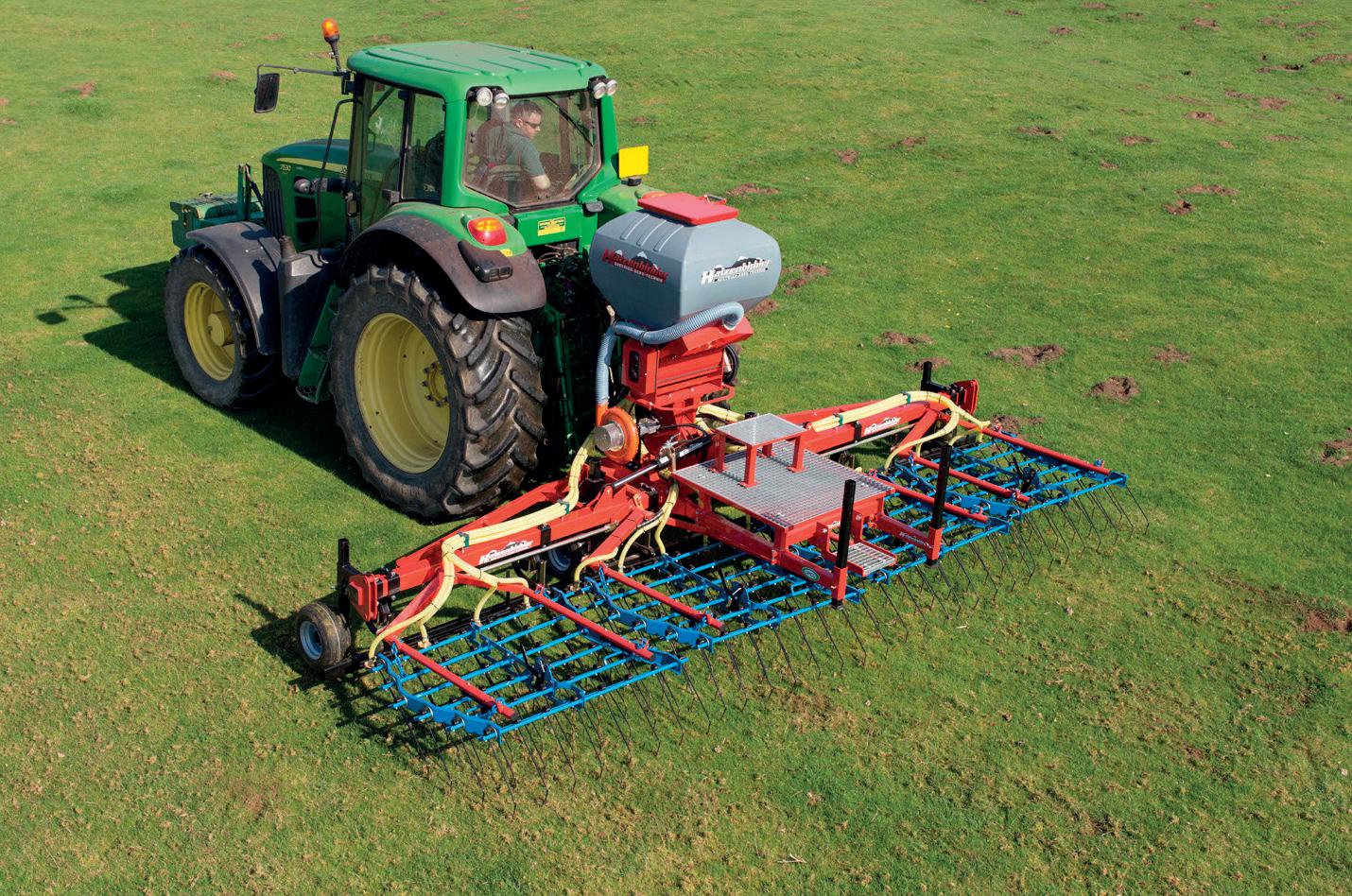
• Sward Lifter - improve soil health, drainage and aeration



37 GRASSLAND & FORAGE MARCH 2023
#MoreFromGrass
OPICO Ltd. 01778 421111 ask@opico.co.uk opico.co.uk Profit from our knowledge
Grass Master
Scan from your mobile to find out more opico.co.uk
SWARD LIFTER
HARROW & SEEDER
Maize needs warm soil to germinate.
Andrew Cook
With high commodity prices putting added pressure on farm margins, a more focused approach to grassland management could reduce reliance on bought-in fertiliser and feed. Dairy Farmer reports.
Maximise productivity to offset higher fertiliser costs
High fertiliser costs, particularly for ammonium nitrate, have brought into sharp focus the need to use inputs e ciently and e ectively.
Agronomist Rhys Owen, of Field Options, says that environmental pressures and the Government’s greening policy are also adding to the need to reassess how and when fertilisers are applied to permanent and semi-permanent pasture.
But he says there are a few simple steps livestock farmers can take to optimise the productivity of their grassland and thereby reduce their reliance on supplemental N. e rst step, according to Mr Owen, is to assess soil health and build an accurate picture of the soil’s existing bank of nutrients.
He says: “Regular soil sampling is the rst port of call for anyone who wants to improve production and use nutrients more e ciently, while also protecting the environment.
“ is is the only accurate way of accurately determining nutrient status and any increasing or decreasing trends in levels.”
Soil pH is the main driver for nutrient availability, Mr Owen says, with the target pH for grass and clover on mineral soil in the range of 6.3-6.5.
At this range nutrient availability is optimised, while the availability and impact of antagonistic elements is reduced.
Efficiency
e e ciency of applied nutrients, whether manufactured or organic, will be greatly increased within this pH window.
Mr Owen says: “But it is no use soil sampling if you cannot decode the results. at is where working with an experienced agronomist really adds value. By analysing the results, an agronomist will be able to recommend an appropriate course of action to improve the
soil’s nutrient status, biology and enable existing nutrients to be accessed and utilised e ectively.”
Step two, assessing and improving soil structure, goes hand in hand with soil health, he says.
“ e primary aim here is to remediate any excessive soil compaction which limits root development and exploration, so plants can scavenge moisture and nutrients more e ciently. Soil biology, be that bene cial microbial populations or earthworms, all require oxygen.
“Providing the right conditions for soil life will increase nutrient availability and cycling from soil reserves.
“Aerators can be used to remediate compaction which is close to the soil surface or to alleviate capping. Deeper layers of compaction will require a grassland subsoiler to break the a ected zone.”
ird on Mr Owen’s list of ways to maximise grass production is to reseed older or unproductive swards.
He says: “Even though the costs of reseeding can be £400-£700 per hectare, the longer term nancial bene ts are worth it.
“While the average sward will produce about seven tonnes of dry ma er [DM]/ha at a metabolisable energy content of 10.8ME, a young, well-managed ley can produce closer to 13.5t DM/ha at 12-12.5ME.

“ at equates to signi cant increases in livestock production, be it liveweight gain or milk production.
“Reseeding also gives growers the opportunity to address any soil compaction issues and to introduce new species, with more productive, be er quality grasses also reducing the requirement to purchase bought-in feed.”

In terms of species selection at reseeding, Mr Owen’s fourth recommendation is the consideration of the inclusion of herbs and clovers.
He says: “Herbs such as chicory and plantain might have
38 MARCH 2023
Trials have shown that a young, well-managed ley can produce up to 13.5 tonnes of dry matter per hectare at 12-12.5ME.
a lower yield potential than perennial ryegrass. But they also have a di erent growth pa ern, especially in dry seasons when their deep roots provide added drought tolerance.”

Herbs can be grown as pure stands, but are more commonly sown in mixtures with grass and clover, the la er of which boasts its own unique bene ts.
Mr Owen says: “Clovers do not suit all situations, but they should probably be grown more widely than they currently are. White and red clovers will increase forage yields, thanks to their summer growth habit, which means they work hard when grasses are in decline.
“And of course their ability to x nitrogen, between 150kg-250kg N/ha annually, means partner grasses will bene t in the longer term, with the inclusion of clover reducing the total requirement for arti cial N to be applied.
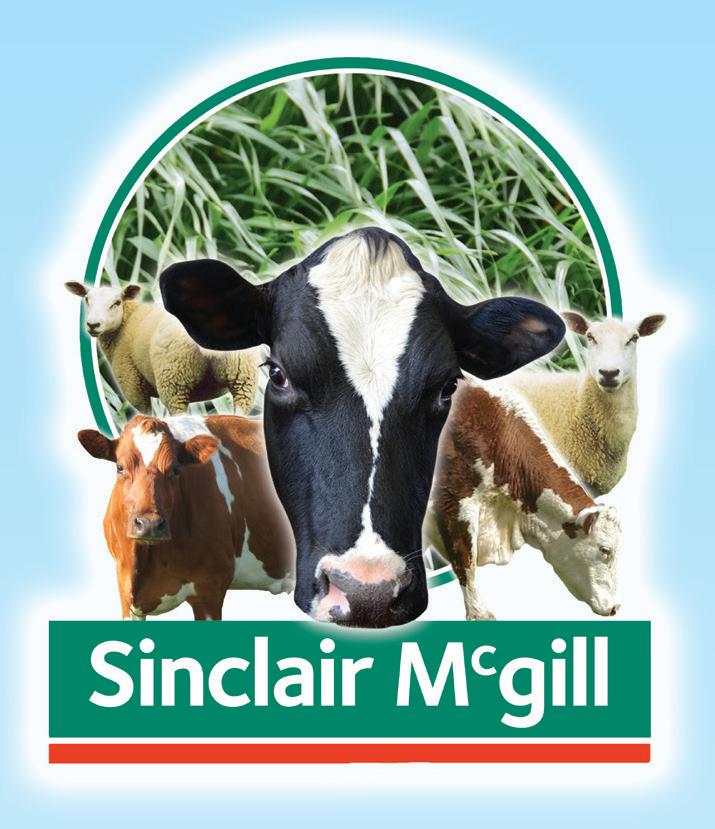
“Red clover, with its deep-rooting nature, has good drought-tolerance and is an excellent source of sustainably home-grown protein.”
Mr Owen also emphasises the role grazing has on sward productivity.
Composition
























He says: “Grazing intensity partly governs sward composition, with any amount of under- or overgrazing having the potential to compromise productivity.

“Regular sward measurements using a plate meter or sward stick should therefore be used to assess growth rates and balance grass cover versus on-farm demand from grazing livestock.
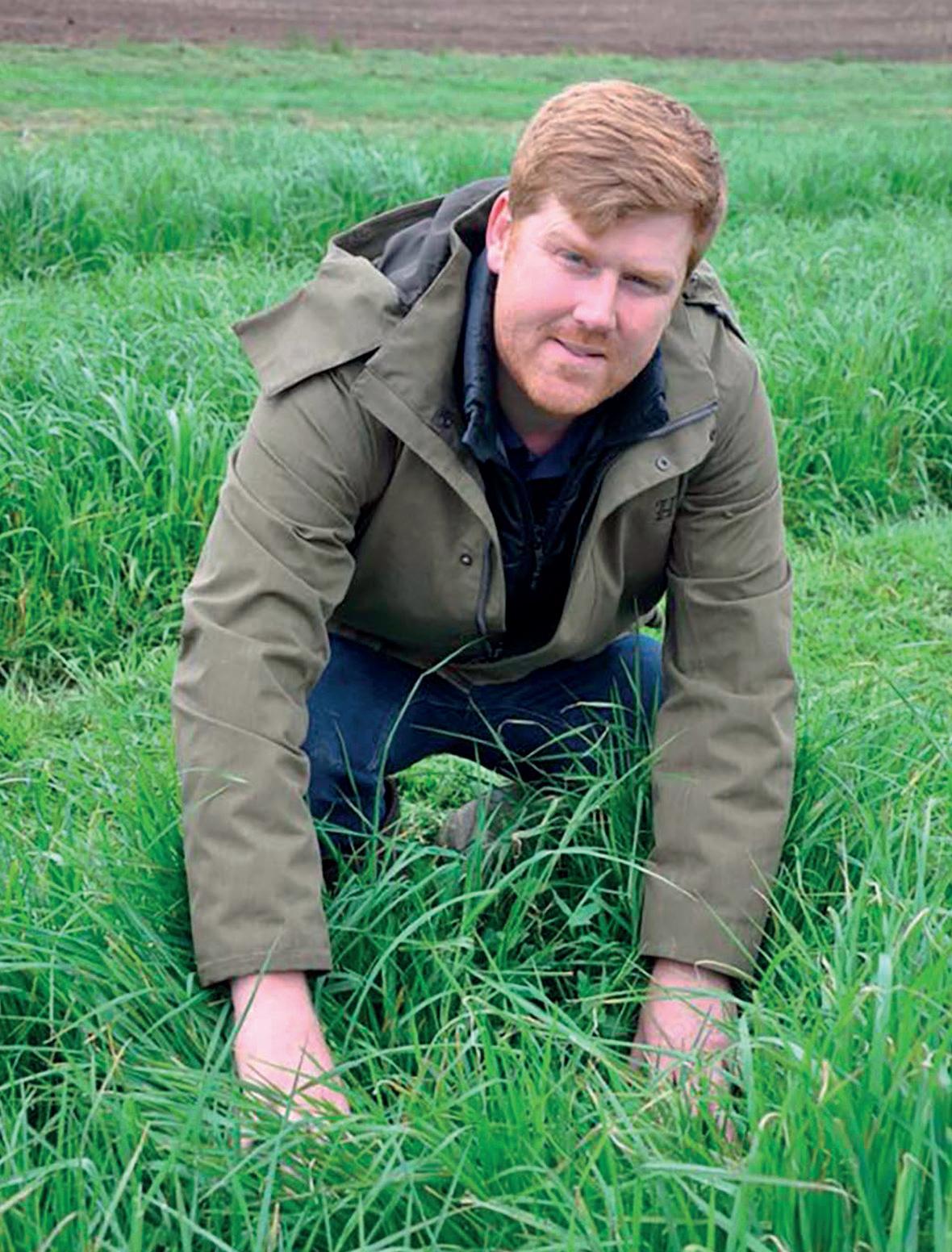

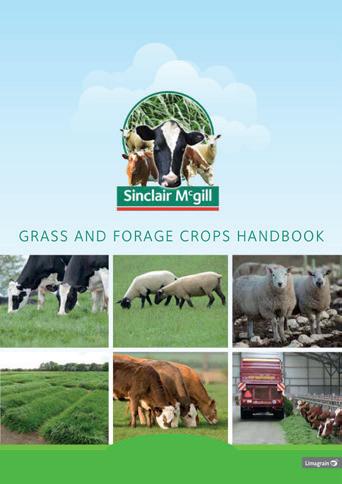
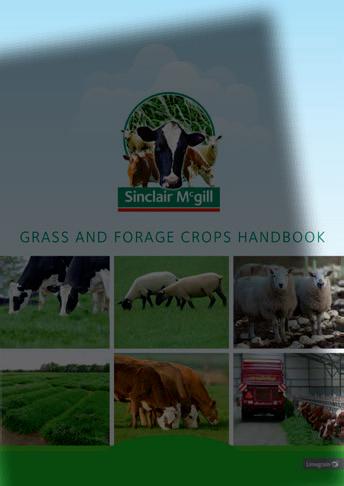
“Rotational grazing and the sub-division of elds with fencing infrastructure will not only improve grass utilisation, but also improve grass production by protecting new leaf growth and maintaining plant root mass.”


39 GRASSLAND & FORAGE MARCH 2023 50 years of trusted leys Or contact your nearest stockist for more information Turbo charge your grazing TURBO® MEDIUM TERM GRAZING For your free Grass & Forage Crops Handbook, call 01472 370117 or email: enquiries@ limagrain.co.uk
Rhys Owen
Not a new product to the market, forage peas have been in and out of fashion over the years, says John Spence, forage crop product manager at Limagrain UK.

However, more recently, interest in the crop has seen a rise due to high supplementary protein and fertiliser prices, combined with the soil benets of using a legume crop.
Mr Spence says: “Anything which is relatively high in protein, but also nitrogen xing, has seen a boost in terms of sales and popularity. It is another option and something for people to consider.”
Growing cost
Based on the latest gures from Limagrain, the growing cost of forage peas sits at about £102 per tonne of utilised dry ma er (DM) and £708 per hectare (£287/acre), making it a cost-e ective option for home-grown protein.
Mr Spence says: “It is important now, if not more than ever, to allow people to take control of their own costs to a certain extent.”
While protein content is dependent on the year, Mr Spence says crude protein levels generally sit at 16-20%, with a DM content of 20-25%.
Overall, digestibility value sits at 62-64%, with a metabolisable energy level of 10.5 MJ/kg of DM.
Dr Cara Campbell, senior consultant and area manager at SAC Consulting, part of

With a high protein content and the ability to maintain yields, forage peas could provide the alternative protein source dairy farmers have been searching for. Katie Fallon reports.
Forage peas: A protein possibility for dairy herds?
Scotland’s Rural College, explains the advantages of forage peas as a high protein source within the dairy diet. While forage peas usually contain a higher protein content than grass silage, the crop contains a higher level of rumen degradable protein. is is unlike by-pass protein, which is also required by dairy cows, digested in the small intestine, and is found in proteins sources such as soyabean meal and rapeseed meal.
However, to combat this, forage peas contain naturally occurring tannins which bind to the protein, protecting it from microbial breakdown in the rumen and allowing it to be digested in the small intestine along with by-pass proteins.
Yields
Dr Campbell says: “Without the tannins most of the protein would be degraded in the rumen and, in the case of a high yielding cow, she would
require supplementary protein to maintain higher milk yields.”
Dr Campbell advises farmers not to fully replace soya or other protein sources with forage peas, but says they can reduce the amount of supplementary protein required.
She says: “I would always say that forage peas are best fed as a silage, alongside a grass or maize silage or a wholecrop cereal. I would not put it in on its own and it should be used as part of a ration.”
In terms of production, studies have found forage peas to maintain dry ma er intake and milk yields.
However, Dr Campbell advises farmers to be aware that by-pass proteins may still be required.
She says: “It is about yield. The high yielding cows will need a source of by-pass protein as well as the peas, whereas a lower yielding
40 GRASSLAND & FORAGE MARCH 2023
Average dry matter (DM) yield 4-6 tonnes per hectare (1.6-2.4t/acre) Average fresh yield 20-30t/ha (8-12t/acre) DM 20-25% Crude protein 16-20% Digestibility value 62-64% Metabolisable energy 10.5 MJ/kg DM Source: Limagrain UK
Yield and feed quality
It is important to allow people to take control of their own costs to a certain extent JOHN SPENCE
John Spence
The growing cost of peas is about £102 per tonne of utilised dry matter.
cow does not have as high a requirement of by-pass protein.”

She adds: “Always talk with your nutritionist to determine the correct inclusion rates and how to alter concentrations to get the optimum milk yield and performance out of cows. Do not just go and do it yourself, speak to your nutritionist and get advice before you do it.”

Establishment

JWith a relatively flexible sowing date, between the end of March and early June, depending on the weather, forage peas can be harvested 11-14 weeks after sowing, making it a fast-growing crop.
Mr Spence says: “The fact that forage peas are a legume means they are high in protein, but also nitrogen fixing for the following crop, meaning it can work well in an arable rotation going into wheat or barley.”
Straightforward
Forage peas are fairly hardy and straightforward to grow. Preferring lighter soils and temperatures of at least 8degC for successful establishment, forage peas can be grown in most parts of the UK.
Mr Spence says the main causes of poor establishment tend to be due to bird damage, from rooks and pigeons in particular. He says that if the seeds are not sown deep enough, the rooks access the seed very easily and, once established, pigeons can become an issue.

41 GRASSLAND & FORAGE MARCH 2023 For more information visit www.ecosyl.com Grow more milk Trust Ecosyl to make your silage more productive Copyright © 2023 Volac International Ltd. All rights reserved.
Dr Cara Campbell
As grass swards become ‘tired’, there is more than one solution to improve productivity. Chloe Palmer hears advice from the experts.

Overseeding to improve soil productivity
Falling yields and declining grass quality in older swards can be reversed by overseeding, according to experts speaking at a recent event organised by Farming Connect in North Wales.
Elaine Jewkes, of Soil Sense, urged farmers to carefully assess their grassland before going ahead with any seeding operations.

Performance
She said: “Most dairy farmers will be constantly assessing the performance of their fields and identifying those which are not doing so well.
“There may be visible clues as to why some fields are not favoured by stock, such as
overgrown ‘discard’ patches where animals have urinated and dunged.
“I am not an advocate of dragging machinery through soil for fun, but I make an exception for a spade. Digging a couple of holes in a field and examining the soil to identify any compaction or other structural issues is vital before carrying out any remedial action.
“Compaction in the soil can be one reason for reduced yields. Grazing compaction tends to be found in the top two to three inches of topsoil, whereas compaction from machinery will be deeper, at about 8in.
“Soil nutrition may be suboptimal, which may also have an effect on grazing preference.
“Carrying out a soil analysis to inform nutrient management decisions is important.
“As a ley ages, weed grass species increase within the sward and ryegrass diminishes. It is worth pulling up a few grass plants to roughly assess the proportion of ryegrasses within the sward.”
Grazing
Many dairy farmers, especially those grazing intensively, may not wish to lose a field for part of a season, so overseeding can be an alternative to improve sward productivity while retaining resilience to hooves.
Ms Jewkes said: “Sometimes it is not physically possible to plough and reseed because of shallow soil or due to clauses in a tenancy agreement prohibiting ploughing or environmental restrictions. Overseeding is also usually cheaper.
“Where productive species, such as ryegrasses, make up more than half of the total cover of grass species, overseeding should be considered as an option. Where weed grasses account for more than 50% of the sward, it is usually better to reseed.”
Gareth Mitchell, agronomist at ProCam, agreed that overseeding could be a practical
The trial
JFarming Connect led a trial of overseeding permanent grassland linked to Bodwi, a Farming Connect red meat demonstration site near Criccieth, on the Lleyn Peninsula, to investigate whether it increased the productivity and feed value of the sward.
Ms Jewkes said she was pleased to see a significant difference between the treated and untreated areas.
She said: “The field was divided into three roughly equal areas: a control; one area where we harrowed and overseeded; and one where we aerated, harrowed and overseeded.
“The site was inspected in April and soil samples taken, and the overseeding carried out in June after it had rained.
solution where ryegrass remains dominant in the sward.
He said varietal choice was important to give new seeds the best chance of competing with established grasses.
He said: “The Recommended List is an essential tool when selecting varieties to ensure a good return on investment.
“When selecting a mixture, be aware of the characteristics of the site, taking into account soil type, climate and disease pressures.
“Typically, I would select a mixture composed of at least 50% tetraploids to ensure the germinated plant emerges strongly from the ground.
Varieties
“Including diploid varieties will provide ground coverage through strong tillering and will help to smother old grasses. White clover is also beneficial.” When preparing the sward ahead of overseeding, Mr Mitchell said the most
42 GRASSLAND & FORAGE MARCH 2023
There may be visible clues as to why some fields are not favoured by stock, such as overgrown ‘discard’ patches
ELAINE JEWKES
“After seeding, there was a long dry, hot period, so it took some time for seeds to germinate, but after some wetter spells later in
summer, there was good growth. When we sampled quadrats from each area on the site in August, they showed an increasing trend in both
yield and feed value from the control to the area which had been aerated, harrowed and overseeded showing the greatest improvement.
“It was difficult to demonstrate sufficient yield improvement to justify the return on investment for aeration, however.”
TAKE CONTROL OF GRASS SILAGE QUALITY



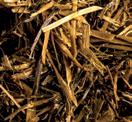
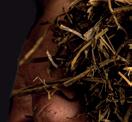
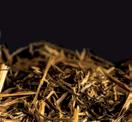
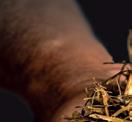

MAGNIVA crop and condition speci c inoculants are formulated for the multiple challenges of grass silage.




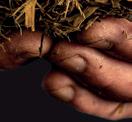
MAGNIVA grass inoculants contain a unique combination of proven bacteria and enzymes providing complete exibility on clamp opening times, in addition to:


UP TO % MORE DM 15
UP TO 13






UP TO % more protein 4 % More fibre digestability
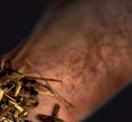
Scantogetyour FREE pre-cutgrasstestingpack


LALLEMAND ANIMAL NUTRITION ■ SPECIFIC FOR YOUR SUCCESS www.lallemandanimalnutrition.com +44 (0) 1684 580022
Before (left) and after (right) from the grass overseeding trial.
important consideration was the need to create good seed to soil contact.
He said: “ e rst stage is to graze the sward right down, ensuring minimal competition from current grasses. Using a direct drill is recommended as it will place the seed into a slot in the soil and close it up a erwards, creating the ideal conditions for prompt germination.”
Once the seed has been drilled, returning sheep to the eld brie y can knock back the old grasses and animals will also help to tread in the new seeds, providing ground conditions are not too wet, Mr Mitchell added.
He said: “A er ve to six weeks, check the new grasses are anchored su ciently by pulling a couple of plants and if they snap o , the sward is ready to graze. If the root comes up with the plant, hold o grazing for a li le longer.
“Grazing for a short period
When is overseeding preferable to a complete reseed?
rTo avoid losing a field for part of the growing season

rThe carrying capability of grass fields reduces temporarily after ploughing and reseeding compared to overseeding where the solidity of an established sward is retained

at this point, ideally with sheep, will encourage the new grasses to tiller, reducing the risk of broadleaved weeds lling any gaps in the sward. Hay or silage and yields should be equivalent to, or greater than, what they might have been had the sward not been grazed at this stage.”
Mr Mitchell recommended treating the weed burden in the same year as establishment and monitoring for eld slugs to ensure prompt control if necessary.
rOverseeding provides an opportunity to introduce newer grass varieties, clovers and other herbs without the need to plough the existing sward
rIn some instances, it may be physically impossible to plough and reseed

rCultivations, especially
ploughing, releases carbon from the soils and this may not be desirable
rTo save money – the cost of a complete reseed is about £864/hectare (£350/acre) compared to the cost of overseeding at £518/ha (£210/acre)
44 GRASSLAND & FORAGE MARCH 2023
Grazing for a short period at this point will encourage the new grasses to tiller
GARETH MITCHELL
Overseeding provides an opportunity to introduce newer grass varieties without the need for ploughing.
Planning ahead with applications of slurry and fertiliser to coincide with warmer soil temperatures is critical, according to Philip Cosgrave, grassland agronomist at Yara.

He says: “At the end of winter, farmers will be anxious to apply slurry, but delaying applications until soil temperatures increase and soils dry will make better use of nitrogen.
“Where it is applied closer to the onset of grass growth, there is less risk of losses to the environment.
“It is important to determine how much slurry is available to spread and the size of area to which it is applied to work out the rate of application per hectare.
“The results of soil and slurry analysis will indicate the balance of additional nutrients required. From this, it is possible to calculate how much fertiliser is needed and it should then be ordered as soon as possible.
“Postponing fertiliser purchase to the last minute in case there is a price drop could result in delayed application dates and lower yields. There is more money to be lost in lower yield and quality than saved in any likely future fertiliser price decrease.”
Grass carryover

Assessing grass carryover and taking appropriate action can make a big difference to the quality of grass harvested at first cut.
This is especially true where weather delays first cut until late May, silage expert at Volac, Peter Smith, says.
He says: “Grass grows for 12 months of the year across much of the UK, so

Getting the most from your silage

there will often be grass carried over from early winter.
“If it is not removed before early May, it can significantly reduce the quality of the first cut. Grass growth will be slower if ‘old’ grass is left, sometimes by up to 30kg/ha/day.

“Walking fields in March to assess carryover will allow decisions to be made about when first cut should be taken. It might be worth taking a ‘clearing cut’ and round baling it if contractors are not available to make clamp silage.
“The baled silage can be high quality, but more importantly, taking off old grass will substantially improve the quality of subsequent cuts.”
Set-up
As spring approaches, farmers may be thinking of investing in new machinery.
Krone’s Ben Davies says it is important to consider the width of the mower, tedder and rake to make sure they complement each other.
He says: “We recommend assessing harvest area in relation to available
resources to ensure silage-making can be completed within 24 hours. The tedder should be 1.5 to 2.5 times the width of the mower and the rake 1-2 times the width of the mower for optimum efficiency.”
Correct setup of machinery for the conditions helps to minimise the number of passes, reducing the risk of compaction and spoilage if ground is wet.
Mr Davies says: “Mowers with a large knife overlap prevent striping when grass is short and leafy. For early cuts, set the conditioner baffle to provide intense conditioning and the swath width to prevent tractor wheels pressing cut grass into the ground on the next pass.
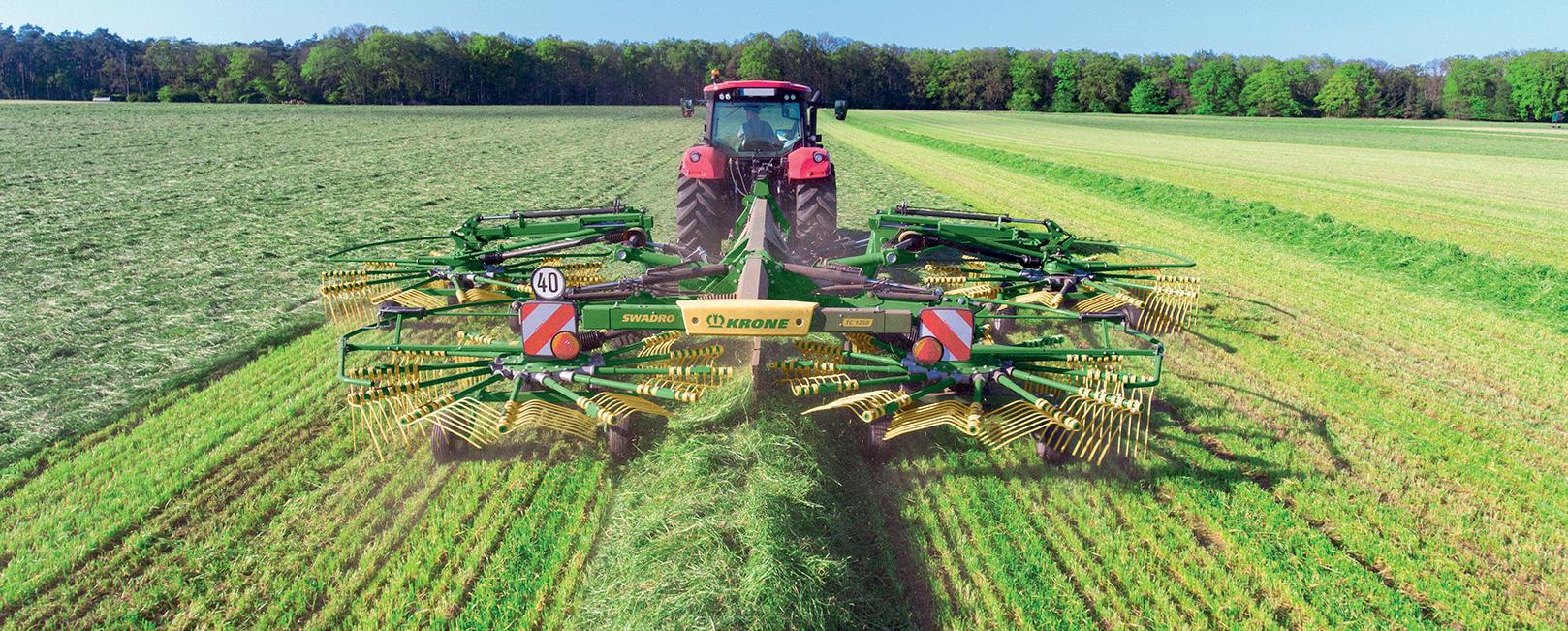
“Mowers should be set as flat as possible to provide the desired cutting height and avoid smearing, with the lowest possible pressure on the bed to follow the ground. This supports the tedder and rake to achieve a clean pick up.”
Investment
Decisions about reseeding grass swards need to be taken early in the season.

John Spence, of Limagrain UK, says this should be seen as an investment because it will increase output and feed value.
He says: “The importance of forage quality in terms of digestibility, energy, protein and sugar, is often overlooked. Farmers need to consider the feed value of every mouthful of grass, as well as yield.”
Mr Spence urges farmers to use Recommended Lists to choose mixtures for a reseed. He advises taking time to research those best suited to the intended purpose.
He says: “Interactions between different varieties in a mixture can be complex, so it is important the mixture is trialled and not just individual varieties.
“Limagrain trials Sinclair McGill mixtures to ensure desirable traits of individual varieties are carried through and demonstrated in mixtures.


“Productivity and persistency are inversely proportional, meaning the longer lasting a mixture is, the lower its yield. Italian ryegrasses will yield more, but are less persistent than hybrid ryegrasses, while perennial ryegrasses yield least but last longest. Earlier heading varieties tend to be higher yielding than later heading varieties, but are lower in forage quality.”

45 SPONSORED CONTENT MARCH 2023
The ‘to do’ list for dairy farmers before first cut can be long, but key tasks must be prioritised to ensure high-quality silage.
Find out more about Campaign for Better Silage at FGinsight.com/ bettersilage Sponsored by
Taking off old grass will substantially improve the quality of subsequent cuts.
Runners-up in the British Grassland Society grassland farmer of the year award 2022, Jeremy Way and Kate Lywood know a thing or two about grassland management. And as an organic dairy farm, they have strived to maximise their milk from forage, reducing concentrate costs. Ruth Wills reports.
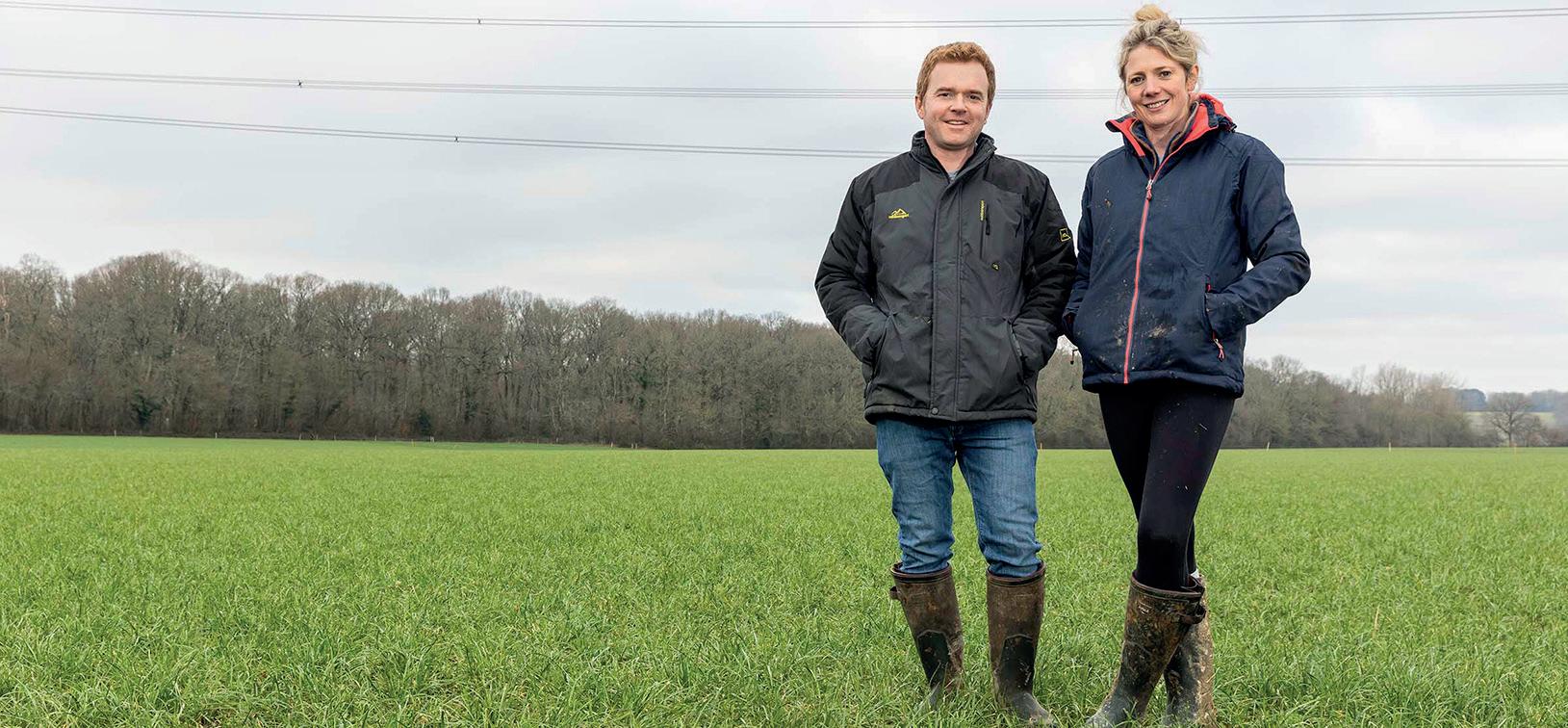
Maximising milk yield from forage K

ate Lywood is the third generation on the family dairy business, Marshall’s Farm near Billingshurst, West Sussex, started by her grandfather, Edward in 1968.
Her husband, Jeremy Way, joined in 2018, swapping his desk job for dairy cows.
Shortly a er Mr Way joined the farm full-time, they decided to go organic.
He explains: “We did not have to change much in the way we farmed, other than not using nitrogen.
“We had to switch to organic concentrates which are very expensive, but apart from that, we were close to organic anyway.”
Grazing
And he says the cross-bred cows suited the system well.
“Kate’s father, Roger, had been crossbreeding for years, so they are real grazing animal — suited to a low input system.

ey are very good at turning forage into milk,” he says.
Grassland management is an integral part of the business and taking on an extra 161 hectares
(398 acres) locally, has focused their a ention on making the most from grass.
“It is around three miles away, and much lighter soil, so we are out-wintering last spring’s calves there, it has just nished organic conversion,” says Mr Way.
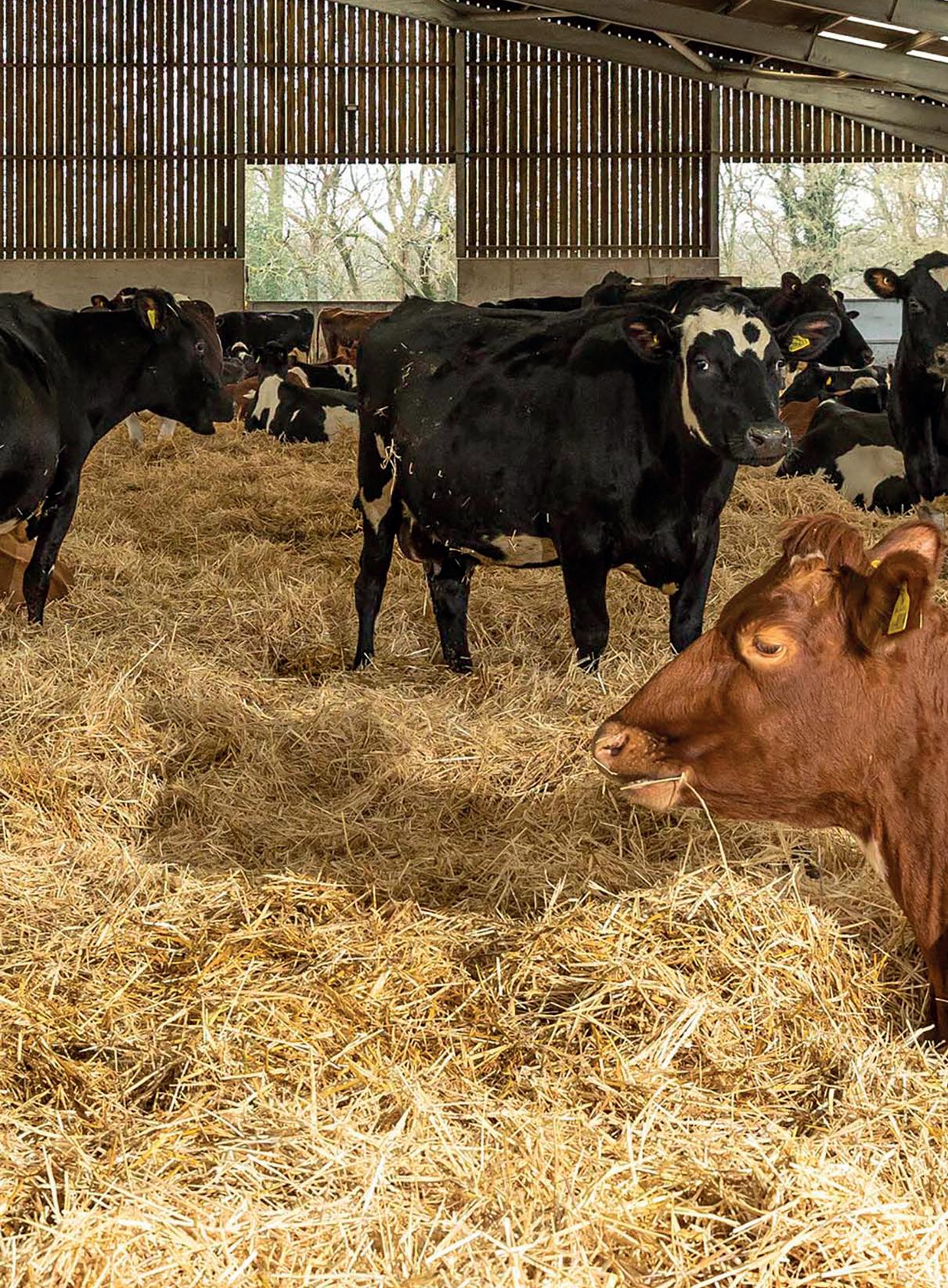
Although only three miles away, the soil types are completely di erent — with Marshall’s Farm a heavy clay.
Mrs Lywood says: “It is vegetable growing land, but our landlord wanted to have some livestock and clover on it to help rebuild the soil and fertility — recognising the importance of livestock in a rotation.”
e extra land has allowed them to increase stock numbers by 10% and they will take silage cuts o the ground too. ey have a robust reseeding policy and aim to reseed 10% of the farm every year.
“Organically we can achieve that through a break crop – so
in the spring we put in a crop of Winfred which is a cross between kale and turnip,” says Mr Way.
“It grows well and has high energy and protein. It works well in a drought and for cleaning up the soil — reducing the weed and pest burden. Before
: Martin Apps
46 GRASSLAND & FORAGE MARCH 2023
PICTURES
Organic farmers Jeremy Way and Kate Lywood.
The cross-bred spring calving herd will produce 3,600 litres from forage.
drilling the grass again in autumn, we graze it off and find it gives us a clean crop of grass.”
The couple use white clover-heavy leys.
Mr Way says: “We also use plantain in the mix for its deep roots, but tend to steer clear of the full multispecies leys.
“We find as a spring block calving herd, we graze quite hard and tight in the summer and most of the herbs except plantain do not persist and disappear after a year or two.

“We have stuck with what grows well here, which is a nice mix of ryegrass, white clover and plantain,” he says.
On the older leys, they use a grass harrow to remove dead and diseased plants from the base which helps to keep the leys fresh.
“We also use a sward slitter to

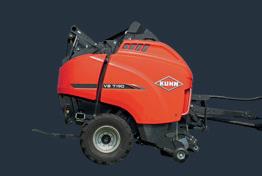

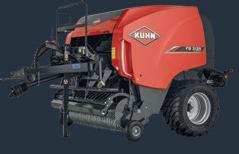
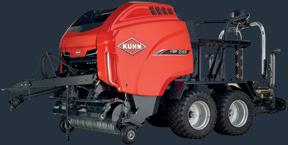
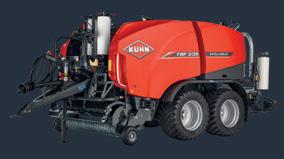
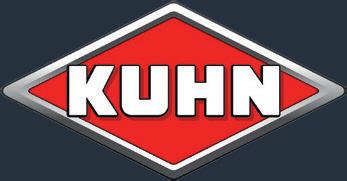
aerate the soil — that makes a big difference too.
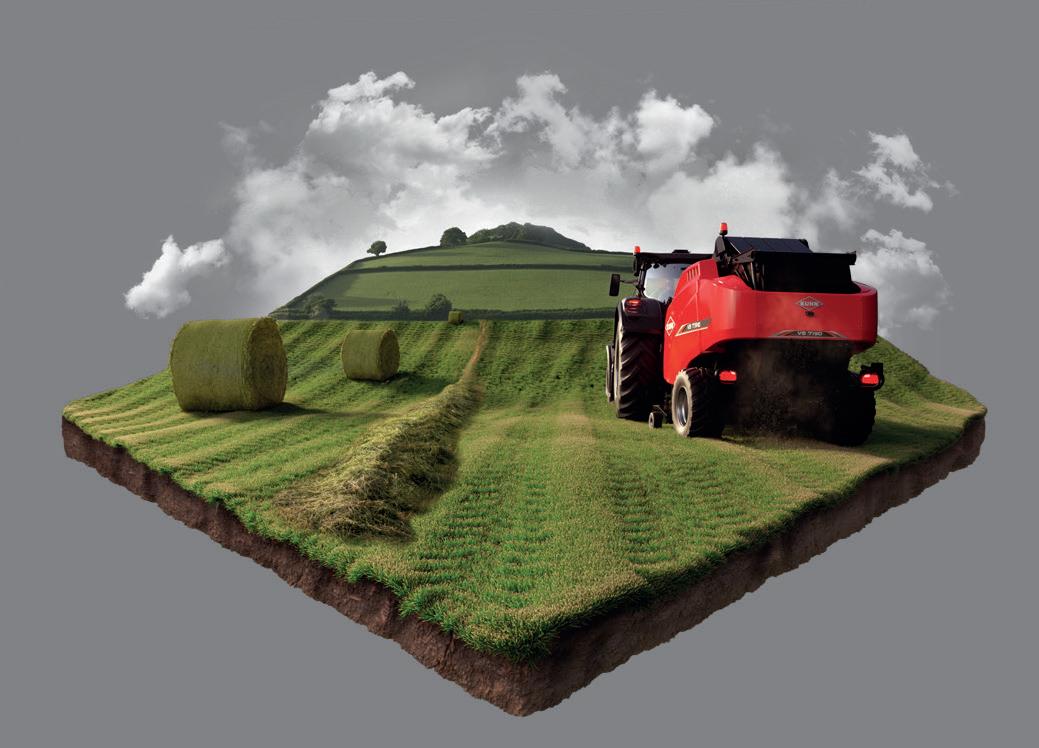
Mrs Lywood measures the grass once a week using a plate metre, recording the data on AgriNet.
“We use that to allocate the grazing every day, with cows going onto a fresh break of grass after every milking,” she says.
Dry matter
And the system is clearly working, as in 2022 they achieved 9.6 tonnes of dry matter/ha (3.8t/acre).
“Considering we had two months of pretty severe dry weather in the summer, we were really pleased — I think the fantastic growing conditions in the autumn made up for it.”
Due to their location in the South East, Mr Way says they want to produce as much forage
All balers and baler wrapper
47 GRASSLAND & FORAGE MARCH 2023 BALERS AND BALER WRAPPER COMBINATIONS SPECIAL OFFER
valid until 31st July 2023. Offer available on FB, VB, FBP, VBP and SB models based on nett price. i-BIO SB FBP VB VBP FB For more information, please contact your local KUHN dealer or visit our website for details. www.kuhn.co.uk £500 OFF Kuhn-Baler-Special-offer-Dairy-Farmer-254x89-12-22.indd 1 18/12/2022 15:07
combinations* *Offer
as possible. He says: “It is just not available to buy and it would not be cost-effective if it was, so we need this big area to grow enough.”
During the increasingly dry summers, they have fed some silage.
“We actually housed the cows during the summer when it gets really hot, just to get them out of the sun,” says Mr Way.
They aim for three cuts of grass silage a year, which goes into the clamp, as well as some bales for dry cows.
Silage
“We have got a fair bit of red clover and Italian ryegrass in our silage leys which we find produces a high quality, bulky silage. In 2021, it analysed at 21% protein,” says Mr Way.
“We aim for the first cut around mid-May, then the second around eight weeks later, but with the increasingly hot, dry summers, we are going to try cutting earlier — at the
start of May to give us a chance of another cut before it gets burnt up.
“We take a third cut in September.”
A big benefit of the couple’s focus on grazing and silage is the reduced concentrate bill.
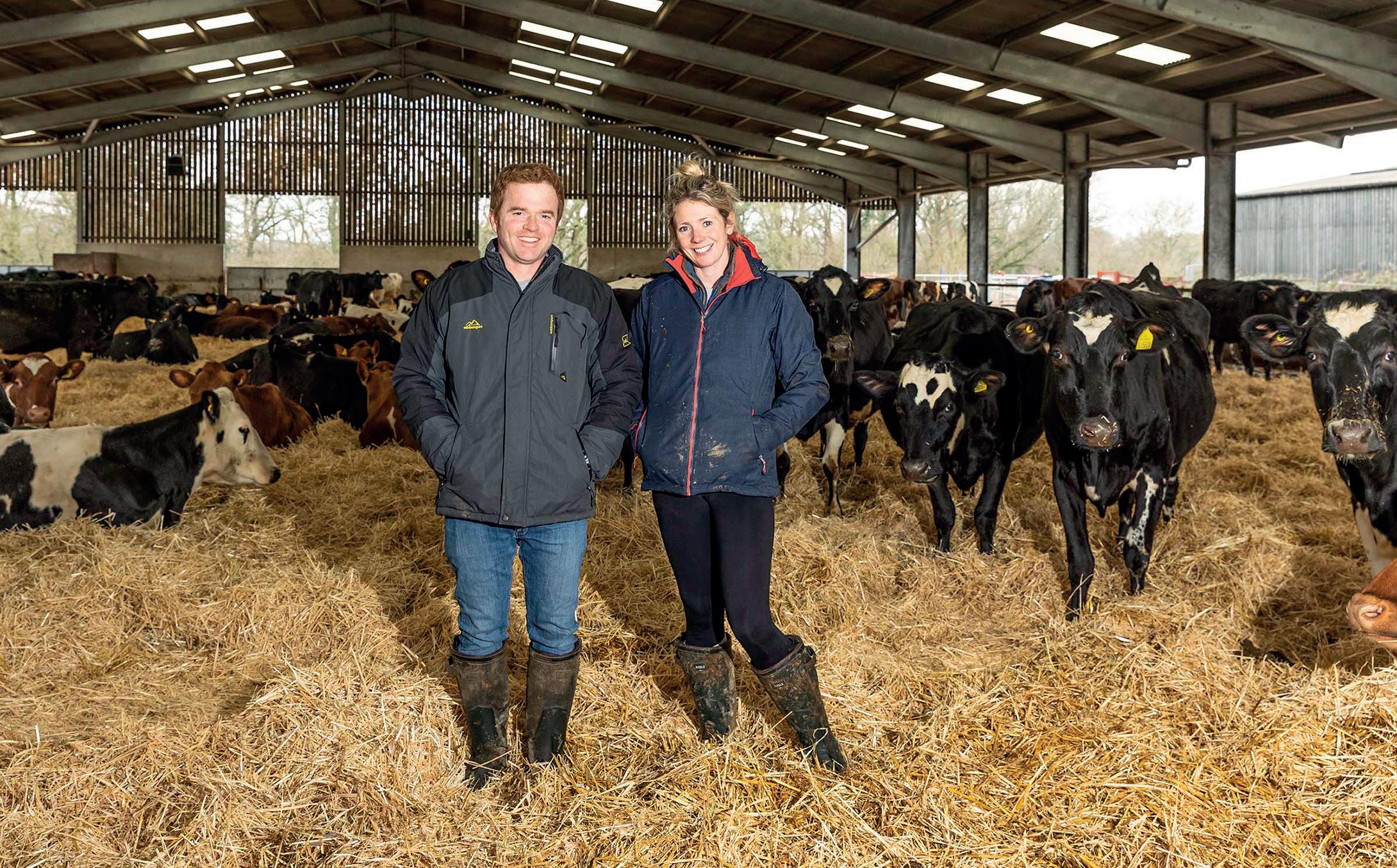
“Over the past year, each cow has been fed 950kg of concentrate, that is down from 1.3t the year before,” says Mr Way.
“Under a tonne of concentrate per head is where we want to be. If we could get down to 750kg per head, that would be the ultimate goal,
Farm facts particularly with current prices.”
The cows are currently producing 3,900 litres from forage.
“We are about 1,000 litres up on last year.
“On average, the cows are producing 5,800 litres with 4.68 per cent butterfat and 3.74% protein.”
The couple’s attention to detail with grassland management won them the runners-up title in the British Grassland Society, Grassland Farmer of the Year competition.
Success
“We were really pleased to get through to the final and to come runners-up,” says Mr Way.
So, what do they put their success down to?
“Reseeding and mechanical intervention definitely help — our leys look much happier and healthier than they did a few years ago,” says Mr Way.
“We have our own trailing shoe tanker now, so we are targeting slurry and manure appli-
r350 in-calf British Friesian, Norwegian Red and Jersey cross-bred cows, of which 80 are in-calf heifers
rAI to sexed semen for three weeks, then go to three Aberdeen-Angus bulls
rSpring calving
r115 one-year-old calves
rArla organic contract
r5,800 litres on average, 4.68% butterfat and 3.74% protein
cation into the plant base, rather than up in the air.
“The nutrients are going where they are needed.”
So, what does the future look like for the couple?
“We would like to try growing some barley to put into the cows’ ration, reducing our demand for bought-in feed,” says Mr Way.
“And we are looking at our carbon footprint.”
48 GRASSLAND & FORAGE MARCH 2023
Under a tonne of concentrate per head is where we want to be JEREMY WAY
Jeremy Way and Kate Lywood were runners-up in the British Grassland Society Grassland Farmer of the Year Award 2022.
INNOVATIVE SILAGING & MIXING TECHNOLOGY FROM £3,200
SILO BUCKET


Airtight feed preservation and precise extraction with convincing ease and speed of use.
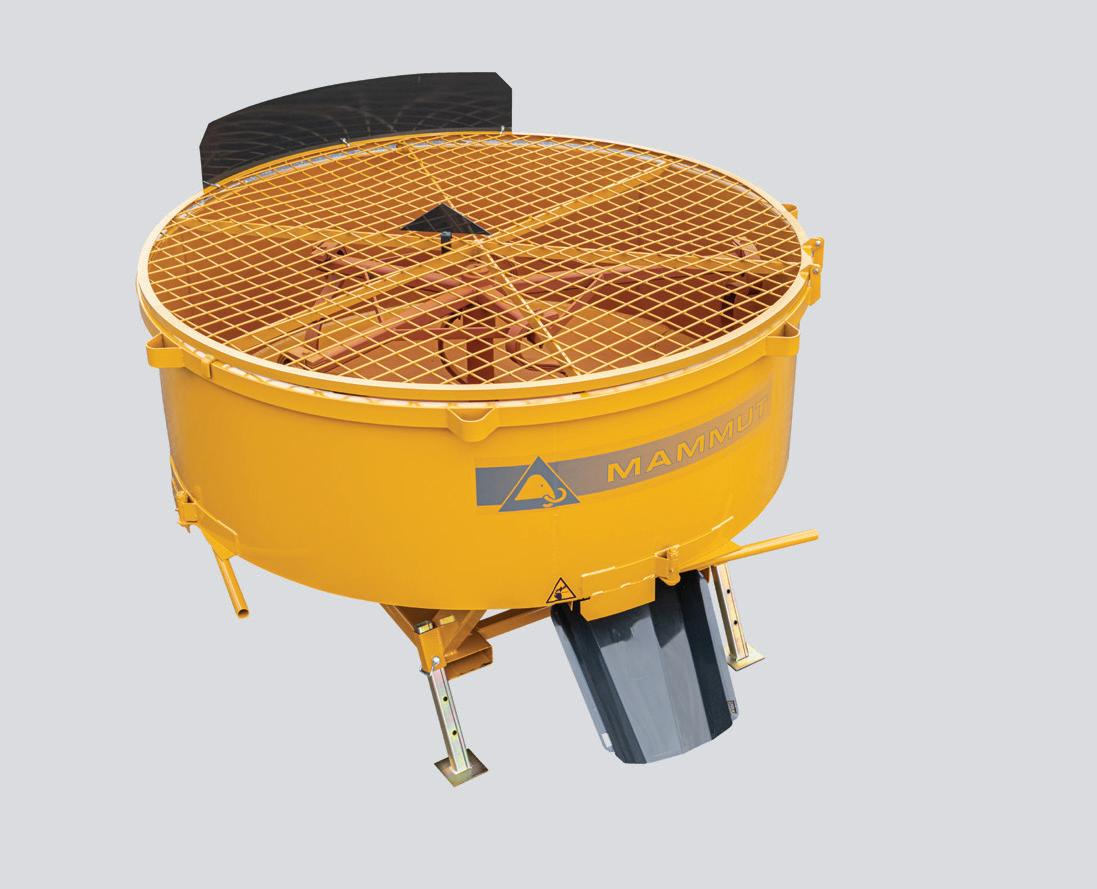
SILO KOMPAKT
SILO CAT FROM £3,500


Keep the cut surface firm and unimpaired, with an accurate cut that prevents air ingress or yesst and mould development.



FROM £6,800 FROM £7,500










Feed compaction to avoid unwanted air pockets and increase feed quality long term.
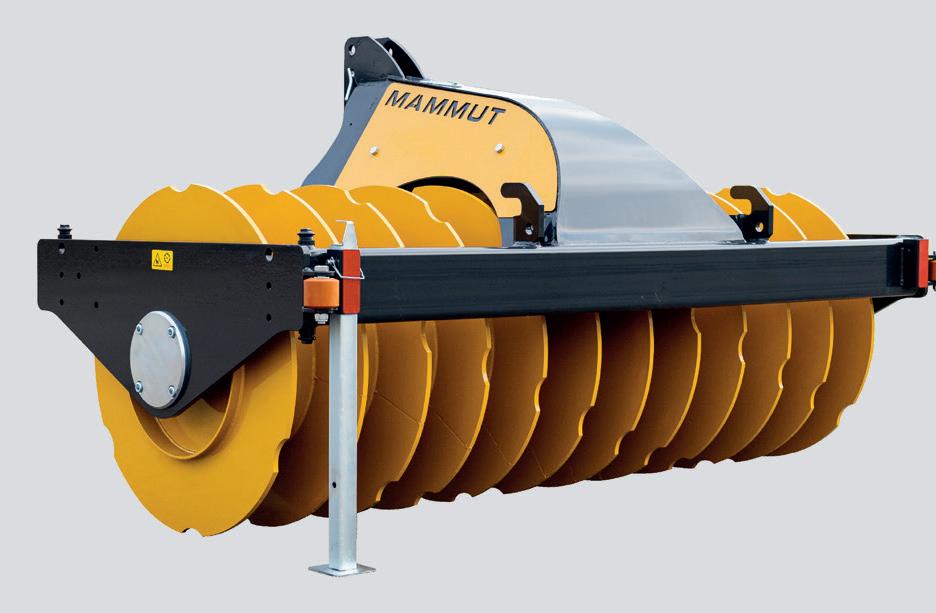


Available from:
01386 49155 info@weavingmachinery.net
WEAVINGMACHINERY.NET





SEED DRILLS I CULTIVATORS I FLAILS I HEDGECUTTERS
Fitted to a tractor or loader mounted with PTO or hydraulic drive. Highest grade steel and heavy duty gear box.
TURBO MIXER OFFICIAL UK STOCKIST
Increased costs and tractor power may bring the forage wagon back to the attention of dairy businesses looking to cut and clamp their own grass, without utilising the services of a contractor and self-propelled chopper. Toby Whatley looks at the market options for 2023.
A buyers’ guide to forage wagons
Originally offered as an alternative to a trailed forage harvester, wagons fell out of favour for some businesses as larger,
JFollowing the purchase of Lely’s forage business in 2017, Agco invested heavily in this product sector, including the Tigo forage wagons.
Sold as an exclusive Fendt product, the range covers
higher capacity self-propelled precision chop foragers became widely available.
However, with increased fuel costs, a shortage of operators, greater consideration of sward compaction
19 models in six ranges, with capacities ranging from 26-54cu.m.
The manufacturer advises the larger XR, VR and PR 31-54cu.m-capacity models are more popular in the UK market and feature knife sets of between 40-45, divided into two groups, giving cut lengths of 37-74mm.
The twin-gang design offers a claimed faster change of cut length by introducing or removing gangs of knives. Depending on the capacity, the units are
and higher horsepower tractors, the forage wagon is becoming more attractive for businesses looking to take greater control of their winter forage production by completing the whole process in-house.

JAustrian manufacturer
Pottinger claims to offer the largest model range in the UK market, with 58 variations designed for both farmers and contracting businesses. Split over four product groups, the range is manufactured in capacities from 24-54cu.m, fitted with 31 to 65 knives depending on the model.
The larger knife assembly provides a shorter chop length of 25mm, however, this does increase the machine power requirement.
To address this and allow for greater up-front input, the
supplied with 60kph rated double or triple-axle layouts, working in conjunction with a hydropneumatic self-levelling suspension.
The system works to keep the body of the trailer vertical when working on slopes or cornering during transport.
Tractor implement control and IsoBus allow for automatic adjustment of the forward speed depending on the swath size and load on the pickup reel.
JDistributed by Bourne-based Opico, the Strautmann range of forage wagons claims to offer a market-leading consistency in chop length using its Continuous Flow System.
This spreads the intake crop across the entire cutting area of between 32-48 double knives, which fills the body of the trailer at a reduced angle. Both features are claimed to reduce fuel requirement and knife wear.
The five-model range offers capacities of 23-52cu.m and
JSpanning four model ranges with capacities from 28-43cu.m, Krone’s forage wagon includes cam-less pickup reels operating up to 2.12 metres wide.
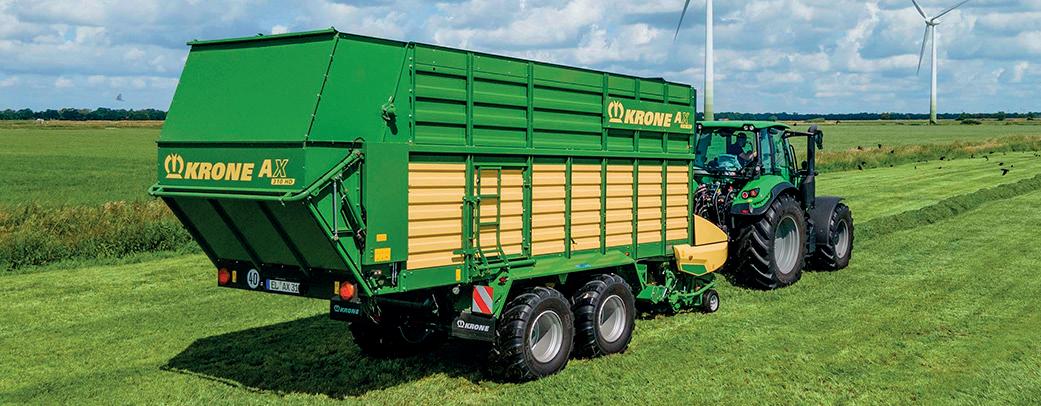
Following the pickup, all models use a Hardox steel feed rotor. Assembled in a ‘W’ pattern, the rotor is claimed to give a scissor-cutting effect on the material as it passes across the knife cassette.
Knife options range from 32-48 units, with automatic
half-set removal giving chop lengths of 37-70mm.
The three largest ranges include the manufacturer’s Speedsharp system as standard, which pivots the knife cassette from under the unit and sharpens
all blades simultaneously using a bank of hydraulically-driven abrasive wheels. When used to transport maize or grass alongside a forager, a cover can be fitted to prevent material from falling into the cutter unit.
JPotentially better known for its muck spreaders and chaser bins, Bergmann’s forage wagon offering is split over two ranges with four models in each. The smaller tandem-axle Carex is supplied in capacities
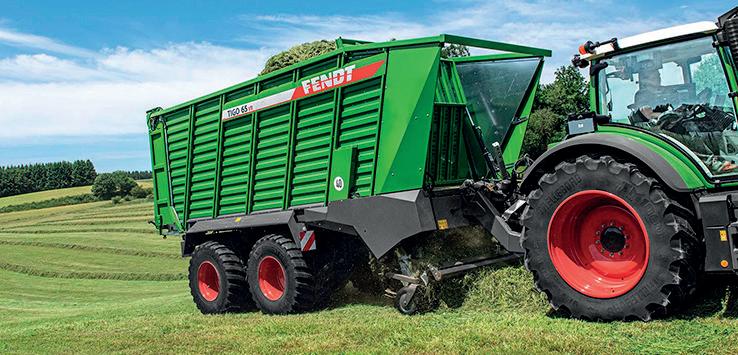
50 GRASSLAND & FORAGE MARCH 2023
Fendt
Bergmann
Pottinger Strautmann
Krone
manufacturer’s flagship Jumo range is rated for a maximum input of 500hp, claiming a higher throughput than a self-propelled harvester.
The UK market entry-level Faro range may be more suited to dairies producing regular,

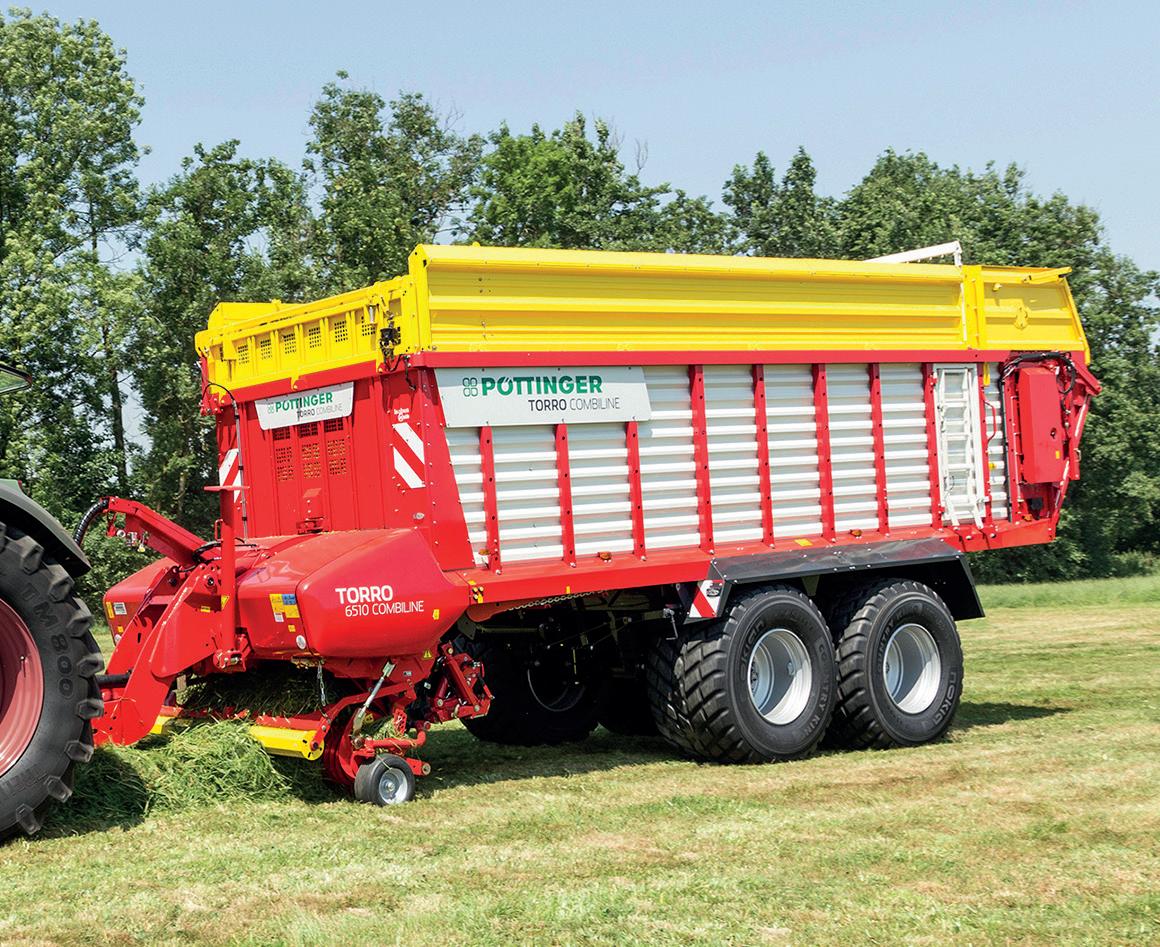


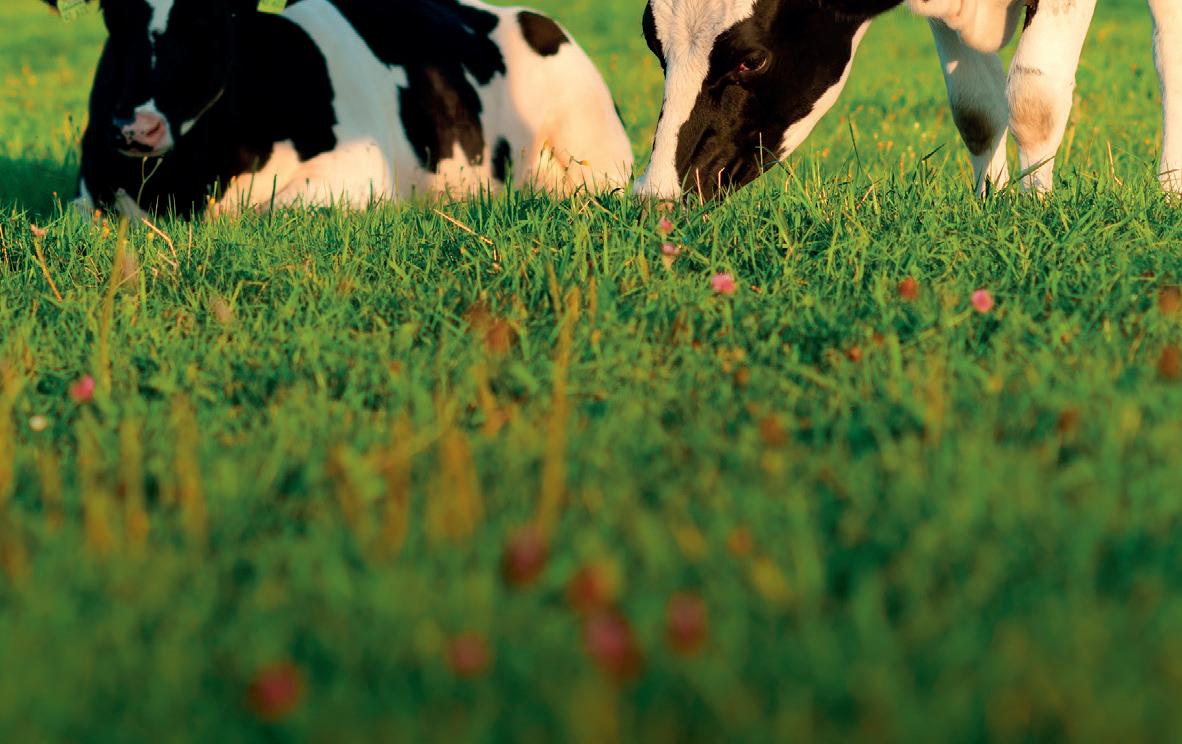

smaller cuts, with capacities of up to 33cu.m and a power requirement of 90-150hp.
All models are available with IsoBus control, with larger units including onboard weighing and an automatic blade-sharpening system.
can be fitted with the recently introduced Flex-Load pickup.
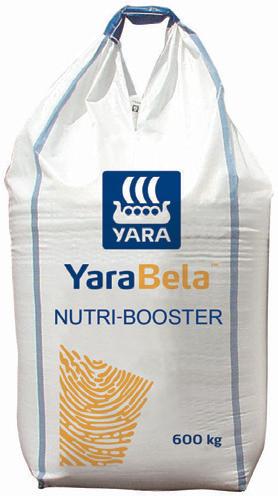
The design uses plastic tines in replacement of traditional spring steel, which Strautmann says adapts better to field surface
undulations and reduces soil and stone contamination to the cutting unit and the subsequent forage. Control is achieved through an in-cab control box or full IsoBus connection.

•
from 37-43cu.m, with a 2.05-metre-wide pickup delivering material through a 41-knife cutting unit.
The larger Shuttle range offers capacities from 45-51cu.m, with a wider 2.27m pickup

and 53-knife cassette and a combination of single and triple axles being offered.
The cut length for both machines is fixed at 34mm with access and tool-free knife removal achieved through hydraulically lowering the cassette and raising the drawbar.
All models are supplied with hydraulic suspension with an independent 300mm of travel per axle, which can be combined with electronic or hydraulic forced axle steering.
•
•
•
Grass: Still the cheapest feed!
your grass with Yara’s Booster range of fertilizers:
Feed
Contains Selenium for healthier livestock
Additional sulphur increases yield by
in first and
cut
10-15%
second
True uniform fertilizer – every granule
every nutrient
contains
No nutrient segregation –
an
spread @Yara_UK Yara UK agronomy.uk@yara.com www www.yara.co.uk N K P S N K P S N K P S N K P S N K P S
achieves
even
As maize becomes increasingly important in cattle diets, growers are also looking for new ways to improve and simplify its establishment, with many turning to strip tillage to reduce cultivation costs and preserve soil health. Dairy Farmer reports.
In parts of the world where the risk of drought is more prevalent, strip tillage is already a recognised and proven method of establishing maize, with an increasing number of growers in the UK also using the practice to reduce establishment costs, minimise soil disturbance and aid soil-moisture retention.

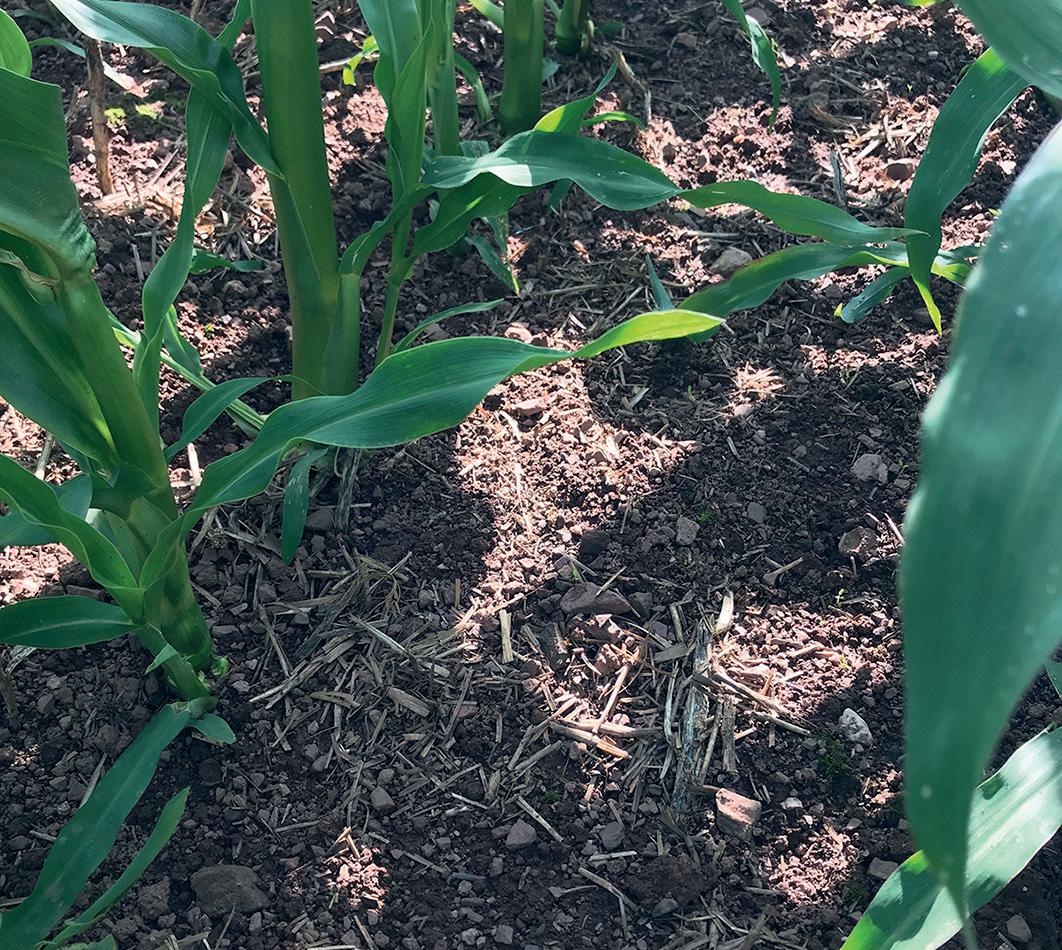
Simon Montgomery, of Field Options, says: “Strip tillage o ers a quick, easy and cheaper alternative to ploughing as a reliable method of establishing maize a er a range of crops, including grass, cereal stubbles and cover crops.
“It is also a viable method on permanent maize ground where its ability to protect soil structure o ers tangible bene ts, especially in wet years.”
Advantages
e main advantages of using strip tillage (or rip-on-row as it is also known) to establish maize is to reduce the number of passes to preserve soil structure and to limit moisture losses.
Mr Montgomery says: “Narrow strips of soil are cultivated using a low disturbance ripper tine to a depth of 20-25cm at 50-75cm
Stripping back maize establishment
spacings, with the exact tolerances dictated by soil type, pre-existing compaction and drill width.
“ e aim is to produce a relatively open and airy seedbed into which seed and fertiliser can be placed using a GPS-guided precision drill.
“In situations where the preceding crop has le a lot of trash, a cu ing disc in front of the ripper tine will prevent fouling, while a following crumbler roller will help to break up heavier soils and leave a clod-free seedbed with plenty of retained moisture.”
Mr Montgomery warns that on heavier land or in we er conditions, the seed drill should not follow directly behind the cultivator as this could cause clay-rich soils to stick to the drill’s coulters.

He says: “Instead, wait for the surface of the cultivated strip to dry o a li le to prevent blockages.”
In addition to conserving soil moisture and reducing fuel costs,
Mr Montgomery also explains that strip tillage can be of bene t to the soil structure of permanent maize ground and, in some cases, can reduce fertiliser requirements.
Strip tillage
He says: “Compared to ploughing, which can be detrimental to soil structure and reduce the ground’s ability to take and hold rain, strip tillage can help to conserve soil moisture as it drains naturally into the rip line, with the soil’s rmer structure between the cultivated rows also helping to reduce the risk of erosion.
“A well-structured soil will also enable crops to put down bigger roots, which not only boosts standing power as the crop matures, but also mitigates the threat of drought.
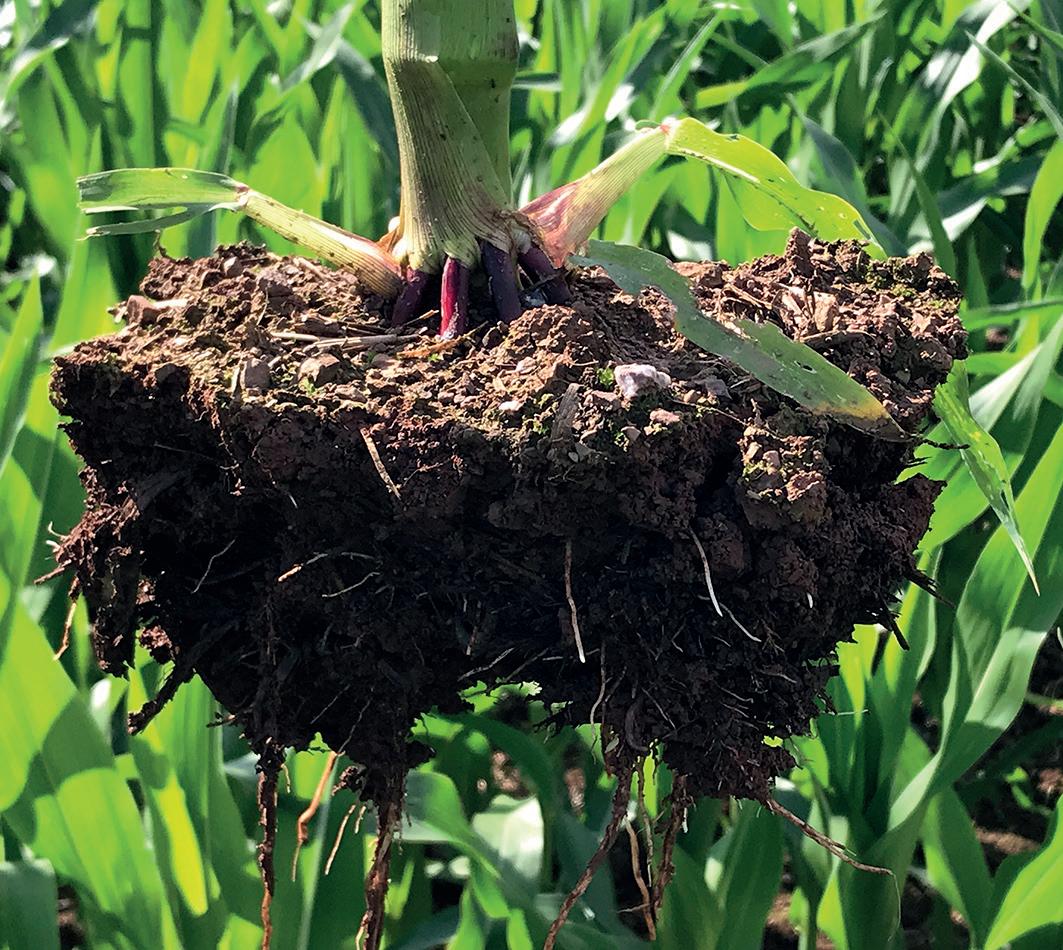
“For growers of high performing varieties, such as Agagold, this could be a blessing if the spring turns out to be as dry as some forecasters are
already predicting, as crops will need all the help they can get to ensure any protracted spells of dry weather do not impact on the crop’s performance.
“Free-draining soils will also be easier to manage at harvest, reducing the propensity for mud to be dragged onto roads and making it easier to prepare a seedbed for the following crop.”
Strip tillage also o ers additional bene ts where maize is being grown for crimping or grain.
Mr Montgomery says: “In addition to providing an energy-rich break crop, grain maize o ers the added advantage of pu ing organic ma er back into the soil.
“ is not only improves soil structure and fertility, but also boosts soil health by promoting natural microora and fauna, which as the latest ndings from Rothamstead shows, can help to reduce nitrogen losses as nitrous oxide emissions.”
52 GRASSLAND & FORAGE MARCH 2023
The main advantages of using strip tillage to establish maize is to reduce the number of passes to preserve soil structure.
A well-structured soil will also enable crops to put down bigger roots.
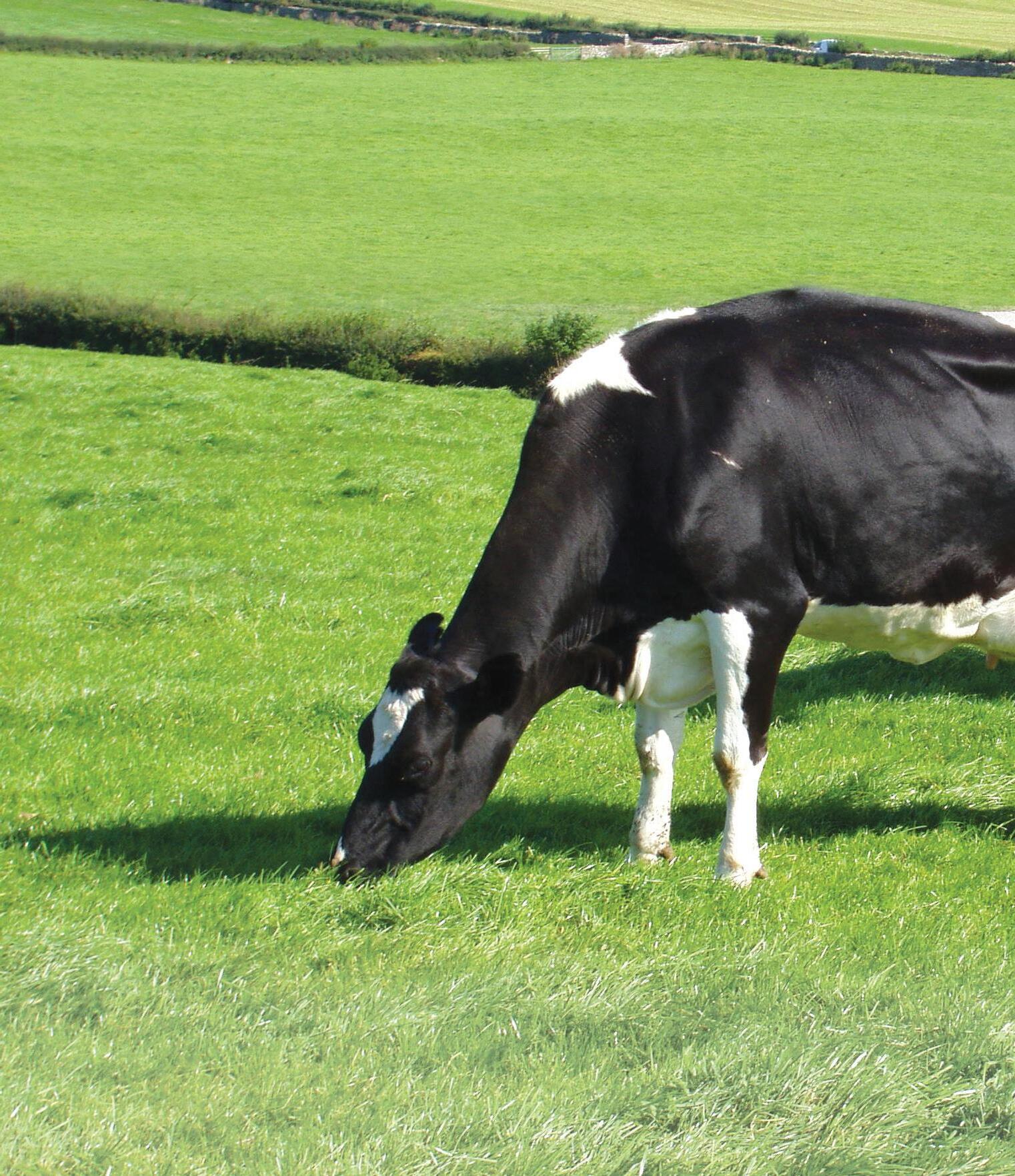






Fo cu se d on n utriti on Fo cu se d on n utriti on The first dairy compound range with Reduce your carbon footprint with SHEEP BEEF PLANET DAIRY PLANET PLANET Successfully fed on farms since 2019 ZERO soya and palm kernel Contact Massey Harpers Feeds: Holmes Chapel: 01477 536300 • Preston: 01772 206200 • Holsworthy: 01409 254300 or scan:
By focusing on multi-species swards and reducing nitrogen usage, Chris Mossman is aiming to build a financially and environmentally sustainable business. Dairy Farmer reports.
Tough times push farmer to improve soil health and reduce fertiliser use
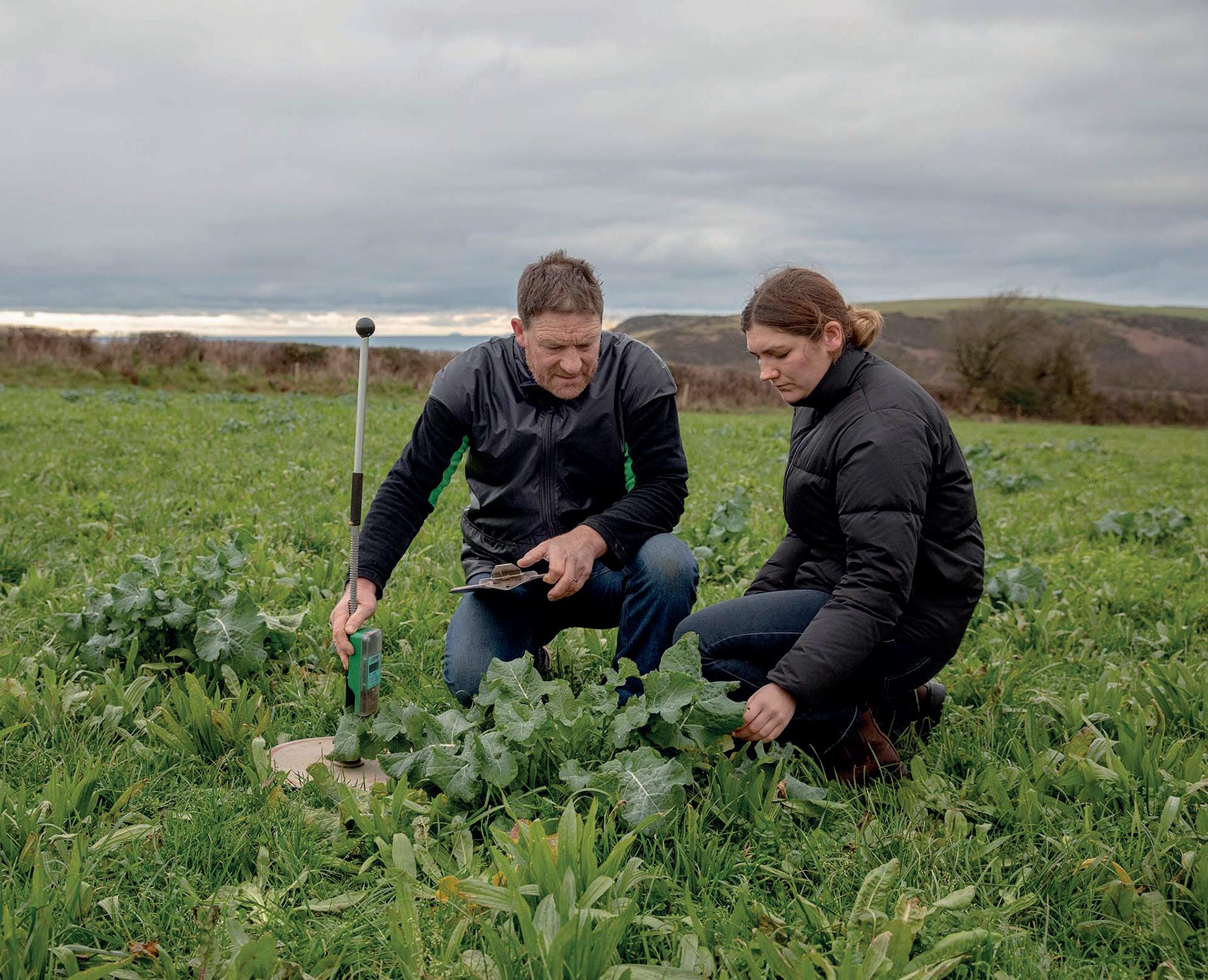
Since 2016, Chris Mossman, who farms near LLangrannog, Ceredigion, has suffered multiple bTB breakdowns, which pushed him to change aspects of his farming system. A move he believes has improved his farm for generations to come.
For many years, Mr Mossman farmed profitably
at Nant-y-Bach Farm, running what he describes as a ‘traditional farming system’.
Actively involved in a local discussion group, he worked hard to achieve the ‘norm’ of three cows per hectare (1.2 cows/acre), breeding replacements, an intensive three weeks of spring block calving and grazing from February to December.
In 2008, he started expanding
the herd, reaching the targets he set for stock numbers and yields eight years later.
Just as he had achieved all he set out to do, he had his first bTB breakdown. Since then, he has had reoccurring outbreaks both of bTB and, in 2018, pica.
“It was devastating,” says Mr Mossman, who farms with his daughter Bella. “We have lost so many animals to TB. Then
when pica hit us as well and cows were eating stones rather than grass, I desperately needed to do something and find out why this was happening.”
Pica is thought to be caused by a phosphorus deficiency, usually due to a poor phosphorus index in the soil.
However, when Mr Mossman tested his soil, the phosphorus levels were normal.
“It got me thinking – is the plant not taking up the phosphorus? It was the trigger for me to begin investigating soil and plant health and really understand what was happening on-farm.”
Mr Mossman began attending events and reading articles to
Farm facts
rNant-y-Bach Farm is based in Ceredigion
r202 hectares (500 acres)
r320 Jersey Holstein/ Friesian cross-bred cows
rSpring block calving
rGrazing is from February to December
rArla supplier
rAverage yield of 6,000 litres, 4,645 litres milk from forage in 2022
r4.8% butterfat and 3.8% protein
r517kg milk solids per cow
rThin, free-draining soils
rMinimum tillage system using contractors to drill
54 GRASSLAND & FORAGE MARCH 2023
Chris and Bella Mossman are aiming to have diverse swards across all the farm eventually.
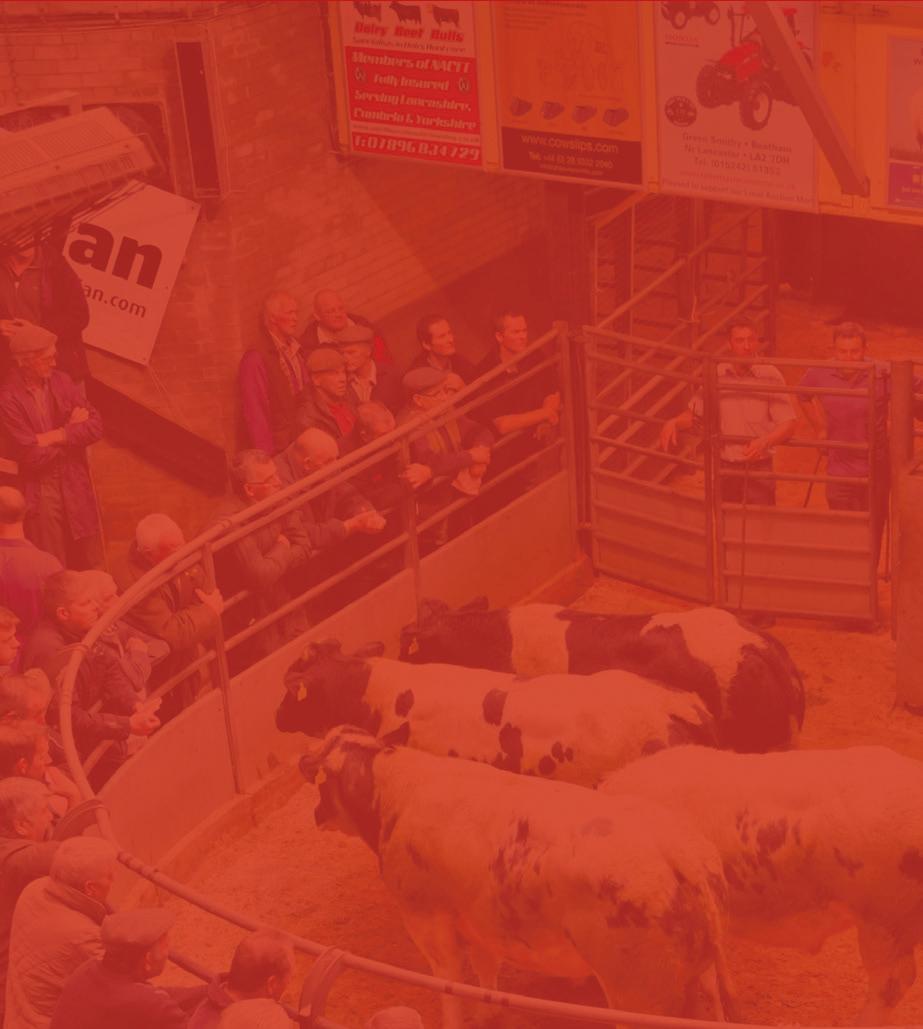



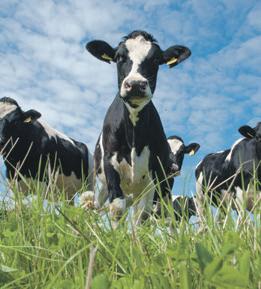



















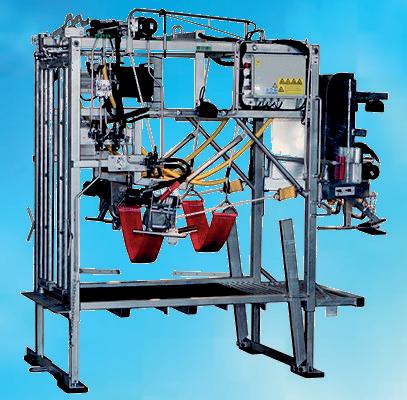



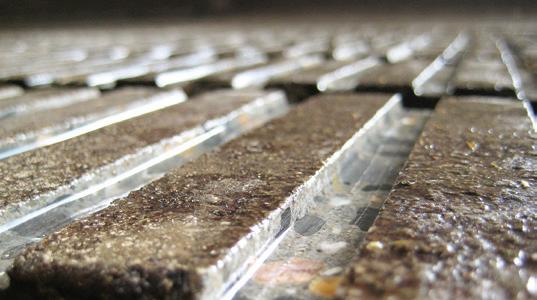

55 MARCH 2023 www.auctionfinder.co.uk Your one stop shop for all agricultural sales Search by sale type, mart, auctioneer or region There are 320 Jersey Holstein/ Friesian cross-bred cows on-farm. Follow us on Facebook: www.facebook.com/bdsupplies SUPPLIERS OF HOOF TRIMMING AND ANIMAL HUSBANDRY EQUIPMENT PHONE OR ORDER ONLINE Tel: 01738 842996 www.bdsupplies.co.uk sales@bdsupplies.co.uk KVK Hoof Trimming Chutes DEEP GROOVES FOR SOLID FLOORS SLAT GROOVES DIAMOND CUT
learn more about his grassland’s potential. He credits two speakers, both plant and soil health experts from Australia, Joel Williams and Dr Christine Jones, with having a big impact on how he farms.
Their research and advocacy for improving soils has changed Mr Mossman’s perception of ‘traditional’ farming.
He says: “I have now realised the damage we have done to our soils over the years, with fertilisers and monocropping, even though we thought it was for the best at the time.
“There has been an impact too on the wider environment and, as a result, consumer trust.”
Opportunity
Learning about nitrogen use provided Mr Mossman with the opportunity to change.
He says: “According to the experts, there were two main ways to reduce nitrogen use onfarm. One, use diverse swards and two, reduce the amount of fertiliser used gradually. This is exactly what we have done.”
The first 11ha (28 acres) of multi-species were sown in 2018 and, since then, all reseeds, about 12ha (30 acres) per year, have been diverse swards. There is still a mixture of leys on-farm, but Mr Mossman plans for his farm to

be fully multi-species eventually.
He uses both grazing and cutting mixtures – his silage going to dry cows and for buffer feeding in dry weather. Grass is measured every week to work out how much surplus there is to cut and bale.
He says: “We have experimented with different varieties and mixtures to see what suits our conditions. In our experience, plantain has been a far more persistent herb than chicory and spreads well.
“We are also expanding our grass species with cocksfoot replacing the ryegrass and I would like to experiment more with timothy and fescue in the future as I have seen it work well on other farms in the area.”
Mr Mossman now prefers to use Germinal mixtures as they are performing best on-farm.
He says: “The Germinal seeds are developed and tested just up the road in Aberystwyth and we are happy with the results we are seeing.
“Research is coming out now to back up our experiences –multi-species swards can provide more dry matter per tonne than perennial ryegrass alone.
“The multi-species swards also did better in last year’s drought.”
Unwilling to go down the organic route, Mr Mossman made a nitrogen reduction plan for the farm.
He says: “I want to keep things flexible. TB affects our herd numbers and the weather is unpredictable, so we need the ability to be responsive. It is harder if you are organic.
“Research shows high amounts of added nitrogen deplete diversity in the soil and counter the benefits of legumes, so it is a waste of money on multi-species and throws the soil microbiome out of kilter.”
Mr Mossman had traditionally used about 300kg/ha (121kg/acre) of nitrogen and has slowly been reducing this amount each year.
In 2022, he used 126kg/ha (51kg/acre) and his eventual target is 50kg/ha (20kg/acre).
He does not use any nitrogen
Bella Mossman
on his multi-species swards. He says: “We are also trialling foliar application, using nitrogen coated with a carbon source.
“The theory is it will be better for the soil and we hope this year to use only foliar applications on the main farm block.”
Outbreaks
Mr Mossman holds nothing back when he describes how hard the disease outbreaks and their impact have been over the past seven years. But he is also confident there is a silver lining – a financially and environmentally resilient farm.

He says: “I know I would not have changed if we had not suffered TB or pica, but I feel like I am slightly ahead of the game now. We had already reduced our nitrogen use before costs skyrocketed. Now it is what everyone is talking about.
“Multi-species as a high value source of dry matter and protein is backed by solid research now.
“It is the future for maximising grassland potential and we are already doing it.
“When TB first hit us, I did not know what the future held.
“But now I can see the future –a system based on multi-species.
“We are about to invest in renewables and my youngest daughter Bella has joined the business. With her on board, full of ideas about diversification, I know we will be farming the land here for generations to come.”
56
MARCH 2023
GRASSLAND & FORAGE
The Germinal seeds are developed and tested just up the road in Aberystwyth and we are happy with the results
CHRIS MOSSMAN
THE N ° 1




















Get the first separator in Vogelsang quality: XSplit®
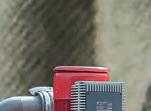




Up to 40 % dry substance content, automatic plug formation without auxiliary means, no extra shaft sealing required, top cost-benefit ratio: The new XSplit ® separator from Vogelsang provides all this and much more. Get it and be one of the first to separate in Vogelsang quality. Work like a charm! Get in touch now for more information: sales.uk@vogelsang.info | 01270 216 600 | Vogelsang.info/int/xsplit
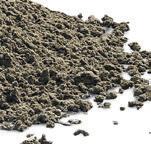









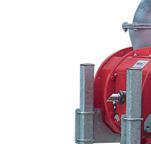
VOGELSANG – LEADING IN TECHNOLOGY
























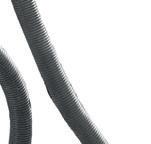
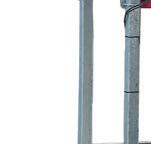










vogelsang.info

The milk price and market conditions, carbon footprint and the dairy cow of the future were all hot topics at this year’s Dairy-Tech event. Katie Jones, Ellie Layton and Jonathan Wheeler report.

The constant change in Government Ministerial ranks is making the job of discussing legislation more dicult than it needs to be, NFU deputy president Tom Bradshaw said in a keynote speech.
As if to emphasise that very point, Mr Bradshaw was actually not meant to be giving the talk, but stepped in a er Farming Minister Mark Spencer pulled out at the 11th hour due to other duties.
Mr Bradshaw said he had already dealt with three di erent Ministers when discussing the Clean Air Strategy and his o ce had received a le er on January 31 replying to a le er sent in June 2022.
On the prospects of a change of Government, he added that the NFU was talking to the Labour party.
He said: “Relationships are easier to build in opposition and we are pu ing a lot of time and e ort into that.”
He predicted that an incoming Labour regime could be expected to follow a more interventionist route in relation to food security and would be willing to intervene in the market.
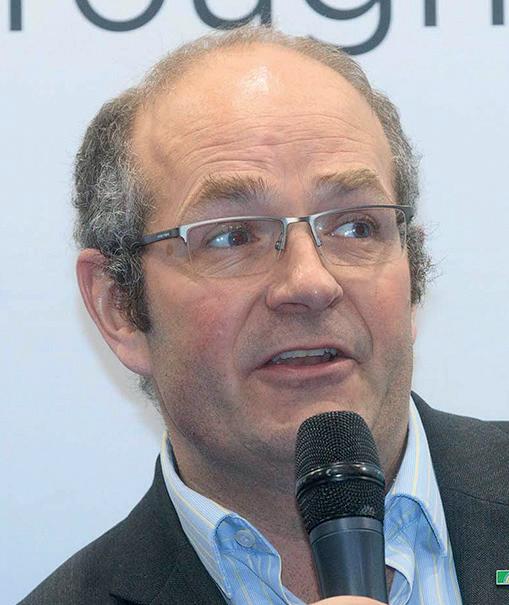
Earlier, he pointed out that the market had reacted as it should in
Uncertainty at a critical time
response to the war in Ukraine, with price rises encouraging production.
He said: “Global food production has not faced challenges like those of today for generations. Unless the right signals come from the market, we cannot generate production.”
Government policy, which had previously seemed totally focused
on the environment, now embraced food production and economic growth, said Mr Bradshaw.
He said he feared trade deals done since Brexit risked wasting the opportunities on o er by giving away our bargaining power and starting a ‘race to the bo om’.
He said: “We want to be
Medium- and long-term optimism
JThe NFU’s chief dairy adviser James Osman said he was ‘very optimistic’ about the mediumand long-term future in relation to the milk market, with demand inevitably outstripping supply again soon and the UK’s producers in a good place to then produce the milk which was needed.
He said: “What we do know is that the situation can change very quickly. If you look back six months, we were in a supply deficit, but things have turned around quite quickly. The future

will depend on a number of circumstances, including, for example, the weather. If good weather means we have a glut of milk, this is likely to put pressure on prices again.
Exit
“But equally, we might see farmers decide to leave the industry and, in six months’ time, processors might be looking for milk again.”
However, he said that in the short-term, potential milk prices
in the coming months would be a worry for farmers.
“We can live with these milk prices for now, but it is what is coming in the next couple of months which is a bit scarier. We do not yet know what impact all of this will have on things such as fertiliser buying. It might be that farmers decide to buy less, but that could lead to problems for next year with reduced silage stocks.
“Hopefully there is some fat there which will help us through these lean times.”
trading on a fair basis and our climate gives us the opportunity to do that. People looking for traceability and provenance are really looking to the UK.”
However, he said ge ing the right sta ng was essential to export e orts.
“It is not the trade deal which does trade; it is people who do trade. Our people are looking to open up more markets in high-value sectors, but also for things such as milk powder.”
58 MARCH 2023 DAIRY-TECH REPORT
Tom Bradshaw
Crowds gathering at this year’s Dairy-Tech.

TRANSFORM HOW YOU FEED YOUR HERD With Feedlync’s weigh system & feeding app you can: > Quickly & easily analyse your feed accuracy > Instantly save money by reducing feed waste > Access your data instantly from your mobile anywhere, anytime > Integrate with your processor, herd management, nutritionist and more! Speak to our friendly team today to find out more! Call +44 20 3966 90 63 or visit www.feedlync.com
Seminar ruminates on the cows of the future
Dairy cows of the future will be smaller and rounder than current animals, and will be highly e cient at producing milk solids while having lower emissions said American geneticist Dr John Cole, of Peak Genetics.
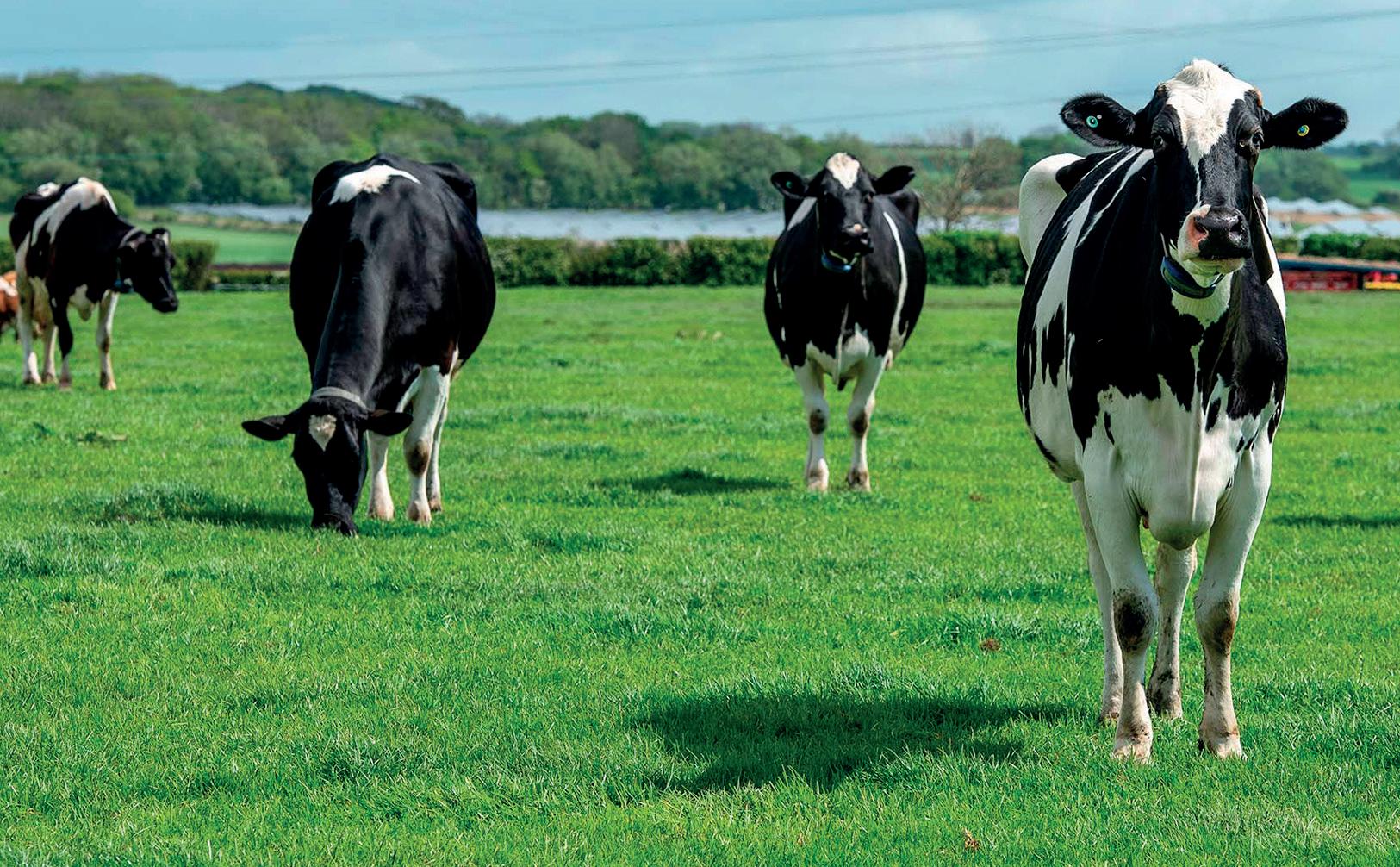
Speaking at a Dairy-Tech seminar looking at sustainable dairying, he added that these cows of the future would also be longer lived and able to produce more milk solids than the current generations.
He said: “We are targeting 8-9% combined fat and protein and, with good genetics, we can get there”.
White

But the cow of the future will also need to be heat tolerant with a desirable carcase, because so much of the world’s meat comes from the dairy herd.
He said his preference was for black and white ca le to be more white than black because it be er protected them against the e ects of heat.
In the future he said he expected Holstein’s with the ‘slick’ gene to be favoured.
He explained this slick gene
was a genetic mutation that gives ca le a thinner coat and more sweat glands.
He stressed the correlation between e ciency and environmental emissions, and the dilemma many farmers face.
He said: “Dairy farmers wonder whether they should keep the mature cow that is healthy, fertile and producing milk or replace her with a heifer with higher genetic potential”.
But if genetics were not a limiting factor within the herd, Dr Cole suggested farmers
might hold onto those older animals and achieve more by looking at other management issues such as feeding practices.
While dairying has been widely criticised for its environmental pro le, Dr Cole quoted a Defra study from 2021 which highlighted the progress the industry had already made in reducing its impact.
“ at says there has been a 24% decline in greenhouse gas associated with milk production.”
It also highlighted other
Getting the gen out on nutrition and the environment to Generation Z
JMaking sure Gen Z has the right facts about the nutrition and environmental status of dairy products is essential to the industry’s future.
In a debate on the industry’s reputation and the best ways to deal with the public, Lyndon Edwards, dairy chair at AHDB,
said the industry needed to tackle disinformation.
But, he added, there was also a need to ensure everyone worked to high standards.
“We have to do a good job. We cannot have bad producers in the industry and we are only as good as our weakest link.”
Robert Craig, vice-chair of RABDF, pointed out that 97% of ‘gen Z’ (defined as those born from the late 1990s to around 2010) were on social media and they now accounted for 15% of the population.
“We have to use influencers more to get our message
facts — including that 43% of dairy farms are using renewable energy; 78% have improved water use e ciency and 73% have implemented a nutrient management plan.
Decisions
But Dr Cole said the industry needed to continue taking a lead on these issues.
“If we do not engage in that debate, then other people might make those decisions for us and we might not like those decisions.”
across. They are our consumers of tomorrow.”
Judith Bryans, Dairy UK chief executive, added that there was currently a lot of misunderstanding about the sector’s environmental record, and the organisation was designing more promotions to address Gen Z.
60 DAIRY-TECH REPORT MARCH 2023
The
environment is set to be a factor in cows’ development in years to come.
Ayrshire dairy farmers lift Gold Cup
J e Logan family from Ayrshire was announced as winner of the 2022 NMR BDF Gold Cup. Now in its h generation, this family partnership consists of brothers Alex, Tom and Hugh, alongside Tom’s sons Alistair and Stuart.
e 280 pedigree Holstein cows in the Logan’s Holehouse herd are mainly red and white and averaged 10,500kg for the qualifying year to September 2021, with milk sold to Muller. Four further awards were made as part of the Gold Cup presentations at Dairy-Tech.
e Chris May Memorial Award, for the Gold Cup qualifying herd with the highest lifetime daily yield, was awarded to the Torrance family from Stapleford Abbo s, near Rom-
ford, Essex. eir Curtismill pedigree Holstein herd, comprising 670 cows and 430 followers, achieved an average lifetime daily yield of 22.30kg of milk per cow per day.
e NMR Silver Salver, awarded to the qualifying Holstein herd with the highest
combined fat and protein production, was presented to Messrs Harvey, Drum Farm, Beeswing, Dumfries. Brothers John and Stuart and their mother Margaret, manage the herd of 300 pedigree Holstein cows.


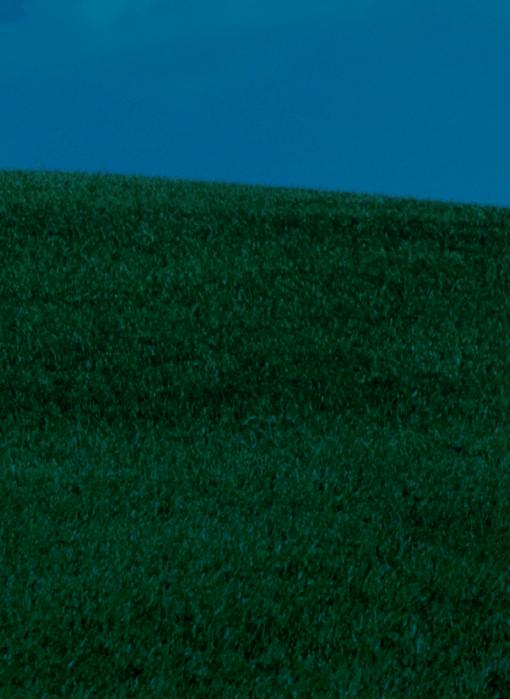
eir Killywhan herd achieved a combined fat and protein yield




of 1,017kg per cow and 14,267kg of milk on three-times-a-day milking.









































































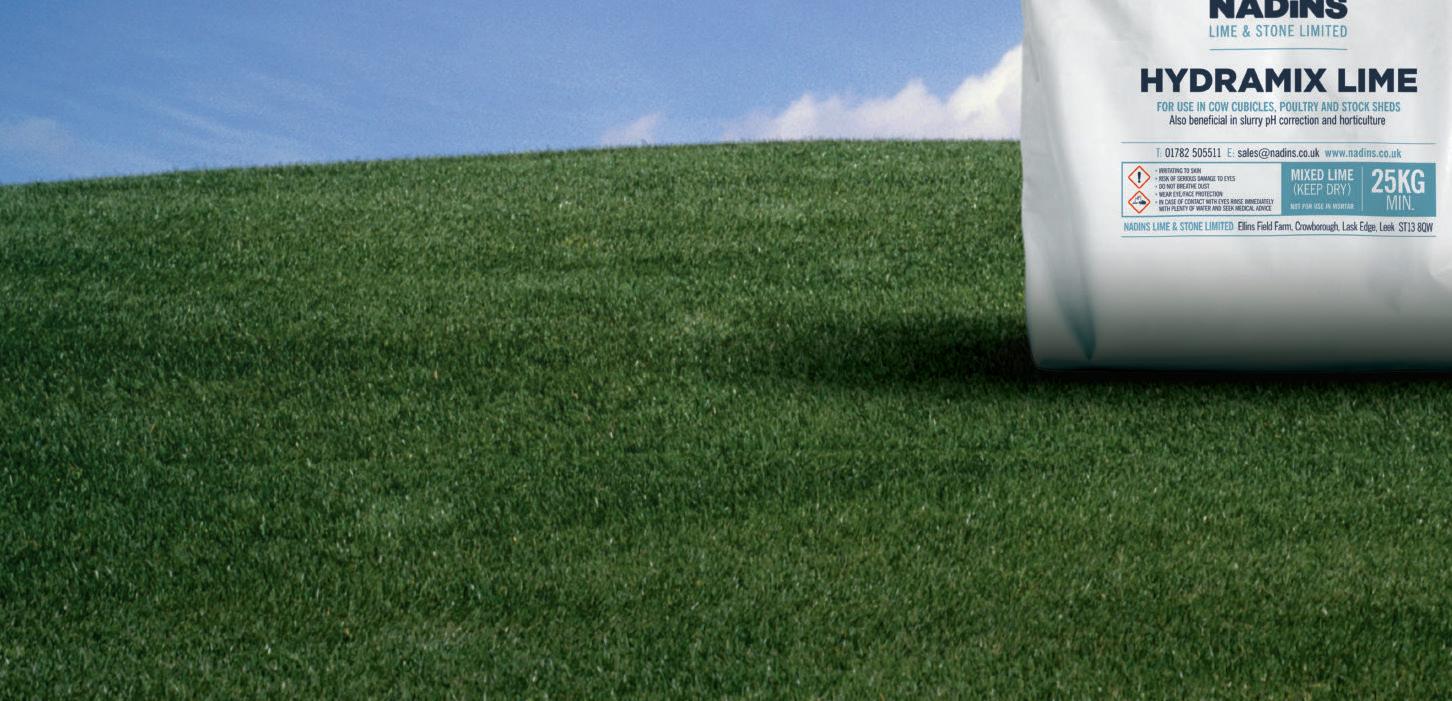
Robert, Lorraine and Mark Hunter from West Tarbrax Farm, Lanarkshire, are the 2022 winners of the Lilyhill Cup, awarded to the Gold Cup qualifying Jersey herd with the highest combined fat and protein.
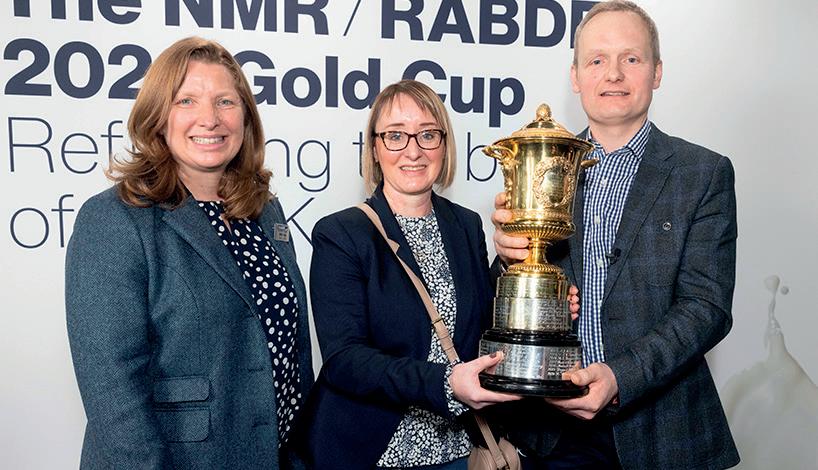
Combined


















































eir herd of 160 milking cows achieved a combined weight of 878.42kg/ cow.

e Chairman’s Cup, for the herd, except Holstein and Jersey breeds, with the highest combined weight of fat and protein, was won by Richard Bell from Wigton, Cumbria. Mr Bell’s Nerewater pedigree Friesian herd of 70 milking cows had a winning combined fat and protein of 738kg.

61 REPORT DAIRY-TECH MARCH 2023
RABDF chair Di Wastenage (left) presents the Gold Cup 2023 to winners Anne and Alistair Logan.
PICTURES : Tim Scrivener
Whose cash is it anyway?
Be careful about ‘splashing the cash’ because it might not be yours was the warning from farm business consultants Anderson, speaking at Dairy-Tech.

The company’s Tony Evans also suggested that farmers thinking about investment might want to consider waiting.
After two profitable years, Andersons says dairy farmers may have big tax bills looming and spending that cash now could be storing up problems for the future.
In its fictional Friesian Farm model it suggested margin over production costs for 2023/24 would return to 1.2p litre, just above the level for 2020/21 (1.1ppl).
Buffer
But in the interim, the buffer of Basic Payment had fallen to 1.2ppl from 1.9ppl.
By contrast, in 2021/22 it achieved a 4.1ppl margin with 1.8ppl in Basic Payment, while its budgeted figure for 2022/23 is 4.0ppl margin, boosted by a basic payment of 1.6ppl.
Some farmers might be
forced to invest because silage clamps and slurry stores needed improvement for them to continue to operate.

But for the majority, Mr Evans suggested a better course might be to pay off debt. Where investment is on the cards, he suggested delaying it.
Serve early to ace profits
JServing cows earlier in lactation can produce extra profits in later lactations, Dr Matt Utt from Zoetis, said in a Dairy-Tech seminar considering dairy profitability.
“Figures for first lactations suggest that serving the cow earlier cut both lactation length and production, which resulted in a small reduction in profits.
Reversed
“But on second and third lactations, the effect reversed and profits that were higher by
£53, in the second lactation, and £40, in the third lactation, were achieved.”
In the first lactation cows served at 109 days had lactations that lasted 341 days and produced total income over feed cost of £2,789.
By contrast, those served at 91 days had 313 day lactations and achieved an income over feed costs of £2,756 – a reduction of £33.
But in second lactation, serving cows at 85 days in milk produced 317 day lactations
“If you are thinking of buying something save the cash for now, because it is a suppliers’ market.
“Everyone is charging a lot more and the price of steel is high. If the market tightens things could soon cost less.”
Achievable aims
Edward Lott, of Kite Consulting, advised farmers to focus on shorter term, more achievable aims.

“Firstly, aim for high quality forage to off-set the high cost of other feeds,” he said.
“Secondly, have a budget for the expensive inputs and buy against that plan.”
The other aspects were maximising milk price and having a positive mindset.
“We need to build mental resilience and consider how we remain positive. That could feed into strategic thinking and investment.
“Think about whether you are in this for the long-term or not, and if the answer is no then it is time to start thinking about getting out and handing the business over to somebody else.”
and income of £3,430 – a £53 increase over 113 days (345 day lactation £3,376).
And in third lactation serving after 96 days produced a
328-day lactation and £3,278 income, against 114 days, 346-day lactation and £3,238 –a £40 advantage for the earlier date.
62 DAIRY-TECH REPORT MARCH 2023
Dr Matt Utt
Some farmers looking to invest in updating slurry and silage storage might be best delaying and paying off debts instead.
Edward Lott
SATURDAY 11th MARCH
FRIDAY 10th MARCH
12.30pm - Showmanship Championship
2.30pm - Heifer Show
SATURDAY 11th MARCH
9.00am - Milking classes - Coloured Breeds
12.30pm - Milking classes - Holsteins


4.15pm - Supreme Championship
7.00pm - All Britain Awards Presentation evening Watch

live online
Dairy Cattle Show | Trade Show | Networking | Showmanship | Education borderwaydairyexpo.uk BORDERWAY MART, CARLISLE, CUMBRIA CA1 2RS
dedicated commentators
with
New test to tackle Johne’s

Anew diagnostic test for Johne’s is in development and could be available for use in as li le as 18 months.
e test is being developed by MI:RNA in collaboration with Scotland’s Rural College Research. MI:RNA is a veterinary diagnostics company specialising in the development of testing technology for veterinary disease.
Speaking at Dairy-Tech, Eve Hanks, the company’s founder
and chief executive, explained there was interest in this new test because the currently available ELISA and PCR-based diagnostic tests had limited sensitivity and speci city during early infection in ca le.
She said, this meant there was an urgent demand for alternative diagnostic tests.
“It is very apparent that current diagnostic testing is not going to help us solve the Johne’s problem as the tests pick up the disease too late and
Transforming the dairy supply chain

JThe Digital Dairy Chain was showcased for the first time at Dairy-Tech, with the programme director Stuart Graham, explaining that the aim of it was to transform south-west Scotland and Cumbria into a magnet for business, innovation and talent.
The programme is focused on providing the industry with the opportunity for research,
innovation and a business and skills platform.
Mr Graham said it was hoped the £21 million programme would eventually be replicated around the country.
He said: “We are using the funding from the UK Government’s strength in places fund to help foster innovation and growth for the whole dairy
deliver too many false positives.
“ is means there is no real possibility of eradication when the disease is so endemic within the national herd.”
e MI:RNA diagnostic test uses biomarkers and AI learning to identify the disease at a much earlier stage.
Dr Hanks said: “ is will mean vets and farmers can step away from the point of when the animal shows signs of clinical disease and instead test younger stock before they show clinical signs.”
is means vets and farmers would be able to diagnose Johne’s before it could be further spread throughout the herd.
Dr Hanks added this test could be important to provide a solution to Johne’s which has a whole host of ethical, environmental and economic impacts.
She said: “For example, by eradicating Johne’s disease we would see a CO2 emissions reduction equivalent to taking 160,000 passenger vehicles o the road each year in Scotland alone.”
supply chain right from the farmgate to factory level.”





The programme has several areas of focus and Mr Graham highlighted the ‘maker spaces’, which will give producers of dairy products and dairy-based food and drink the chance to develop new products or move from smallscale ‘kitchen creations’ into commercially viable production.

JThe smaXtec health monitoring system, TruDrinking, was announced as winner of the Royal Dairy Innovation Awards. TruDrinking measures water consumption of cows and can immediately detect irregularities in water provision or cow health. The bolus also records inner body temperature, rumination and activity.
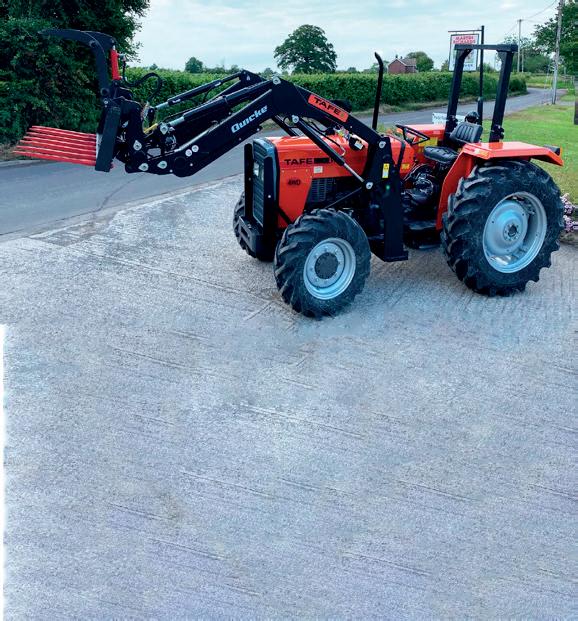
64 DAIRY-TECH REPORT MARCH 2023 Call us on 01258 817372 email: info@tractorsuk.co.uk TRACTORS UK SOLE UK IMPORTER OF TAFE TRACTORS FROM THE BEST PEDIGREE BASIC, SIMPLE & RELIABLE TRIED & TESTED FOR GENERATIONS 08R04B � Drum or oil immersed brakes � Roll bar or cab � 2wd or 4wd � 2 Years’ warranty ✆ 01258 817372 ✉ info@tractorsuk.co.uk BASIC, SIMPLE & RELIABLE www.tractorsuk.co.uk • 2 Years’ warranty Comprehensive parts backup • • Oil immersed brakes 2WD or 4WD
The new Johne’s diagnostic test will allow vets and farmers to test younger stock before they show clinical signs.
Dairy innovation
Reducing carbon footprint in practice

JA Cumbrian dairy farm has managed to reduce its carbon footprint by just over 30%, using a combination of robotics and improved soil health and grassland utilisation.



Speaking during a seminar, Evie Rogers of Carbon Metrics, explained the farm’s journey
Top Harper students
JHarper Adams University exerted a stranglehold on the RABDF Student of the Year Award, with Rebecca Smith, Cumbria, winning the title ahead of fellow Harper student Jack Howard, Somerset.
Their success means that the university has now secured the award three years in a row.
Ms Smith, whose parents
Andrew and Margaret run a 500-cow herd near Carlisle, is in her final year at university and won a cash prize, as well as a six-month placement at Mole Valley Farmers, the event’s sponsor.
Mr Howard is also in his final year and has just secured a dairy manager’s job on a 450-cow herd at Higher Vexford, Somerset.
began in 2020 when they carried out an initial carbon audit.
Miss Rogers said: “This helped them weigh up their options and meant they knew by how much they needed to reduce their footprint.”
Audit


This first audit, calculated using AgreCalc, showed the farm was producing 1.43kg/CO2 per litre of milk produced. The UK average for an all-year-round calving high production system is 1.17kg/CO2 per litre.
And, and as the farm did not wish to increase cow numbers, Miss Rogers said any changes made would be around the efficiency of their existing herd.
The first change was to the milking system, moving from a rotary to three Lely robots, which meant milking

frequency and yield increased.
Annual cow yield increased from 9,500 to 11,500 litres, with butterfat and protein levels at 4.2% and 3.3% respectively.

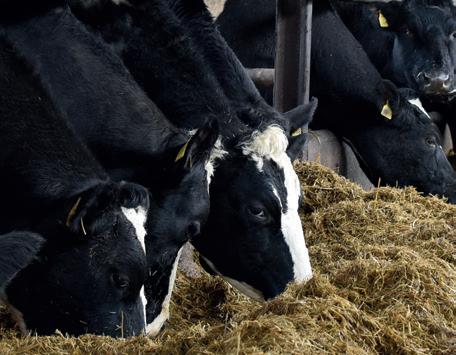

The other main area of change was around forage utilisation. Miss Rogers said: “They focused on improving soil health and have been able to increase milk from forage figures.


“And to increase intakes, a Lely automatic feed pusher was purchased which ensures forage is always available to the cows.”
This year, the carbon audit showed there has been a 31% reduction on the 2020 figure with the carbon footprint now standing at 0.99kg/CO2 per litre of milk produced. Miss Rogers said when soil sequestration was taken into account this figure dropped further to 0.79kg/CO2
REPORT DAIRY-TECH Film
Wrapping Advanced balewrapping solutions a brand of www.silotite.com search for Silotite Film&Film (F&F) wrapping is an innovative dual wrapping method, which combines the use of Silotite balewrap and Baletite netwrap replacement film. liF m &Film wrapping Silotite.com UK: +44 1568 617220 Email: bpiagriculture@berryglobal.com Improved silage quality Increased ease of working Optimised recycling Denser bales Denser bales Improved silage quality Increased ease of working Fully recyclable
& Film
Recently unveiled in the USA, New Holland hopes their T4 Electric Power prototype will deliver the future of zero emission machinery. James Huyton reports.
New Holland prototype on the road to electric
ith an industry drive towards net zero and a demand for improved e ciencies, several manufacturers are investing in the development of low emission and autonomous vehicles.
New Holland has entered into this market, revealing its T4 Electric Power at the company’s New Tech day in Phoenix, Arizona, USA. Currently shown as a prototype, the manufacturer says it has plans to put units
Winto production in late 2023.
Chief digital and information o cer at CNH Industrial, Marc Kermisch, says: “ e T4 Electric Power is the ideal solution for lower horsepower operations. It is suited to agricultural, municipality, orchard and speciality applications.
“We know our customers are eager to adopt this type of product, so it makes perfect sense for us to continue our [agricultural] electrication journey with this platform.”
Fi ed within the T4 Electric Power, the 120hp e-source power pack allows the unit to operate as

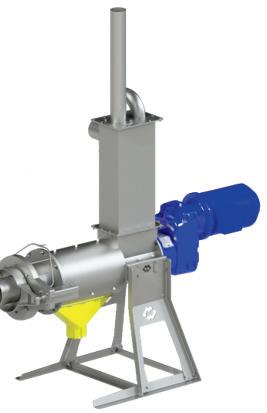

an external generator, capable of delivering power for tasks such as farm welding and the possibility of electrically driven implements.
Zero emissions
When linked to a renewable power source, the tractor can theoretically operate with zero emissions. It o ers a claimed charge time of about one hour on a commercially available fast charge system, typically operating from a three phase supply.
In line with current T4 diesel models, it will be suppled as a fourwheel drive variant only, with a maximum forward speed of 40kph.
New Holland claims the concept reduces operating costs by about 90%, with the elimination of diesel fuel costs and maintenance fees.

Vehicle noise and vibration are also claimed to reduce by 90% in comparison to its diesel equivalent.
CNH Industrial have new styling across its sustainable tractors and the range has been designed to
generate a new look for the brand, with a new clean blue colour scheme.




Other design features include the illumination of the New Holland bonnet badge and black wheel rims.
Fi ed to the cab roof detailing around the work lights, a series of sensors and camera units are supplied, claiming capabilities of o ering 360-degree visual depth perception, allowing autonomous detection of obstacles.

Autonomy is one of the more interesting features. Working together with telematics and auto guidance, the T4 Electric Power should be able to deliver in- eld tasks through a shadowing mode, giving the operator the ability to s ynchronise machines to work together.
Management system
CNH Industrial claims its eet management system will be capable of implementing recognition, which will let the farm manager assign tasks to the unit, given
66 MACHINERY MARCH 2023 OWEN.BOND@SAVECO-WATER.CO.UK WWW.SAVECO-WATER.CO.UK Separators Green Bedding Screw Conveyors Long Shaft Pumps Submersible Pumps Submersible Agitators EXPERTS IN SLURRY HANDLING 07851 25 26 27 01684 29 91 04 Call today to be put in contact with your local dealer
Cab roof features built-in camera system and sensors capable of 360-degree vision.
T4 Electric Power is the ideal solution for lower horsepower operations


MARC KERMISCH

the tractor links to the required a achment.
Performance monitoring will be connected to 5G networks, providing remote access to the machine via a tablet.
Future autonomy developments hold the possibility of reducing the pressure on labour shortages, delivering precision work output, reducing inputs and time.
But this will all require a change in legislation, improved digital infrastructure and an industry desire to take up the technology.
67 MACHINERY MARCH 2023
New styling includes a new clean blue colour scheme and illuminated brand emblem.
MILKprices


Milk prices set for white knuckle ride
















J e negativity which has been building in dairy markets since late last summer will now start to manifest into a white knuckle ride for many producer milk prices this spring.
With several milk buyers already implementing their rst price cuts earlier this year, the real declines will start in earnest this March.
Following its 3ppl cut from February, Parkham Farms announced a further cut of 7ppl from March.























is 10ppl record level reduction in just two months highlights the seriousness of the weakness in current wholesale prices throughout the cheese sector.











While other cheese manufacturers have yet to conjure up the nerve to follow with such deep cuts, unless there is a miracle this spring it is inevitable a large number will have to take similar action as the North Devon cheesemaker for April and beyond until both demand and market prices recover.






e company claims it paid suppliers a solid milk price last year, but it is adamant that if supply does not adjust quickly to current negative market fundamentals the negativity will play out over a much longer period, becoming even more painful for milk prices in the process.





e 3ppl reduction from February takes our Parkham price down to 47.9ppl for our manufacturing standard litre*, with the 7ppl cut for March further down to 40.9ppl.


e Fresh Milk Company (Lactalis) has agreed with the Milk Supply Agency (MSA) to decrease its March milk price by 5ppl (based on the company’s headline price for 4% bu erfat and 3.3% protein).


e company reports that with milk production in GB and across much of Europe still increasing at a time when demand for dairy products continues to decline, the supply imbalance has seen signi cant stocks of cheese and other dairy products placed on the market by other processors.

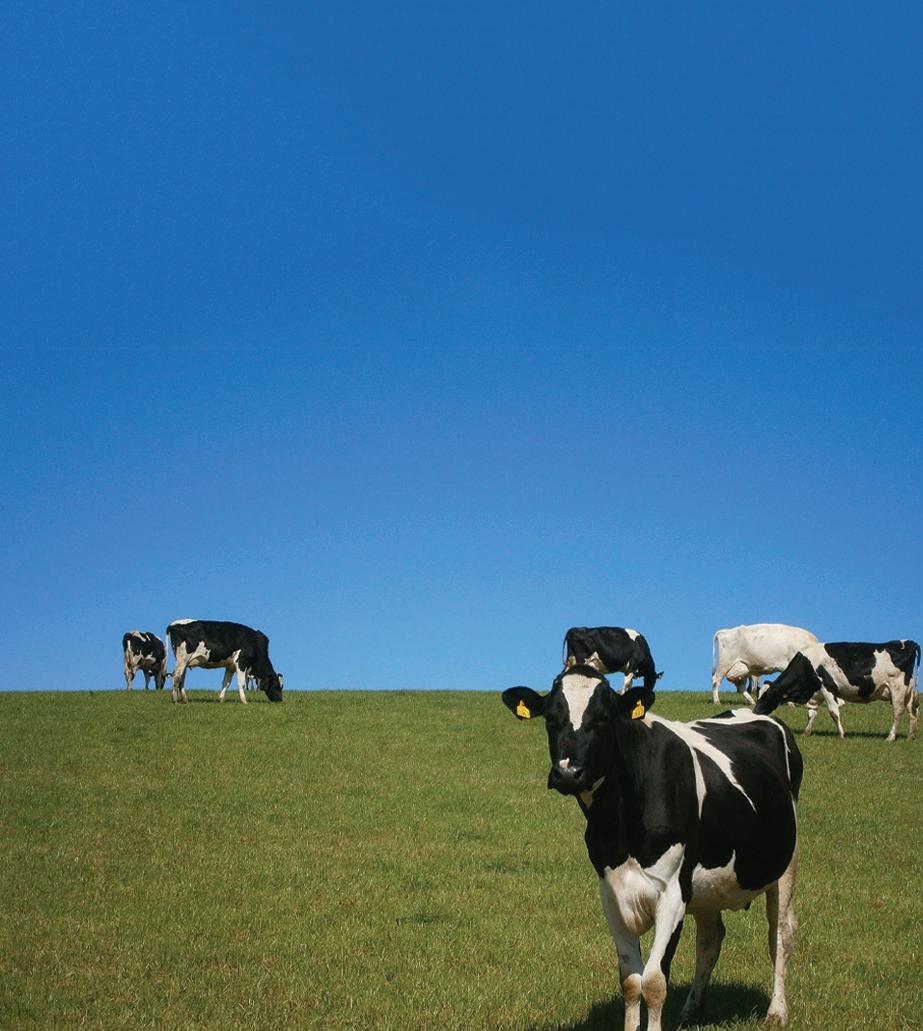











Deterioration










































Unfortunately, this had led to market price deterioration much quicker than expected. e company also points out that the MSA has made it very clear the impact this will have on the milk pool, given that input costs on-farm currently remain at a high level.




e decrease follows the 1.4ppl drop from February and, in line with the company’s headline price, takes our liquid standard* down 5ppl to 41.81ppl, while our manufacturing standard decreases by 5.18ppl to 43.49ppl.







Issues for es f Terms and conditions apply O�er available to new subscribers only Receive the magazine weekly direct to your door via Royal Mail Website access 24/7 plus read on the go with our FG app FREE Arable Farming and Dairy Farmer digital magazines FG Rewards PLUS more! Why subscribe? Scheme SUBSCRIBE AND SAVE SUBSCRIBE AND SAVE BUYING LIVESTOCK? SPREAD COSTS & PAY MONTHLY 01827 300 333 www.financeforfarms.co.uk Finance for business use customers only; subject to application, credit, terms and conditions. Finance for Farms is a trading name of Shire Leasing PLC who is authorised and regulated by the Financial Conduct Authority for certain types of consumer credit lending and credit related activities that are regulated under the Consumer Credit Act 1974 and by the Financial Services and Markets Act 2000. 68 MARCH 2023
Milk price analyst
Stephen Bradley on the latest milk industry developments.
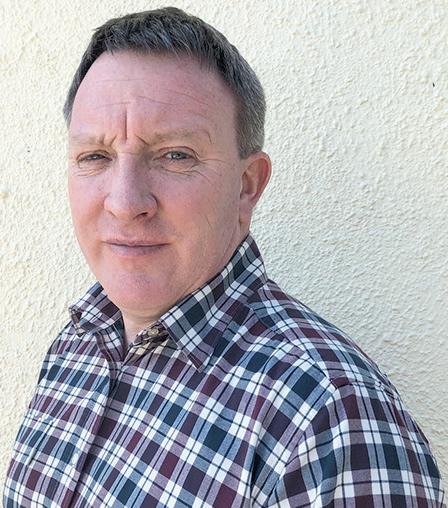


More March price cuts for cheese
JFollowing price cuts for January and February totalling 3ppl, South Caernarfon has reduced its price by a further 3ppl for March, taking our manufacturing price down to 44ppl.
Glanbia Cheese moves its price down to 43.25ppl, following its cut of 4ppl, making 6ppl for the year to date.


First drop
First Milk has taken 4ppl as its first price cut of the year, taking our price down to 45.69ppl, while Belton drops a
further 3ppl to 44.05ppl, making 4.5ppl for the year to date.
Barbers Cheesemakers’ first time cut is 3.8ppl to 46.11ppl, while Saputo Dairy UK, also for the first time this year, reduces its Davidstow price by 3ppl to 46.50ppl.
At the same time, the company has reduced each individual suppliers’ core volume for March by 9.3%, which increases the likelihood of engaging the company’s reserve balancing milk price, which is linked to substantially lower returns for butter powder.

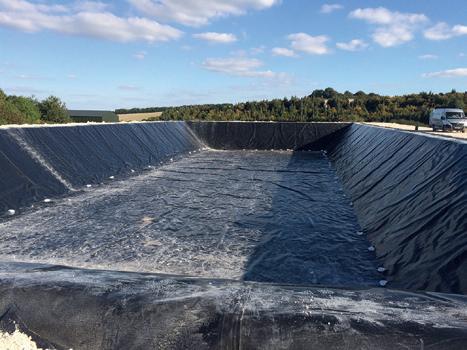

Muller cuts 3ppl for March
JMuller has cut its Muller Direct milk price for March, for both conventional and organic, by a further 3ppl and 2ppl, taking our liquid standard down to 44ppl and 53ppl, respectively. These are both including the 1ppl Muller Advantage premium paid quarterly in arrears. At the same time, Muller Direct suppliers with volume on the Lidl three-year fixed price deal are to receive the same 3ppl reduction to 44ppl.
Having flexed the fixed price in an upward direction four times last year, this is the second time the retailer price has moved down in line with the Muller Direct price for 2023.
Liquid standard
The March price level of 44ppl for our liquid standard compares with the original launch offer fixed price of 29ppl back in July 2021.
*Our liquid standard litre is 4% butterfat and 3.3% protein, for our manufacturing 4.2% butterfat and 3.4% protein and, in both cases, Bactoscans of 30,000/ml and SCCs of 200,000/ml, with Thermodurics of 500/ml, 1m litres/year on EODC (max vehicle accessibility) based on level supply and therefore before seasonality (but includes the winter premiums paid in Northern Ireland), as well as monthly profile adjustments, balancing charges, capital deductions or annual/part annual growth incentive schemes or supplements not directly linked to dairy market price movement.

Call Andy Berry about “Crypt-Occur” 07969 164 066 www.berrysagriculture.co.uk Maintaining Calf Health YOUR DEPENDABLE PARTNER FOR SLURRY STORAGE SOLUTIONS enquiries@enviroseal.co.uk t: 01695 228626 www.enviroseal.co.uk SLURRY LAGOON FLOATING COVERS Keeps rainwater out of slurry Reduces odour from lagoons Covers comply with EA and SSAFO legislation SLURRY LAGOON LINERS Comprehensive 25 year warranty Materials meet EA and SEPA requirements Installed and tested by certified technicians Enviroseal provide a complete range of products for slurry storage 69 MARCH 2023
MILK PRICES
Notes to table
Prices for both Liquid & Manufacturing tables paid for a producer sending 1mltrs/yr on EODC (max vehicle size accessibility) with Bactoscans of 30,000/ml and SCC’s of 200,000/ml with Thermodurics of 500/ml. Excludes capital retentions or AHDB levies, profile adjustments from level supply, seasonality, balancing and A&B price schemes (includes the winter premiums paid in NI). Excludes annual / part annual growth incentive schemes or supplements not directly linked to dairy market price movement. Liquid price for milk contains 4% b/f and 3.3% protein. Manufacturing price for milk containing 4.2%/b/f and 3.4% prot. All prices for non-aligned prices are before monthly retail supplements. (i) Oct’22 prices before seasonality or B pricing (ii) Nov’22 prices before seasonality or B pricing (iii) Table ranked on simple rolling 12mth average of monthly prices Dec’21 to Oct’22). (i) v (ii) The difference Nov’22 compared with Oct’22. UK Arla Farmers 0.54ppl increase from Oct’22 includes the forecast 13th payment +1.24ppkg (+1.278ppl) based on our liquid std litre. UK Arla Farmers 0.56ppl increase for Oct’22 includes forecast 13th payment +1.29ppkg (+1.329ppl) based on our manufacturing std litre. UK Arla Farmers 1.28ppl increase from Nov’22 includes the forecast 13th payment +1.24ppkg (+1.278ppl) based on our liquid std litre. UK Arla Farmers 1.33ppl increase for Nov’22 includes the forecast 13th payment +1.29ppkg (+1.329ppl) based on our manufacturing std litre First Milk price includes 0.5ppl Member Premium accrued as a 13th payment paid Apr’23. First Milk Haverfordwest Tesco Cheese Group includes 2ppl retailer premium averaged as 1.5ppl based on seasonal profile. Fresh Milk Company price before Morrisons monthly cheese supplement (last payment made in Dec’22 of 0.072ppl for Jul’22 to Dec’22 period). MMG Direct price includes 1ppl Premium paid annually in arrears to Direct/ Organic farms meeting specific Müller Direct criteria (Quartely payments from Apr’22).Crediton Dairy price includes FarmMetrics Scheme Bonus of 0.5ppl paid monthly. South Caernarfon price includes flat 0.7ppl annual member bonus. ‡ Price includes 12mth average rolling profile fixed at 0.57ppl. * UK Milk Futures Equivalent (UKMFE) net to producer includes 5% processor margin and allowing 2ppl ex-farm haulage + milk testing. ** Ave delivered spot milk net to producer allows 3ppl covering haulage + milk testing and margin. (iv) Latest confirmed milk price at the time of going to press. N/C in this context means no change made aware since Nov’22. UK Arla Farmers 1.28ppl price hold for Dec’22 includes the forecast 13th payment +1.24ppkg (+1.278ppl) based on our liquid std litre. UK Arla Farmers hold for Dec’22 includes the forecast 13th payment +1.29ppkg (+1.329ppl) based on our manufacturing std litre. UK Arla Farmers 1.13ppl decrease from Jan’23 includes the forecast 13th payment reducing from +1.24ppkg (+1.278ppl) to 1.23ppkg (1.267ppl) based on our liquid std litre.
70 MARCH 2023
UK Arla Farmers 1.12ppl decrease for Jan’23 includes the forecast 13th payment reducing from +1.29ppkg (+1.329ppl) to 1.28ppkg (1.318ppl) based on our manufacturing std litre. MMG Direct Premium for Direct/Organic farms meeting specific Müller Direct criteria confirmed as 1ppl for 2022 and paid quarterly, Apr’22, Jul’22, Oct’22 & Jan’23. All prices (excluding First Milk Haverfordwest Tesco at 1.50ppl) are before monthly retail supplements. Milkprices.com cannot take any responsibility for losses arising. Copyright: Milkprices.com Oct’22 Nov’22 12mth Diff Latest 4.0/3.3 4.0/3.3 Ave Oct’22 Confirmed Before Before Dec’21 Nov’22 Milk Seas’lty Seas’lty Nov’22 Oct’22 Price LIQUID PRICES (4% b/f & 3.3% prot) (i) (ii) (iii) (i) v (ii) (iv) UK Arla Farmers – Tesco 50.38 51.66 44.33 1.28 47.99 UK Arla Farmers – Morrisons (Grazing) 50.58 51.86 44.32 1.28 48.19 UK Arla Farmers – Morrisons 50.35 51.63 44.09 1.28 47.96 Müller Milk Group – M&S 51.38 51.38 43.77 N/C 52.66 Dale Farm NI 50.02 50.02 43.17 N/C 50.02 UK Arla Farmers 48.96 50.24 42.90 1.28 46.57 Müller Milk Group – Waitrose 50.00 50.00 42.75 N/C 50.00 Dale Farm GB (Kendal) 47.89 48.95 41.00 1.06 48.70 Crediton Dairy 48.00 48.00 40.96 N/C 45.00 Yew Tree Dairy 48.00 48.00 40.71 N/C 44.00 Arla Foods – Tesco 47.75 47.75 40.69 N/C 43.75 Paynes Farms Dairies 48.00 48.00 40.67 N/C 47.00 Freshways 50.00 50.00 40.67 N/C 47.00 Müller Milk Group – The Co-op Dairy Group 47.67 47.67 40.65 N/C 44.15 Meadow Foods Lakes 48.00 48.00 40.56 N/C 45.50 Meadow Foods 48.00 48.00 40.56 N/C 45.50 Müller Milk Group – Tesco 48.00 48.00 40.50 N/C 44.00 Müller Milk Group – Sainsbury’s 47.00 47.00 40.50 N/C 44.44 Müller Milk Group – Müller Direct 48.00 48.00 40.42 N/C 44.00 Arla Foods – Sainsbury’s 46.88 46.88 40.38 N/C 44.32 Blackmore Vale Dairy 48.00 48.00 40.25 N/C 45.50 Müller Milk Group – Müller Direct (Scotland) 47.79 47.79 40.21 N/C 43.79 Grahams Dairies 46.00 46.00 39.46 N/C 44.00 Simple Average 48.55 48.82 41.46 0.27 Simple Average (excl. retail contracts) 48.20 48.38 40.89 0.18 MANUFACTURING PRICES (4.2% b/f & 3.4% prot) UK Arla Farmers 50.91 52.25 44.61 1.34 48.47 Dale Farm NI 50.91 50.91 44.03 N/C 50.91 Parkham Farms Tesco 48.90 50.90 42.85 2.00 40.90 The Fresh Milk Company – Level Profile ‡ 50.27 50.69 42.75 0.42 44.06 Wensleydale Dairy Products 50.52 50.52 42.74 N/C 49.27 First Milk – Haverfordwest Tesco Cheese Group 50.89 51.19 42.50 0.30 47.19 Barber’s Cheesemakers 49.42 50.02 42.20 0.60 46.11 The Fresh Milk Company (Lactalis) 49.70 50.12 42.18 0.42 43.49 Wyke Farms 49.20 50.12 42.16 0.92 50.12 Saputo Dairy UK – Davidstow 49.50 49.50 41.93 N/C 46.50 South Caernarfon 49.00 50.00 41.45 1.00 44.00 Glanbia – Llangefni (Constituent) 49.25 49.25 41.19 N/C 43.25 First Milk 49.39 49.69 41.00 0.30 45.69 Belton Farm 48.55 48.55 40.95 N/C 44.05 Arla Foods – Direct Manufacturing 47.76 48.32 40.79 0.56 48.58 Simple Average 49.68 50.21 42.15 0.53 Simple Average (excl. retail contracts) 49.65 50.10 42.08 0.44
Price Indicators StoneXMilkprices.com UKMFE (gross) 47.81 41.90 49.84 -5.91 *StoneXMilkprices.com UKMFE (net) 42.80 37.18 44.81 -5.62 **Delivered spot milk (net to the producer) 50.37 42.52 -7.85 Latest milk prices from
‘B’

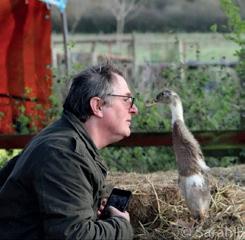
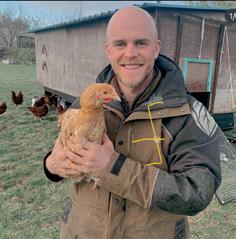

















Campaign highlights Topics covered 3Innovation Community 3Educating children 3Sustainability 3Communicating with the public Thank you to our sponsors or visit: FGinsight.com/farmingcan-ag Follow #FarmingCAN and take part 35,000 YouTube views 1,000 likes and comments 65,000 Instagram accounts reached +636% and 800 followers 16,265 Tik Tok accounts reached and 300 followers 1,500,000 #FarmingCAN views 250,000 Ambassador videos views The last 90 days... Over 25,000 website views Hashtag reach 2,000,000+ social media influencers recruited, with a combined audience access of # Chris Franklin Ellie Browning James Herrick Rhianna Deeble Karl Franklin Luke Abblitt 21 2, 600, 000
Non-aligned price as a percentage of AMPE and MCVE
Prices fall as commodity prices crash
As farmgate milk prices continue to drop for February and March, Defra’s price continues to increase for December – such is the lag in the market for its data. e nal price of the year

was 51.51ppl at 4.38% fat and 3.47% protein. Converted back to a standard litre, it will be about 48.5p.
Since then, prices have started to fall markedly due to the collapse in commodity prices.
February’s price will be about 47p and March’s price 45.5p.
Sentiment might be turning
JAt the time of going to press there were indications that market sentiment might be turning up, with sellers becoming more bullish than they have been in weeks.
Certainly offer prices for butter are increasing slowly, but it is very early days and it hard to see significant increases which will make a material difference to farmgate milk prices.
Butter is currently trading at about €4,200-€4,300/tonne (£3,729-£3,8180/t), but there is talk of prices at €4,550/t (£4,040) for Q2 and as high
as high as €4,700/t (£4,173/t) for Q3 and Q4.

SMP prices continue to languish though and are still about €2,300-€2,400/t (£2,042-£2,131/t), although there are some signs that sellers are becoming more bullish on the back of butter’s rise.
Long way to go
The combination of butter and SMP convert into a milk price below 30p still, so there is a long way to go.
Cheese prices remain very weak and prices have
Further milk price reductions are envisaged on the back of lower AMPE and MCVE prices.
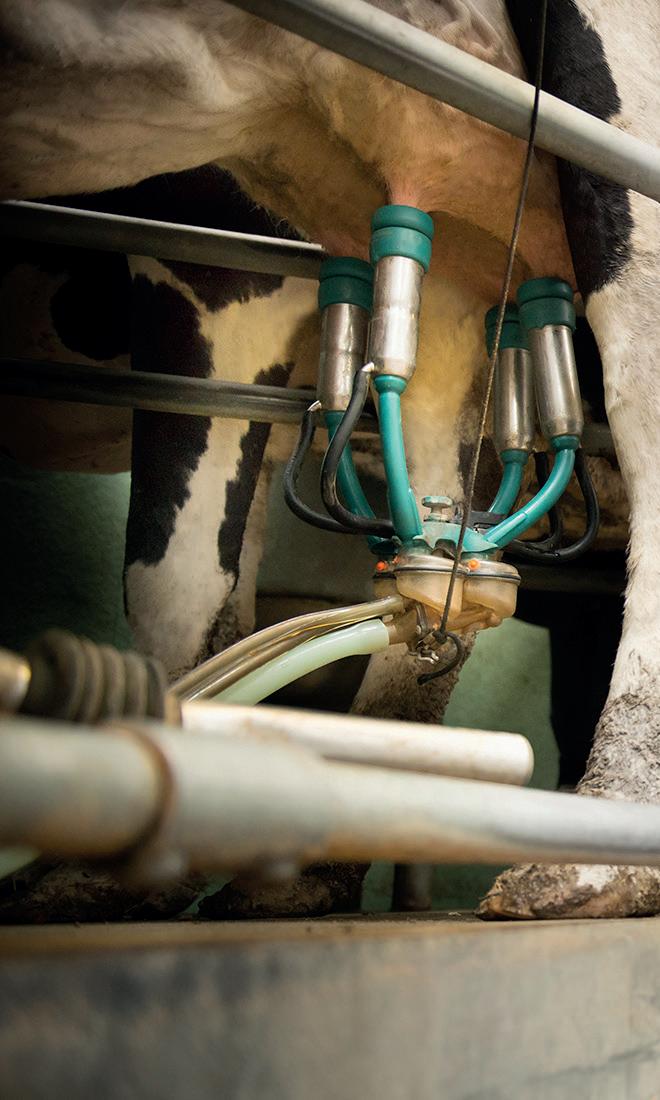

The latest gross AMPE figure for January is 35p, which is down 4.5p on December.
After an allowance for a margin and additional supply chain costs, a reasonable farmgate equivalent would be in the low 30p range.
MCVE is at 44.46p, before costs and a margin, down 3.4p on last month. A er a margin and

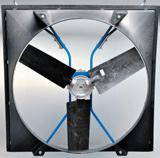
been falling for several weeks. Gouda and mozzarella prices are down 35-40% on 10 weeks ago with curd now at €3,700/t (£3,285/t), which is down another €275/t (£244/t) in the week of going to press.
Gouda is at €2,800/t (£2,486/t) and mozzarella is €2,725/t (£2,419/t).
Both look as if they may be stabilising too.
In the UK, mild Cheddar is all over the place and down as low as £3,600/t, some traders say. This equates to a price of about 35-38p.
72 MILK ANALYSIS MARCH 2023 www.abbi-aerotech.com www.rumitechs.co.uk Ph: 07714 846987 HEATSTRESS? The climate in the barn is the key! NEW! NEW! DC-permanent magnetic motor 40-70% energy savings No frequency control needed No motor protection switch needed No special wiring needed No maintenance Mains: 230/400V 50Hz Simpler installation Less electric wiring No obstacles inside No restlessness when doing maintenance Shorter suspension of the fans Lower total investment Airflow in length of cubicles THE SOLUTION: ABBIFAN 140-XXP-2 The latest motor technology now applied on our fans! Direct drive. CROSS VENTILATION blows fresh outside air in your barn!
Jan 2019 Mar May Jul Sep Nov Jan 2020 Mar May Jul Sep Nov Jan 2021 Mar May Jul Sep Nov Jan 2021 Mar May Jul Sep Nov 150 140 130 120 110 100 90 80 70 60
Defra price as % AMPE (net after costs) Defra price as % MCVE (net after costs)
Further milk price reductions are envisaged on the back of lower AMPE and MCVE prices.
to the lag, having under-performed since mid-2021. is helps to explain the lag in price reductions compared to the fall in AMPE and MCVE values.
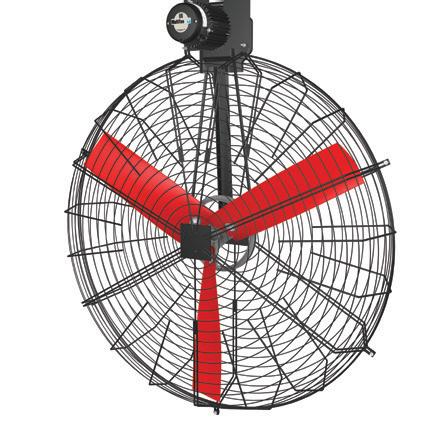
Butter futures price movements last 10 days
Futures rally after weeks of declines
JAfter weeks of relentless declines on the futures markets, during which time the price for EU butter fell from a height of €7,350/tonne (£6,525/t) in September to a low of €4,238/t (£3,763/t) in January, a drop of more than 40%, there has been some slight improvement in the market.
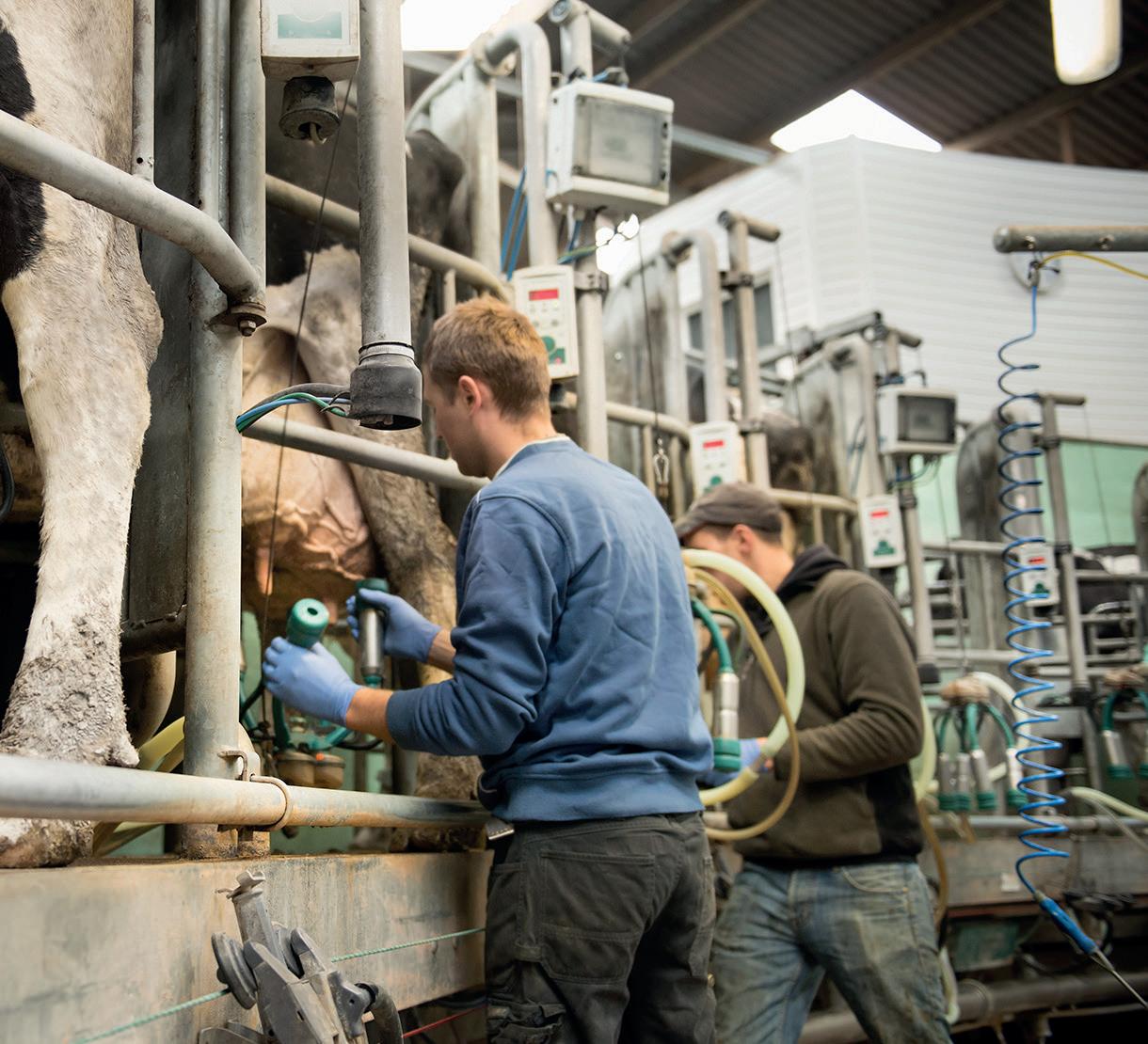

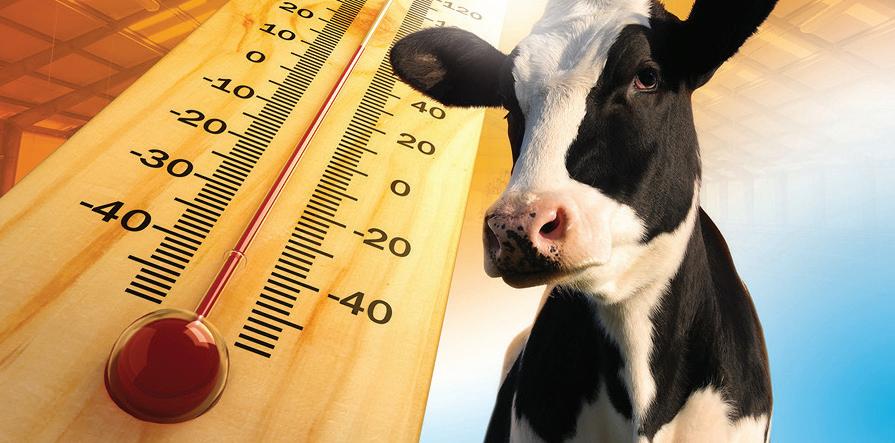
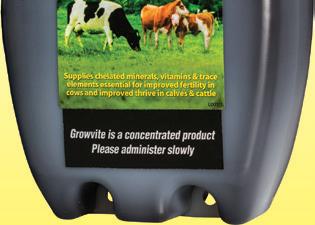
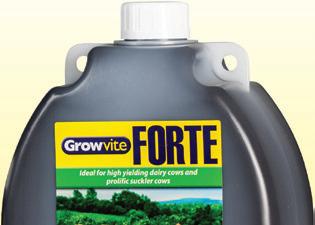
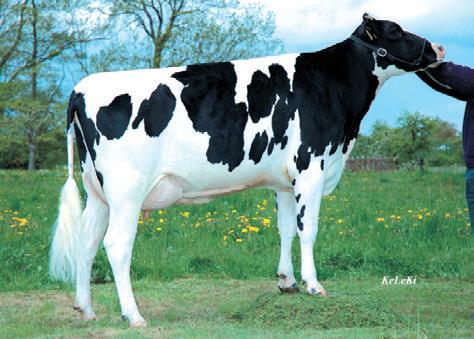
Average prices for the next few months have climbed from below €4,400/t (£3,906/t) to nearly €4,600/t (£4,084/t) and


Q3 contracts are back to more than €4,700/t (£4,173/t).

It is a good sign, but as with the real markets, it is too soon to say if this is just a short-term rally or something more substantial.
EU SMP prices are yet to move in earnest. New Zealand futures, though, have been stable and have been looking for direction from the GDT auction, which has had a three-week gap.
73 MILK ANALYSIS MARCH 2023 Growvite Forte may have the answer Gro wvite Forte sup plies Seleni um, Io dine, Man ganese, Co ppe r, C obalt, Zi nc and many other nutrients essential for Fertility in Cows. Growvite Forte th e oral mineral vitamin supple ment has pro ven trial results: 07594244303 DAIRY VENTILATION • High efficiency, low noise • Keeps air moving & cows cool • Improves cattle health & productivity Install a Multifan Dairy Fan now! KEEP COWS COOL! 01845 578 325 • www.daltonengineering.co.uk Reduce heat stress for happy, healthy, productive cows
equivalent
be in the
30p
e Defra price is now sig-
out-performing the
and MCVE prices due
costs, the farmgate
would
high
range.
ni cantly
AMPE
Jan 24 25 26 27 30 31 Feb 1 2 3 6 4,650 4,600 4,550 4,500 4,450 4,400 4,350 4,300
NEWProducts
This month, we feature a pasteurisation system using UV light, an exo-skeleton to support dairy farmers, a rodent detection paste, a new colostrum unit and online ordering for eartags.
Rodent watch
JBASF has launched its new Monitoring Paste in the UK. A non-toxic product, the paste is designed to help pest controllers and farmers detect early rodent activity and make tackling infestations quicker and more effective. The 14-gram block features a pre-made hole for easy securing and comes with a perforated wrap to allow aromas to escape.
Billed as an essential tool for early-stage rodent detection, the paste helps prevent an infestation establishing. Designed for use in integrated pest management (IPM) rodent control with Selontra, BASF recommends switching to Selontra once the presence of rodents is evident.

rMore information at training.selontra.com
Pasteurisation is light work
Lyras, a Danish company specialising in sustainable pasteurisation technology, has launched a new pasteurisation concept which uses light to treat liquid products.
Raslysation, designed to operate more sustainably than existing methods, is a nonthermal treatment.
It uses ultraviolet (UV) light at a specific wavelength to pasteurise opaque liquid food and non-food products, including dairy, juice and enzymes.
Bacteria
The liquid is directed past the light source in a controlled movement, so that everything is illuminated with the UV to inactivate bacteria and other microorganisms.
Already retailing in other parts of the world, Lyras’ core
The Raslysation Sirius units in prodction.
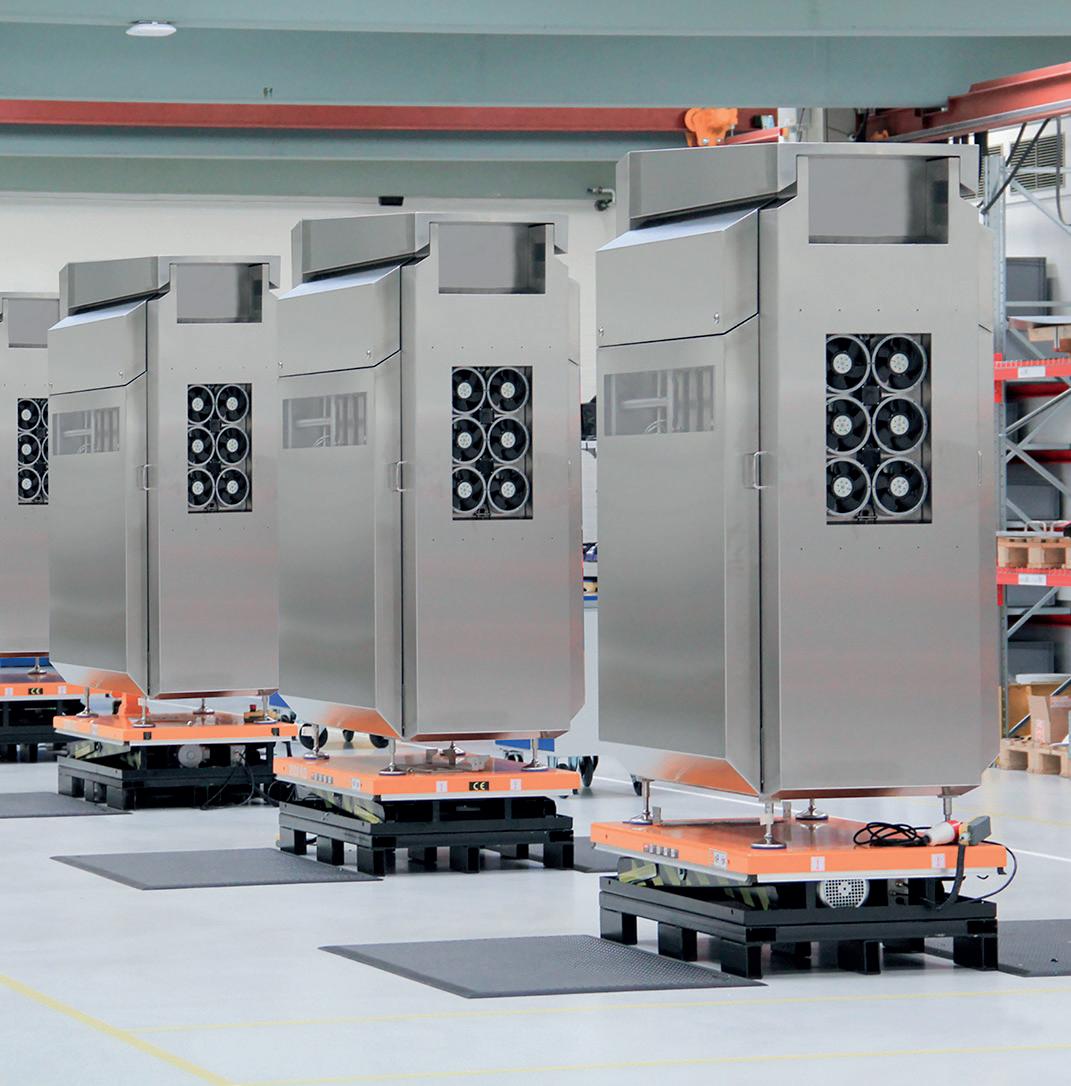
systems, the Raslysation Sirius and the Raslysation Spica can be scaled and customised
New support in the milking shed
JNew from Dairy Spares, the exo-skeleton called MATE-XT is a new device designed to provide support to the wearer’s upper body when lifting or moving low-weight items repetitively, thereby reducing the effort required and reducing muscular fatigue.

The device, launched at this year’s Dairy-Tech event, does not require motors or batteries
and works via springs. Weighing 2.9kg, it is worn on the back like a rucksack with a belt around the hips.
While commonplace in the car manufacturing industry, the MATE-XT is the first one to be made available to UK farmers.
The MATE-XT is available in two sizes and has a recommended retail price of £4,495 +VAT. rMore from dairyspares.co.uk
to industry specifications. rMore information can be had from lyras.com
74 MARCH 2023
New products are featured in each issue of Dairy Farmer.
details and pictures
Park at
450. Got a new product?
J
Please send
to Hannah
hannah.park@agriconnect.com, or call 01772 799
Colostrum treatment made easy
JA new hi-tech unit for the pasteurisation of colostrum, the Trusti Pasteur Pro, is now available from Dairy Spares.


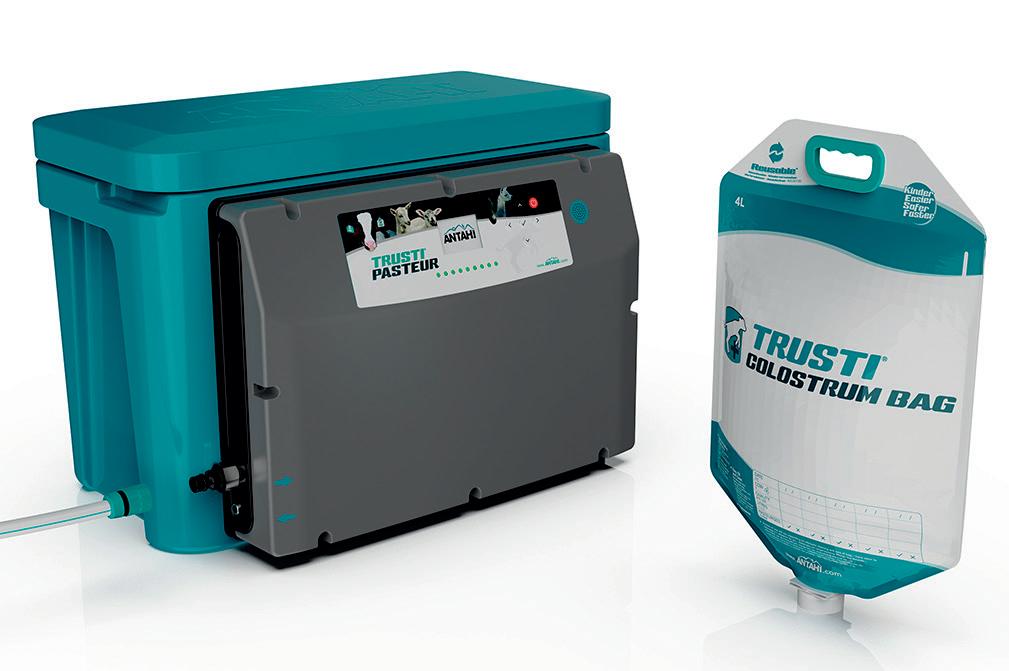
Developed by New Zealand company Antahi, the new Trusti Pasteur Pro provides dairy farmers with an easyto-use automated system for pasteurising colostrum in Trusti colostrum bags.
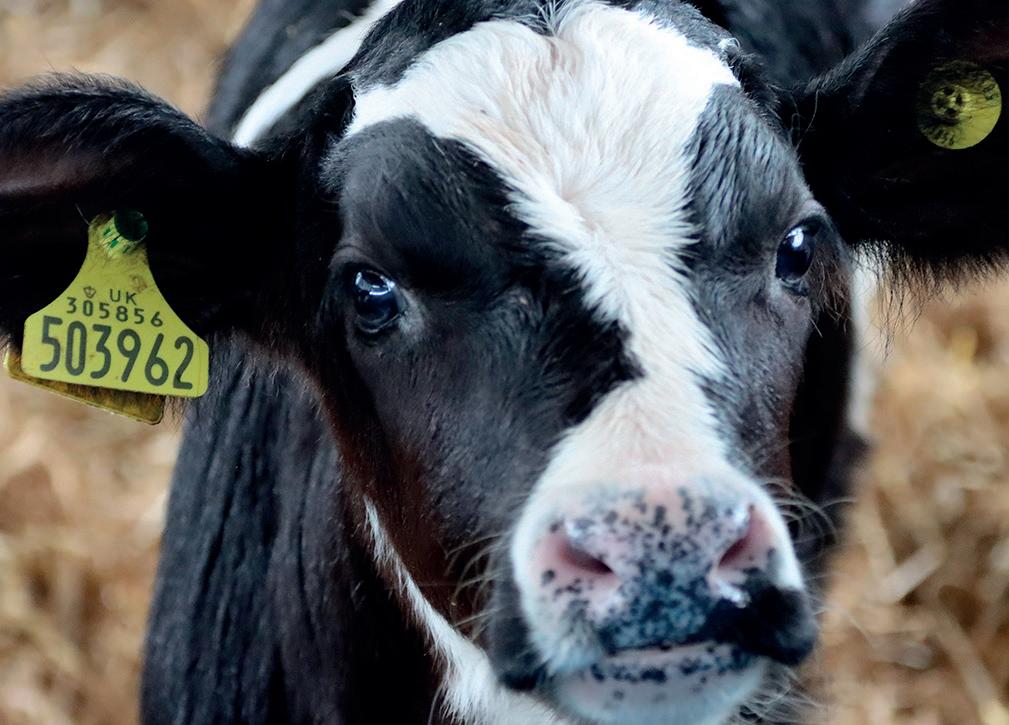
Users can choose from seven different programs for
heating, cooling, thawing and warming with the device also including a quick-thaw program where frozen colostrum can be quickly thawed in pre-heated water.
The Trusti Pasteur Pro is supplied as a complete colostrum-handling system with a recommended retail price of £2,495 +VAT.
rMore information from dairyspares.co.uk
Online move for eartag system

JUsers of NMR’s Nordic Star eartags can now order them online using the UNIFORM program.
The ordering system has been successfully trialled in 2022 and is now available nationally, with the function included in the most recent UNIFORM update, which is
currently being installed on farm. Nordic Star tags bought through UNIFORM are invoiced once the order is processed. New users can follow a video guide to take them through the process.
rMore information from NMR customer services on 03330 043 043
Tub Grinders
Feed Processing Specialists

- Exclusive UK Distributor of Haybuster & Rotogrind Grinders.
- Range of models from 5t - 25t / hour output.
- New, used & refurbished machines available.
- Ideal for straw, hay, green waste, roots, biogas feeds etc.



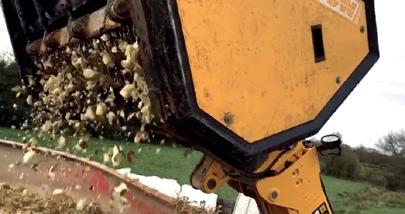
Root Choppers & Cleaners
- Loader, 3 point linkage, free standing PTO and electric drive available
- UK Distributor of VDW range of choppers, cleaners & feed dispensing equipment
- Output from 10t/hour to over 120t/hour available
Diet Feeders
- Largest stock of mixers in the UK - over 50 ma chines in current stock

- Refurbished, used & nearly new units available
- New Mini Mixer available
- Diet feeder parts available- Blades, Conveyor belts, gearboxes, weigh cells.
- All feeders undergo 30 point service
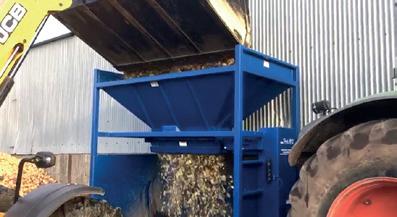
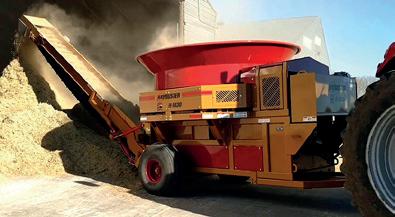
- Finance available subject to terms



- Nationwide delivery available
Current Used Stock:
- Trioliet 16, 20 x 2
- Strautmann 12, 20, 27
- BvL 10, 20, 27
- Kuhn 14, 27
- Siloking 14 duo - Shelbourne 11, 13, 16, 19 - Hi Spec 20 - Redrock 14
Profi Root chopper x 2

75
MARCH 2023
NEW PRODUCTS
Please visit www.enegis.co.uk for more photos or call 01789 205132 or 07721
442979
-
Ensure your Future with British Friesians Gain 15.7 Fertility Points 55 Days of Lifespan Male Calf Value & Heifers to sell Lower Vet & AI Costs, all without the use of expensive Sexed Semen AHDB Dec ‘22 * The Only Outcross for Pedigree Breeders * *
- VdW RS Root chopper - Farmhand Tub Grinder
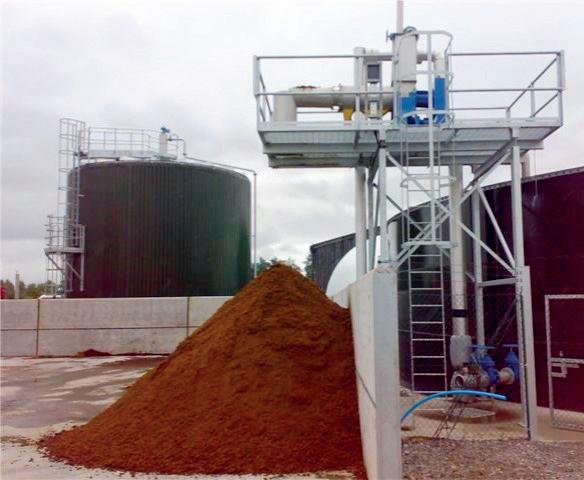




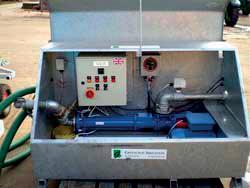






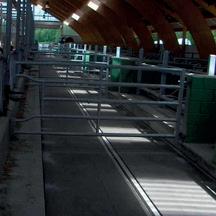
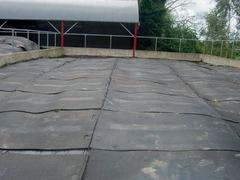


Delaval mobile milking bale for hire/sale. Delaval Blue Diamond 32/32 fast exit MM25s. Save energy, Ice Builders : Bulk Milk Tanks. Heavy duty replacement troughs for most parlours. Delaval VMS Robots : Milk meters, keypads, feeders etc. Everything for the Dairy Farmer Call Vic/Tracey Brown Tel: 01260 226261 www.milkingequipment.com Milking Equipment 76 MARCH 2023 Equipment & Accessories SEPCOM The unique separator Slurry pumps & lagoon mixers 01328 701992 | enquiries@greencrop co.uk | www greencrop co.uk Multicam dirty water irrigator Slurry pump Pump in a box DAIRY FARMER CLASSIFIED TELEPHONE: 01772 799400 Livestock 1 8m x 1 2m / 6ft x 4ft Each 30kg Per Mat Easy Grip Handles Animal Proof Weather Resistant 100% Rubber Construction R U B B E R S Y S T E M S F O R A G R I C U L T U R E DAIRY MAT ARK www arkmat co uk C a l l o r E m a i l F o r P r i c i n g A n d F u r t h e r D e t a i l s 01392 209 394 info@ark-rubberandresin co uk PARLOUR MATTING HEAVY DUTY SILAGE PIT MATS SUPERSOFT CUBICLE MATS ALLEY MATS 5 YEAR GUARANTEE DAIRY FARMER CLASSIFIED 01772 799400 Building Services SPRAY FOAM INSULATION To Crop & Livestock Stores, Poultry Sheds, Cattle & Pig Buildings, Workshops & Barns. Frost & Condensation Protection. Temperature Control Energy Saving Tel: 01405 812682 www.webstersinsulation.com info@webstersinsulation.com
Nationwide (01948) 662910/663143 george@greenfieldsrise.f9.co.uk

APPLE CIDER VINEGAR (ACV)

SOLUTIONS
PROBLEMS WITH HIGH SCC /MASTITIS? - WANT TO REDUCE USE OF ANTIBIOTICS? - COST EFFECTIVE PRODUCTS WITH EASY WATER TROUGH ADMINISTRATION - DISCOUNTS - WE CAN HELP WITH SHEEP PROBLEMS TOO - CALL FOR A FREE SAMPLE KIT
Ask about Herd Health Analysis
T . 01756 749444 W . www.crossgateshealth.co.uk

S.Q FLECKVIEH
ELITE GENOMIC BULLS FOR SALE
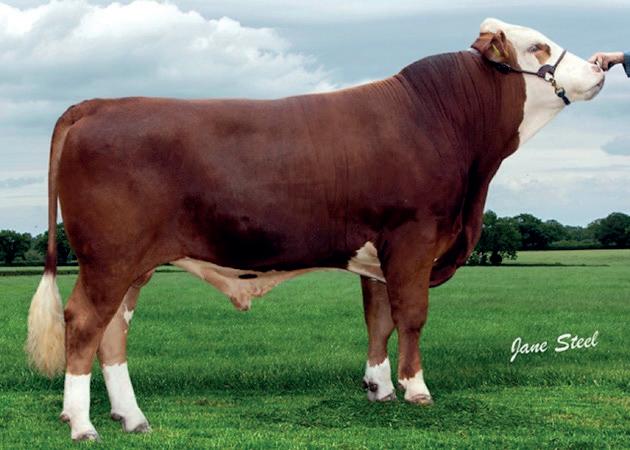
Business Development Manager
Agriconnect is a business unit within the Arc network, a global events, data, and media platform. Arc is a fast-growing global events, data, and media platform with a varied portfolio content led portals, magazines, and events. Agriconnect’s mission is to empower, inspire, and connect people and business in agriculture by creating trusted content and connections that help the industry thrive.
Since 1844, the brands of Agriconnect have been the trusted source of information for farmers and with brands like Farmers Guardian, events, like LAMMA and Farm Business Innovation, and digital platforms, like FG Insights, Agriconnect continues to bring together the British farming community.

THE ROLE:
• We are now looking for a motivated and driven salesperson to join our Sales team.
• The main function of the role is to develop business through growth in revenue, yield, and to increase customer numbers. You will be required to identify new opportunities and influence companies’ media buying habits within the agricultural sector. Due to the ever-changing nature of the industry, this person will have the ability to spot new avenues and exploit market trends.
• Hours: 35 hours per week – Mon – Fri
• Location: Preston – temporary hybrid remote
• Salary: Competitive, dependant on experience.
SKILLS & EXPERIENCE:
• Own, support and fully develop specific market sectors
• Conduct sales presentations by telephone, email or face to face to existing and prospective clients in order to develop existing business and generate new business wherever possible.
• Advise existing and new customers on the most effective solution to meet client needs within the Agriconnect portfolio.
• Continually seek and develop new sales & opportunities.
• Ability to accurately forecast future sales
• Keep abreast of all current trends, activities and relevant news within agriculture and specific sector
• An interest in agriculture
• Highly motivated & driven, with an ability to meet ambitious performance goals
AI STANDARD FROM AUSTRIA TYPE AND QUALITY BULLS GUARANTEED ARRIVING EARLY MARCH 2023, VALUABLE CALVES NEXT YEAR ***LAST IMPORTATION THIS SEASON*** PRE-ORDER NOW.
Tel: Jim Hamilton 07590 444732 visit our website www.fleckviehgenetics.com
Animal Health
Organic Laboratories
High Cell Counts Cost Money
3 Reduce cell counts & Mastitis cases
3 No milk withdrawal & Boost animal immune system
3 Simple water trough treatment
tried the rest, Now try the best”
Homeopathythatworks
Supplying the Farming industry with Homeopathy
For over 30 Years On Farms Everyday Tel: 07885 497852 or 07802 199901
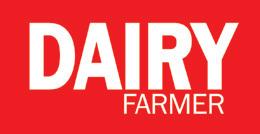
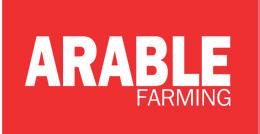
• Be enthusiastic and motivated to continually explore new opportunities, whilst possessing a natural inquisitive nature
• Excellent communication written and interpersonal skills
We offer an excellent package including:
• A competitive basic salary
• 25 days holiday increasing to 27 after two years
• An extra day off on your birthday
• Free life assurance
• Contributory pension scheme
• Employee assistance programme
Arc has ambitious plans for growth, and this is an opportunity to be part of our continuing success story whilst enjoying a fabulous work/ life balance.
We strive to create a culture that is open and respectful, where differences are valued and celebrated. We want everyone to be able to reach their full potential, so we are committed to cultivating a company that promotes inclusion and belonging.
To apply for this role, please email amber.tabiner@agriconnect.com
77 MARCH 2023
Bulls
Recruitment Livestock Services FARM HEALTH
“You’ve
GOODEvans
‘Brexit is surely one of the biggest cons of all time’
There have been lots of adverts on our TV for Cravendale milk.
Cravendale is produced by Arla Foods, which is not only well placed in the market to be selling milk, but is also noted for how it looks after its producers now and no doubt in the future as well.
These advertisements are based on cows being free to graze and if Arla thinks that there is commercial advantage in being able to say that these cows go outside, then there almost certainly is.
Having a herd of cows which lived indoors was never for me, fetching the cows at milking time was always one of my favourite jobs. But I also know that you could never take 1,000 cows through a muddy gateway.
There are important messages here and, if you are planning a new unit where the cows are housed all the time, it is as well to take note.
Beavers
Cows aside, beavers are now to become a part of my life as they are set to be released into the area soon. I don’t remember anyone asking me what I thought about this.
The trouble is that beavers will open the door for all sorts of other species.
And on a similar note, how long will it be before someone gets killed by a bison which has escaped? Bison, we were told, browse the trees and undergrowth and only do good.
You could browse trees and undergrowth
with a machine and in 24 hours you could do as much as two bison will do in a year. Usually a species became extinct for a good reason. That is why little children can play in school playgrounds safely without a pack of wolves coming over the wall.
If you don’t like beavers and what they do, you will have to be quite shy about it because they are also protected.
Rewilding ban
When I am Prime Minister, and it is only a matter of time before it’s my turn, I will ban all rewilding.
No-one has yet said if beavers can get TB. I bet they can.
I haven’t heard anything about mink lately. Now, there is an animal that kills all day long, but is apparently okay nonetheless. Nothing is said about mink.
When a lynx attacks a sheep, as it inevitably will, that well-known commentator on all things in the natural world will describe it as natural predation.
That is a sort of benign description of what goes on. I wonder if we will ever see a picture of a sheep with its guts hanging out. As far as I know, no-one has asked the sheep.
Farmers have a hard time ahead of them. Remember that it was Liz Truss who has already done trade deals in Australia and New Zealand. As we now know, Ms Truss was not big on judgement.
Food prices are, we are told, a big part
This month, Roger Evans discusses the debate surrounding all-year-round housing of cows, shares his thoughts on rewilding and muses about the current state of politics.
78 MARCH 2023
of inflation and those food prices will be targeted to bring them down. The message is: “Bring inflation down and we might win the next General Election.”
In the meantime we will see just how much the Government thinks about food security.
Politics

Over the last few years I have been very interested in politics. Mainly because I got the last election wrong and I got the Brexit referendum wrong.
Brexit has to be one of the biggest cons of all time – we are still waiting to see the benefits we were promised.
I do not yet know if I can bring myself
to vote Conservative again. We have a Conservative MP around here in a fairly safe seat.
Personal
It is a personal thing I know, but I was once introduced to him and he has a handshake very much like a dead wet fish. I am not sure yet if I could vote for him.
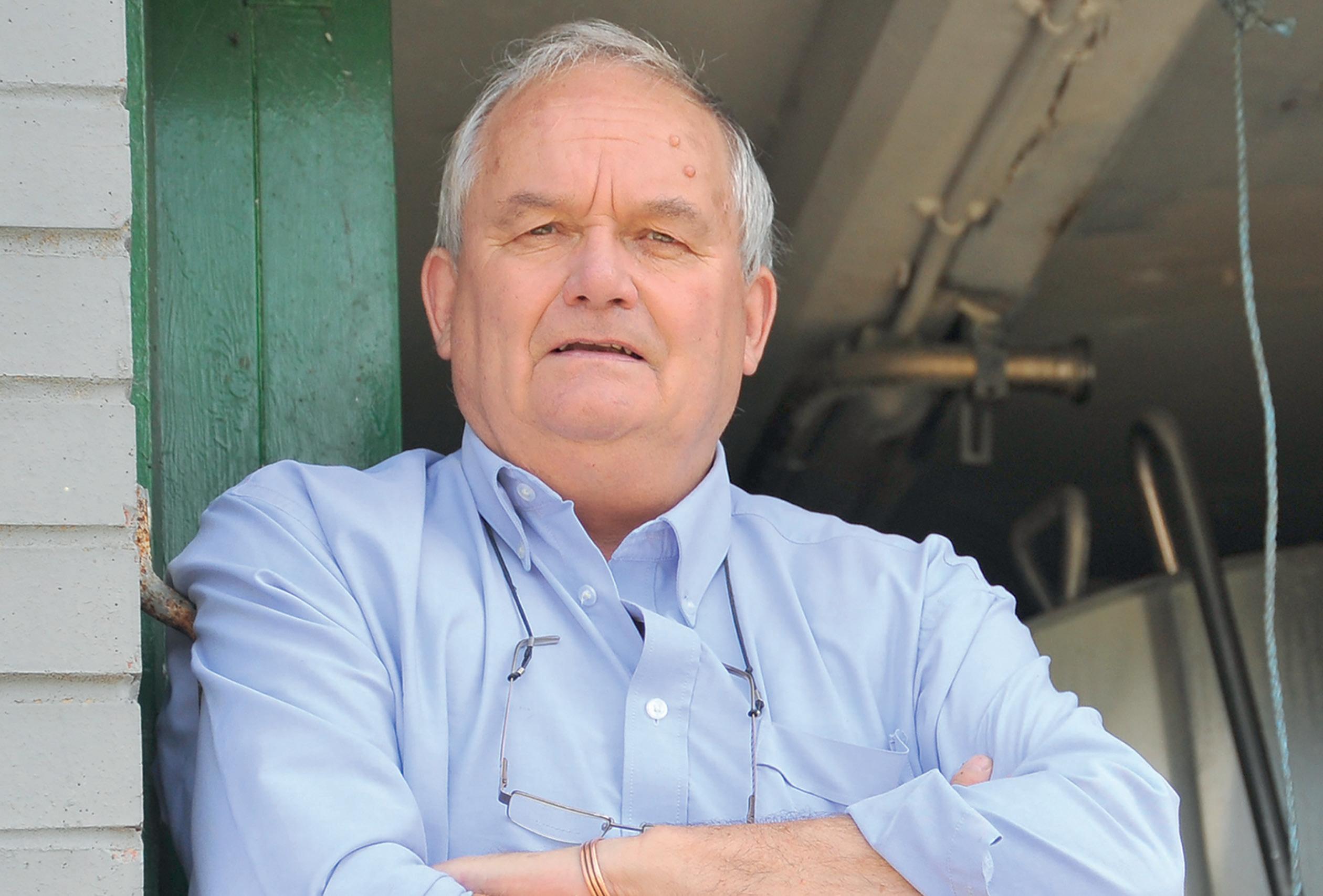
There is one thing I do know about politics and that is that if a party is in office for too long, everything goes wrong. They get arrogant and trip over their own egos.
They will suffer a fall and bring the country down with them. All for a ride in a Ministerial Range Rover.
Browse, list and apply for hundreds of the latest roles at jobsinagriculture.com 79 MARCH 2023
“There is one thing I do know about politics and that is that if a party is in office for too long, everything goes wrong
The drop in milk prices is rapid and many gains made in 2022 have been wiped. The decline is being driven by turbulence on the global market, but when can producers expect values to turn a corner? Cedric Porter reports.
Global price fall governs UK milk market
Acombination of a production response to higher milk prices and consumer resistance to higher dairy product prices is responsible for the current squeeze on dairy values, says Mary Ledman, global dairy strategist at RaboResearch.
She says: “ e underlying global market fundamentals remain skewed to the downside. Much depends on internal Chinese policies and broader resilience for dairy demand.
“Weaker supply growth has kept dairy commodity prices rela-

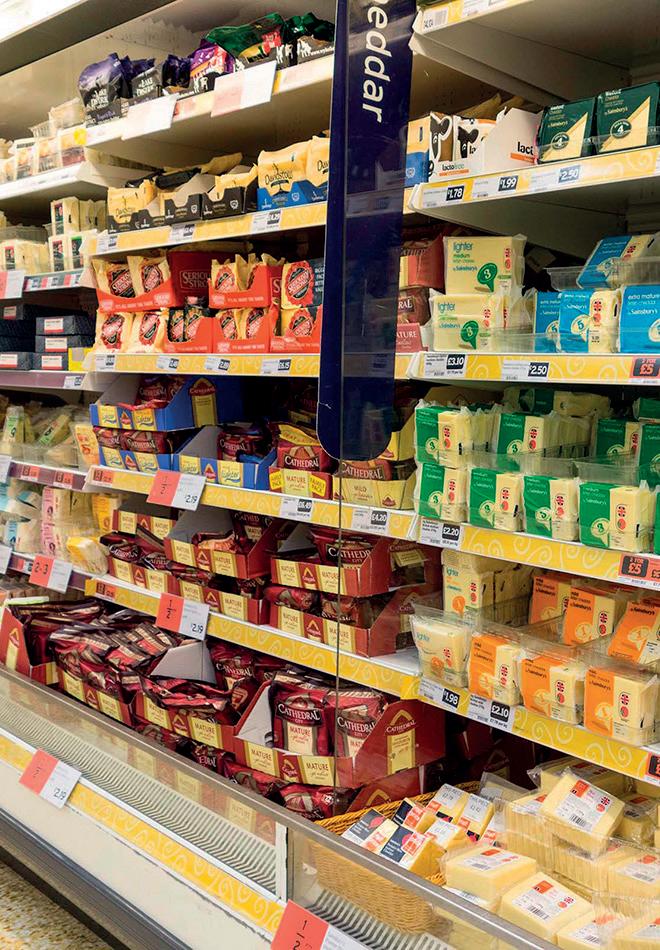
tively elevated, but growth is on the horizon – albeit fragile.
Improvement
“Dairy demand is likely to get weaker in the short-term before any remarkable improvement, with many economies experiencing broad-based food in ation.
“Any potential upside rally hinges on a supply shock in the northern hemisphere or a meaningful reopening of China in the new post-Covid-19 world.”
e fall in UK and global wholesale dairy product prices has been almost as dramatic as the increase in values from
the middle of 2021 onwards.
UK wholesale bu er prices jumped by 86% between July 2021 and June 2022 to more than £6,000/tonne, according to AHDB gures, but by January 2023 they had plunged 30% to £4,200/t.
Mild Cheddar was trading at £3,000/t in July 2021. It hit £4,860 in October, but fell 13.5% by January. Skimmed milk powder rose by 60% and then fell by a third over the same timeframe. UK bulk cream prices doubled in the year to July 2022, before falling 40% by January.
e volatility of the UK wholesale market mirrors that of other countries, although the
Percentage in global dairy wholesale prices from July 2021 to December 2022
increase in British prices was, in many cases, more dramatic and the decline since the peak steeper.
Figures from the US Department of Agriculture show that bu er prices in the USA, Oceania and EU rose by 59% from July 2021 to their 2022 peak and had fallen by 17.7% by December 2022.
Skimmed milk powder prices rose by 46.2% before falling by 28.8%, with Cheddar cheese prices in the USA and Oceania up 47.2% then down 16.4%. Price falls came earlier and were more dramatic in the more export-focused Oceania and EU regions than in the USA, where a large domestic
80 BUSINESS CLINIC MARCH 2023
Butter Skimmed Whole milk Cheddar Bulk milk powder powder cheese cream USA: Peak % 2022 increase on July 2021 price 87.7 45.9 35.1 51.4 not quoted % change on December 2022 price vs. peak 2022 price -13.0 -20.5 -2.6 -14.9 not quoted Oceania: Peak % 2022 increase on July 2021 price 51.9 40.2 9.2 50.2 not quoted % change on December 2022 price vs. peak 2022 price -31.4 -32.5 -23.0 -21.3 not quoted EU: Peak % 2022 increase on July 2021 price 68.9 52.9 52.4 not quoted not quoted % change on December 2022 price vs. peak 2022 price -21.1 -32.3 -23.8 not quoted not quoted USA, Oceania and EU average: Peak % 2022 increase on July 2021 price 59.0 46.2 29.1 47.2 not quoted % change on December 2022 price vs. peak 2022 price -17.7 -28.8 -14.3 -16.4 not quoted UK: Peak % 2022 increase on July 2021 price 86.4 62.6 not quoted 63.1 89.5 % change on December 2022 price vs. peak 2022 price -23.3 -29.2 not quoted -8.8 -28.6
AHDB
Source: USDA and
Record wholesale prices led to record consumer prices and subsequently reduced demand in 2022.
market has supported prices. Record wholesale prices led to record consumer prices and subsequently reduced demand. e retail price of UK dairy products increased by between 8% for yoghurt and 22% for fresh milk during 2022, according to market researchers Kantar.
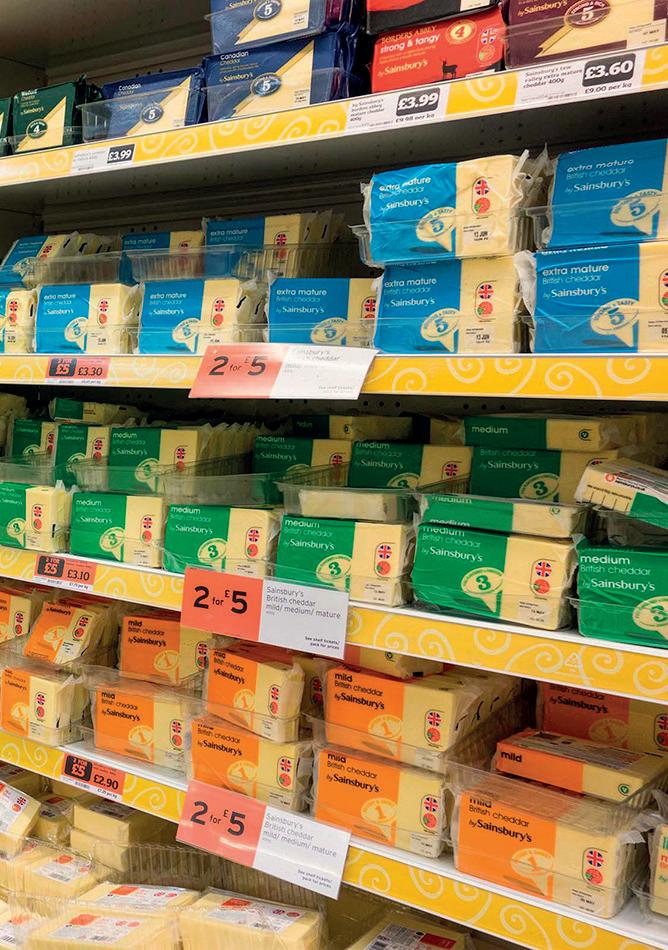
ese increases led to a drop of 4.7% in cheese consumption and an 8.7% drop in sales of bu er and bu er alternatives. At the end of the year, retail prices for cheese, bu er and milk were still increasing.
Recent
e increase in production has been relatively recent and not yet dramatic, showing how sensitive the global market is. Figures collected by AHDB show that up until August 2022, average daily production in the six most important dairy exporting countries and regions of the world was lower than the previous year. By November, average daily milk output in Argentina, Australia, the EU, UK, New Zealand and the US was up 0.8%.
e increase in EU and UK output was greater at 2.1% and 3.2%, respectively, meaning extra milk weighed more heavily on the market. Production in the southern hemisphere countries
was still down on the corresponding month in 2021, while it was up 1.3% in the USA.
e turmoil on the global market is being felt on-farm, with large decreases in prices already announced and producers bracing themselves for more. Average milk prices look like falling from, in many cases, above 50ppl at the end of 2022 to much nearer 40ppl by the end of March. Values could fall even further, but they could bo om out faster than in previous slumps.
John Allen, managing director of Kite Consulting, says: “With the cost of production for most producers at between 43ppl and 45ppl, few farms will be able to sustain much lower prices for long and many will cut down on the number of cows, while others will get out of milk altogether.
“ at will tighten supply and stabilise prices which can hopefully then lead to an increase in values again. It may be that it is suppliers to the liquid market who are more protected from a fall in prices than those

to manufacturers, because they are less exposed to the global market.”


Importantly, farmgate milk prices are decreasing in other countries too, with a drop in prices in the US and New Zealand and declines expected across Europe. ere are also signs the global market may have bo omed out.

e latest Global Diary Trade auction held on 7 February was 3.2% higher than the previous one, although it was still a third lower than last March’s peak. e biggest gains were in bu er prices. at should help push pressure on production elsewhere and stabilise wholesale prices.
In the longer term, growth in the dairy market is still expected. e latest report by the UN Food and Agriculture Organisation and the Organisation for Economic Cooperation and Development predicts annual dairy consumption will increase by 1.4% a year over the next decade, a slightly higher rate than the last 10 years.
81 BUSINESS CLINIC MARCH 2023 From combines to culitivators and everything in between, you’re sure to find what you need on FGBuyandSell.com. Start listing your items FREE today! Browse. Sell. Buy at FGBuyandSell.com
New project looks to identify barriers to Johne’s control
Rated as the number one endemic disease a ecting productivity on dairy farms across the UK, Johne’s is a disease everyone in the industry is keen to get on top of.

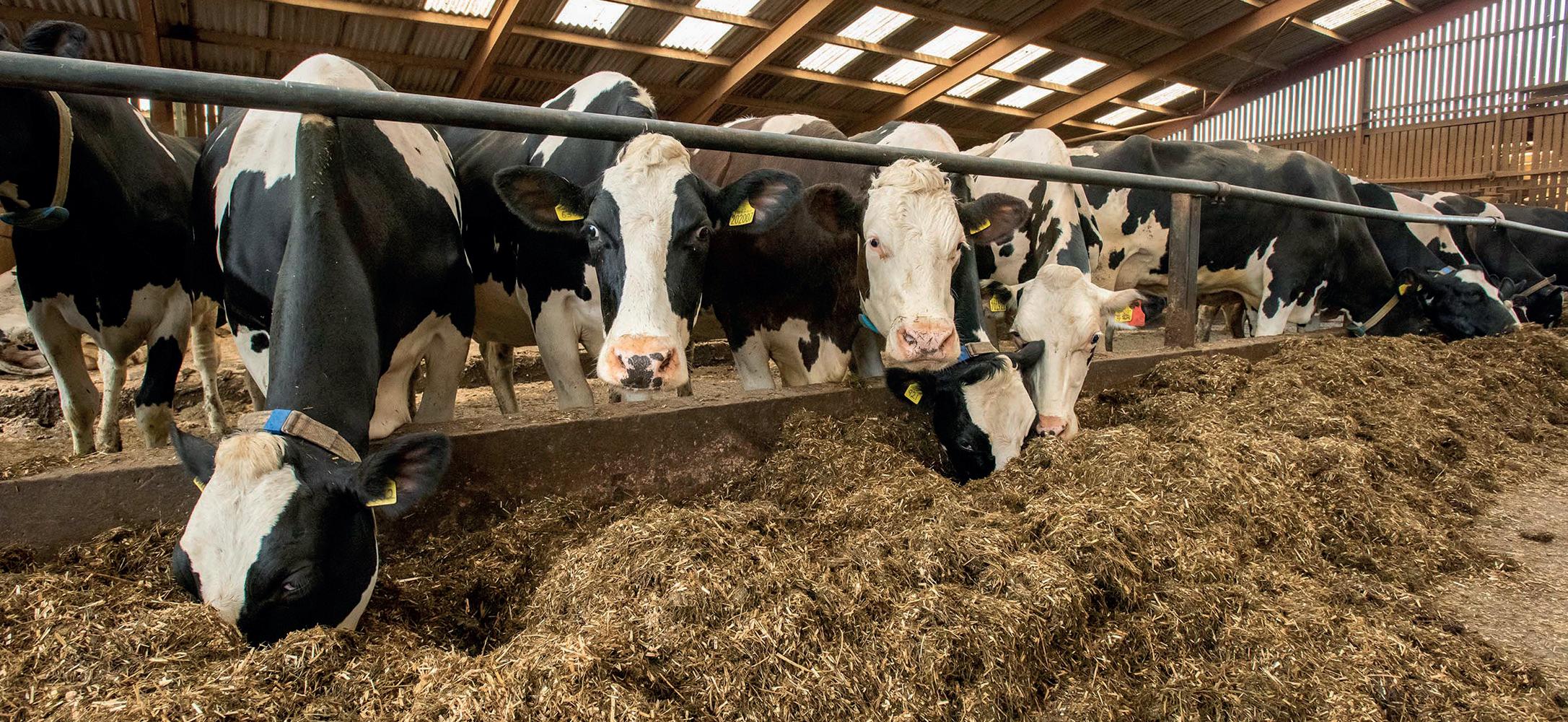
In an a empt to aid disease control, Cran eld University, together with industry experts, is leading a social science research project to understand the barriers both dairy farmers and vets are facing in the ght against Johne’s.
Pete Orpin, chair of the Johne’s Action technical group, who is leading the project’s knowledge exchange, says when it comes to Johne’s a lot of the success in controlling the disease is about behaviour change and people’s beliefs.
He adds that part of the project will be about refreshing people’s concepts of controlling the disease and understanding what the road blocks are to successful control.
As Johne’s disease is now a signi cant part of the Red Tractor
standards, Mr Orpin says even though 70% of dairy farmers are already undergoing strategic testing, there is still further work to do with the other 25% of farmers, who are not as engaged.
He says: “We have to explore how we can get be er engagement and be er results from the 70% already doing the work. But also how we can best help the remaining 25% of farmers to become more engaged with the programme.”
Control
Previous research carried out before this project found that 40% of farmers were testing for Johne’s, but not controlling the disease.
Mr Orpin says: “We realised that no number of tests will help if we are not using the results to the best e ect.”
e project which will complete in September this year will include 20 workshops throughout the UK speaking with vets and dairy farmers, while carrying out in-depth
interviews to look more closely at the major challenges farmers are facing with regards to Johne’s control.
Rosie Morrison, research assistant at Cran eld University, who is leading the social science work, says: “We already understand Johne’s and how to control it, but those controls are not being implemented on-farm that frequently. is project is about bridging the gap and understanding what is happening on the ground.
“ e challenges farmers are facing are justi ed and no-one is right or wrong. We just want to understand why.”
Ms Morrison hopes the results will help vets, industry experts and policymakers to design control methods which are easier to implement on-farm and understand the challenges farmers are facing.
Vet Will Gratwick, of LLM vets, whose practice is involved in the project, believes one of the main barriers to controlling the disease is perception.
He says: “ ere is the perception
with some farmers that they do not have the space or the facilities to implement controls, which can be a limiting factor to some extent. Hopefully in the meetings we can get across that there are other ways to approach controlling the disease.”
Value
Mr Gratwick says the project will be of great value to both farmers and vets, with the workshops providing a useful refresher for vets on recent research, while providing a platform for farmers to discuss their challenges and share solutions.
As part of the project, a method of environmental sampling commonly used in other parts of the world is being trialled in Northern Ireland to identify infections within dairy herds.
It is hoped the environmental sampling will help to develop more e cient disease controls, which together with the social science research, will provide the whole package in terms of Johne’s control.
82 RESEARCH MARCH 2023
A new research
project led by Cranfield University aims to understand the challenges both farmers and vets face when implementing Johne’s controls on-farm. Katie Fallon reports.
It is hoped the project will help vets, industry experts and policymakers to design Johne’s control methods which are easier to implement on-farm.
Panoramic 27.6


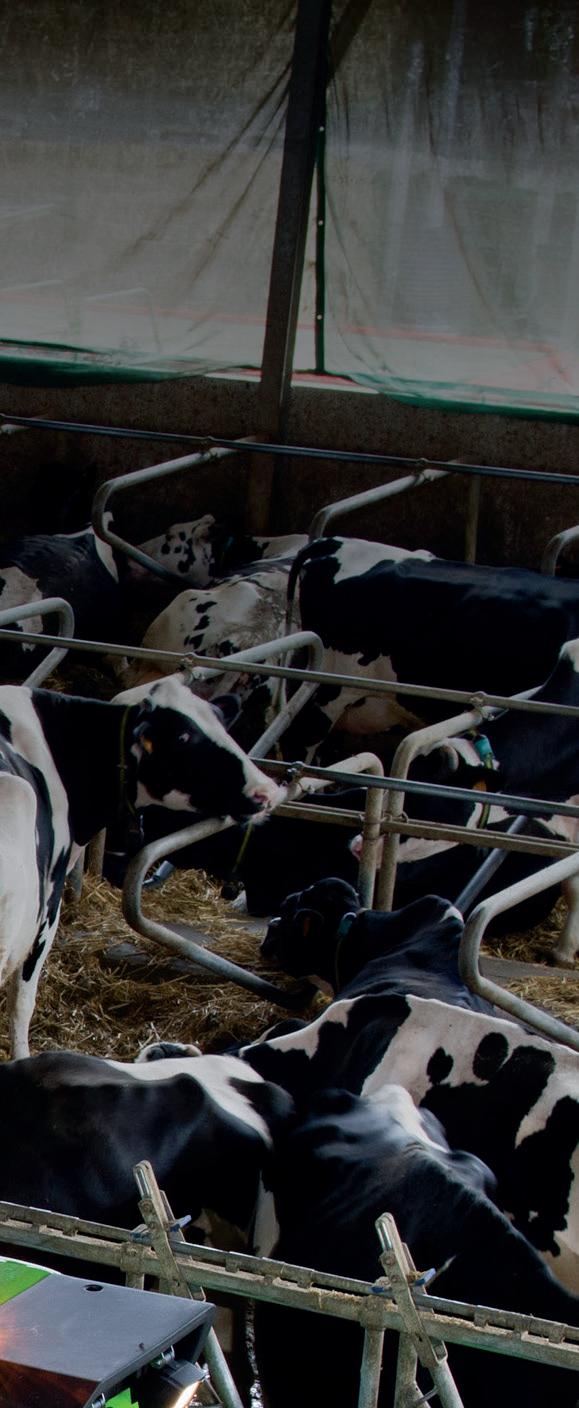
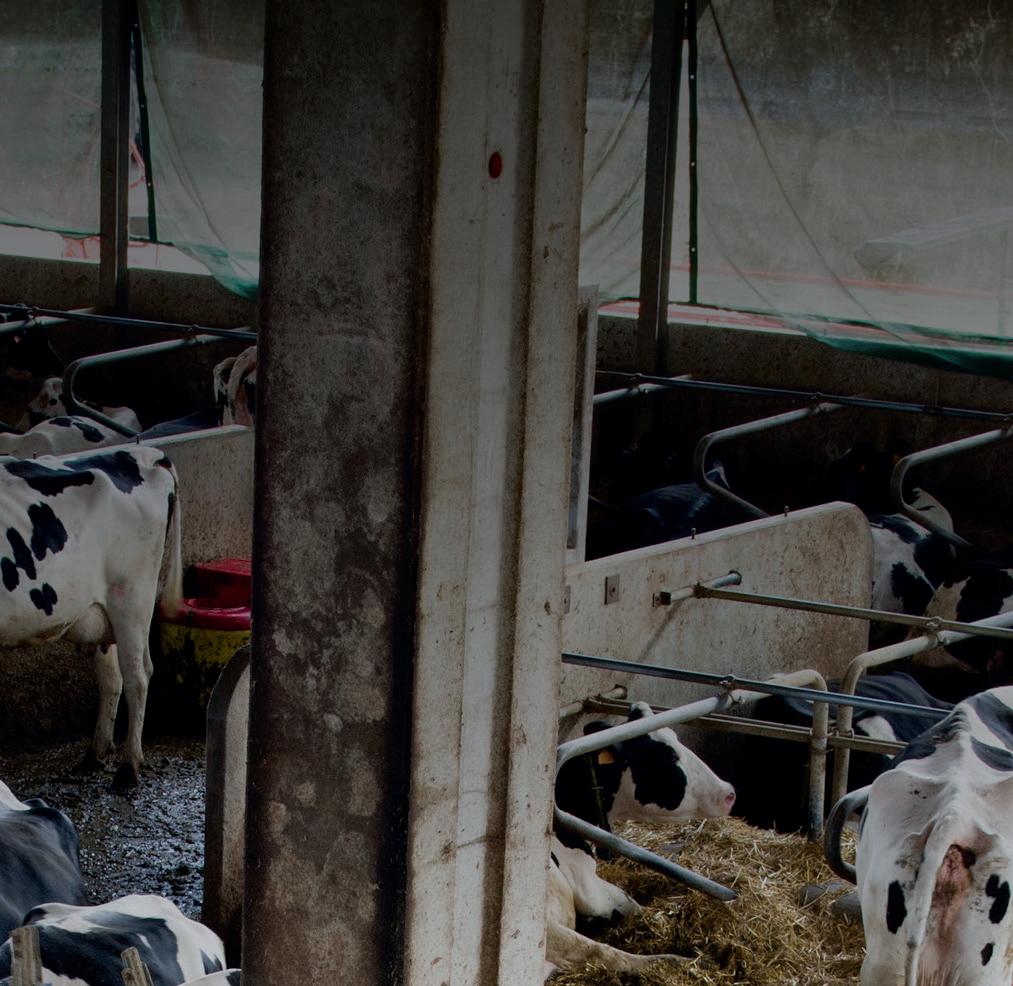
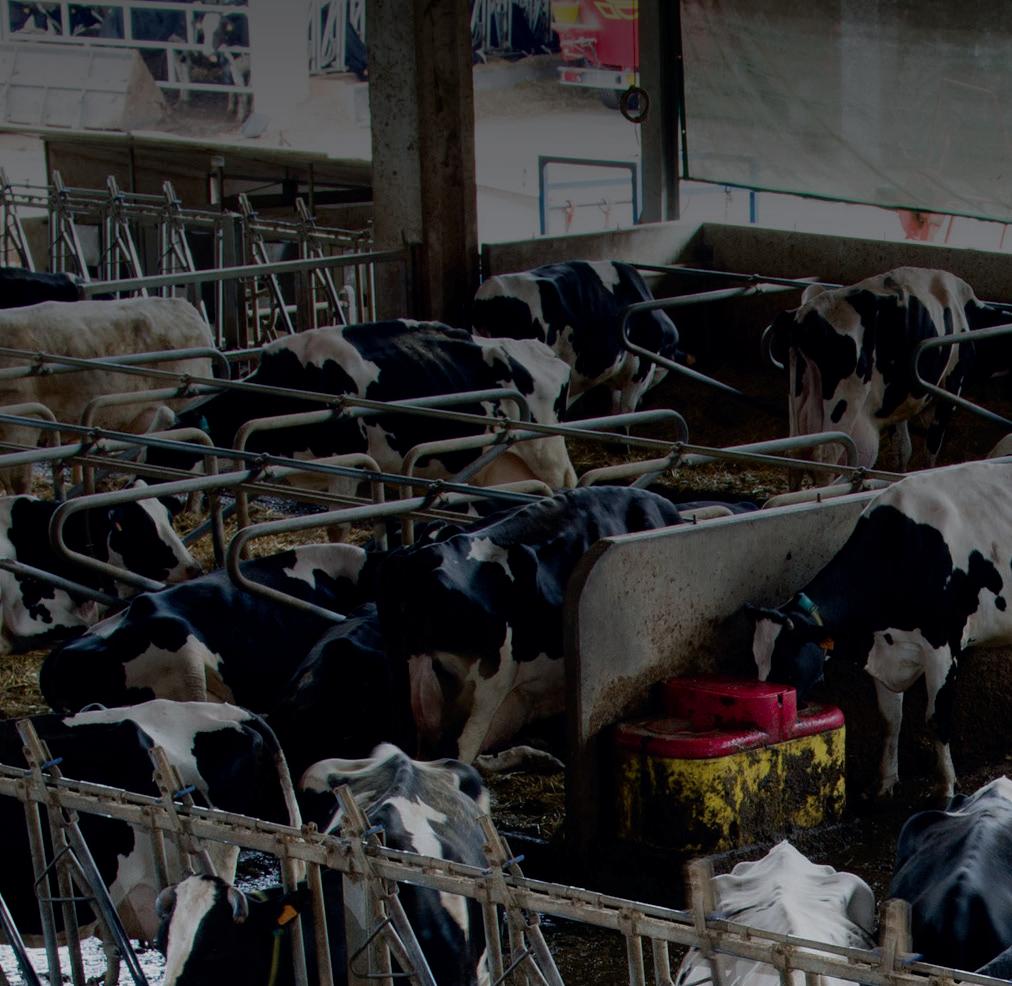
Don’t settle for second best

T





ENGINE 75 LIFT HEIGHT LIFT CAPACITY 5.9 2.7
The Ultra Compact P27.6 has been developed as a high performance, compact telehandler. Measuring 1.86 m wide and 1.96 m high, this telescopic handler offers unparalleled manoeuvrability and accessibility, lifting up to 2,700 kg and reaching a lift height of 5.9 meters. Find your local Merlo Dealer to find out more on merlo.co.uk.


merlo.co.uk
HELPING END THE NIGHTMARE OF CALF SCOUR FOR A FAIRYTALE START

INTRODUCING FENCOVIS®
Fencovis® is a new vaccine that stimulates immunity against key scour pathogens in pregnant heifers and cows, so that calves receive added protection via the colostrum. Fencovis® prevents diarrhoea caused by bovine rotavirus and E. coli K99 while also reducing the incidence and severity of that caused by bovine coronavirus.
E.
UK:
IE:
SPC
from Boehringer Ingelheim Animal Health UK Ltd, RG12 8YS, UK. UK Tel: 01344 746957, IE Tel: 01 291 3985. Email: vetenquiries@boehringer-ingelheim.com. Fencovis® is a registered trademark of Boehringer Ingelheim Vetmedica GmbH, used under licence. ©2022 Boehringer Ingelheim Animal Health UK Ltd. All rights reserved. Date of preparation: October 2022. BOV-0124-2022. Use Medicines Responsibly. ADVANCING PROTECTION AGAINST CALF SCOUR
Fencovis® suspension for injection contains inactivated
coli expressing F5 (K99) adhesin, strain O8:K35; inactivated bovine rotavirus, serotype G6P1, strain TM-91; inactivated bovine coronavirus, strain
C-197.
POM-V;
POM. Advice should be sought from the prescriber. Further information available in the
or



























































































































































































































































































































































































































































































































































































































































































